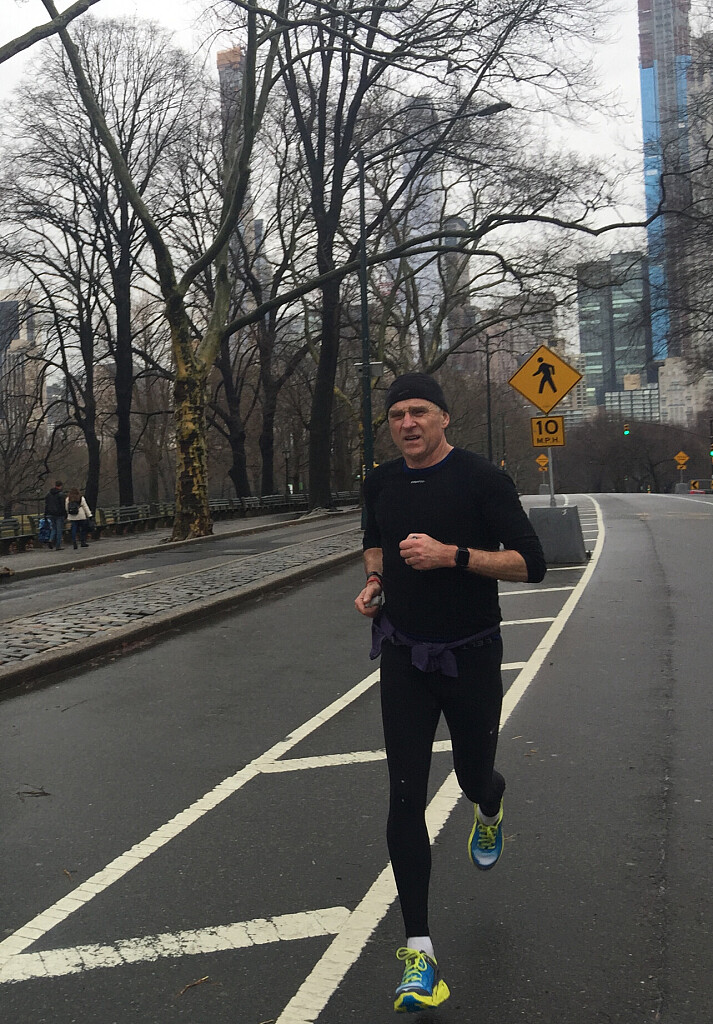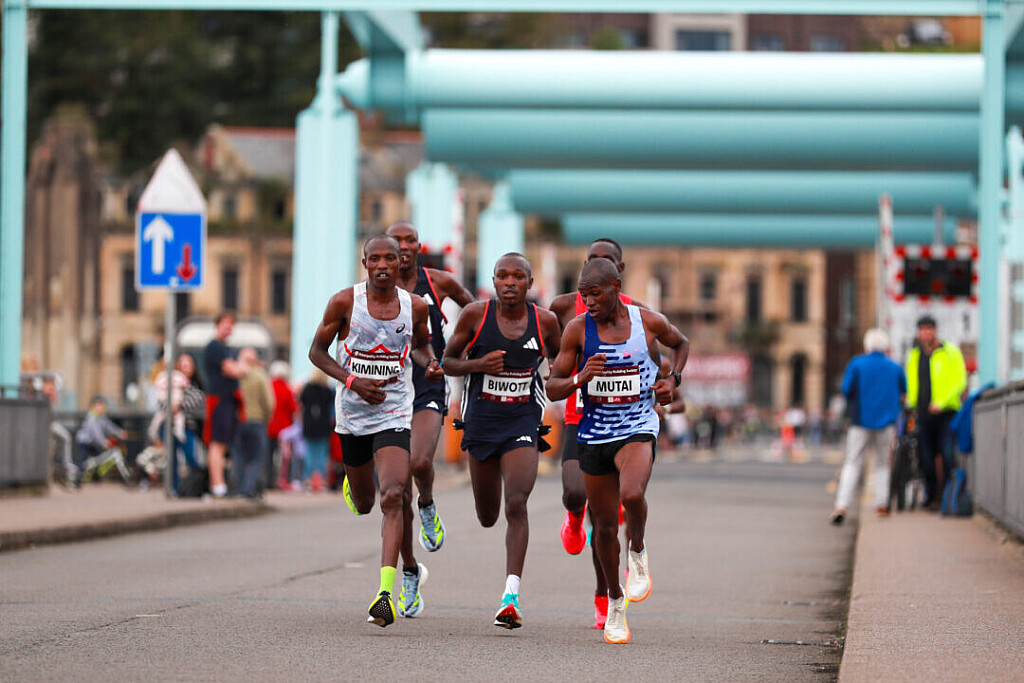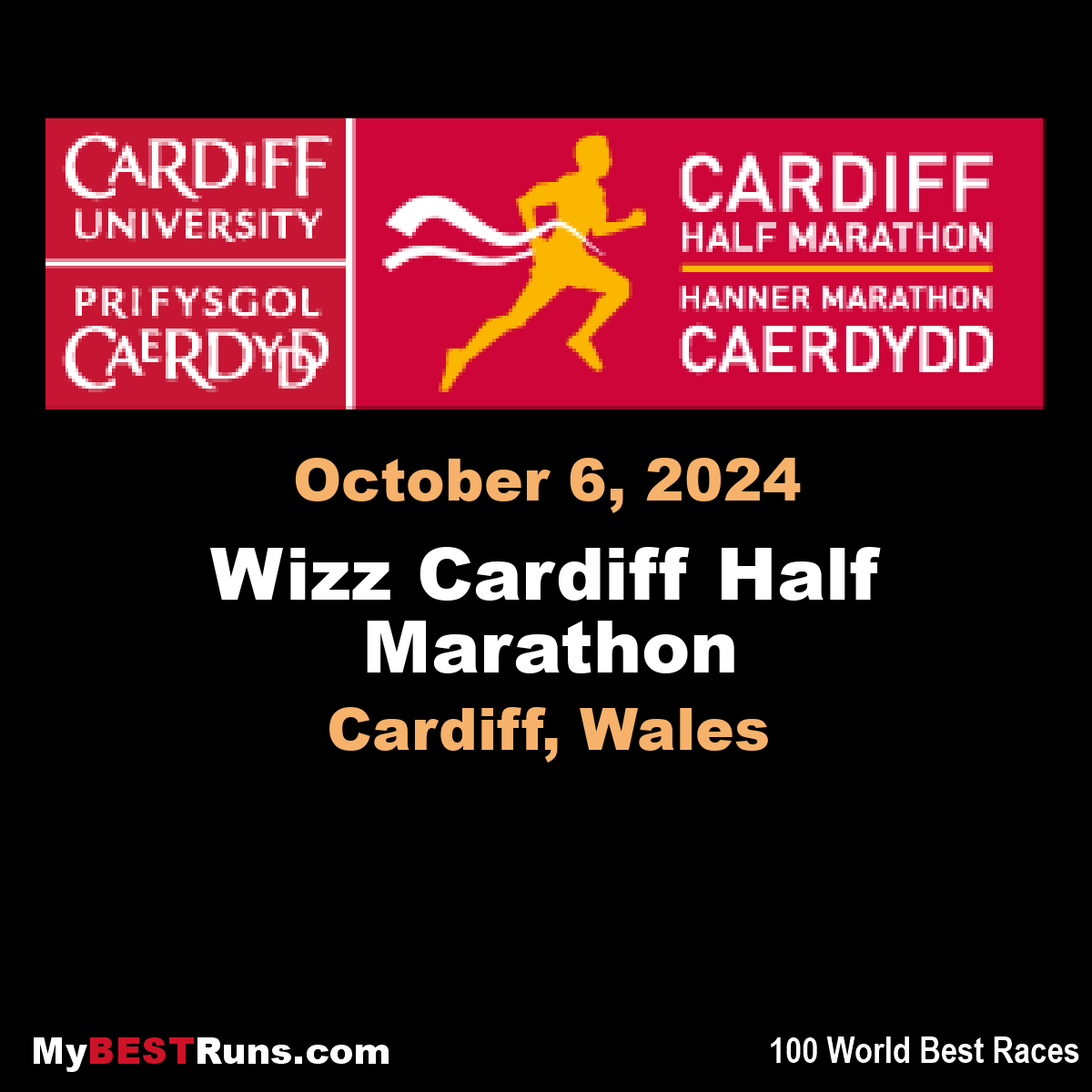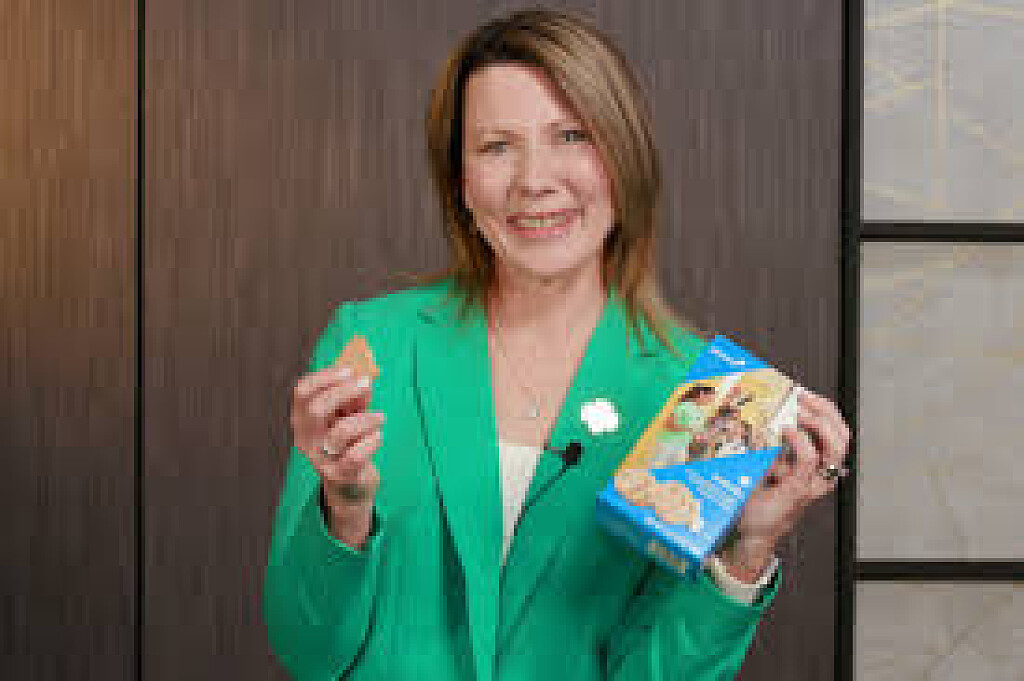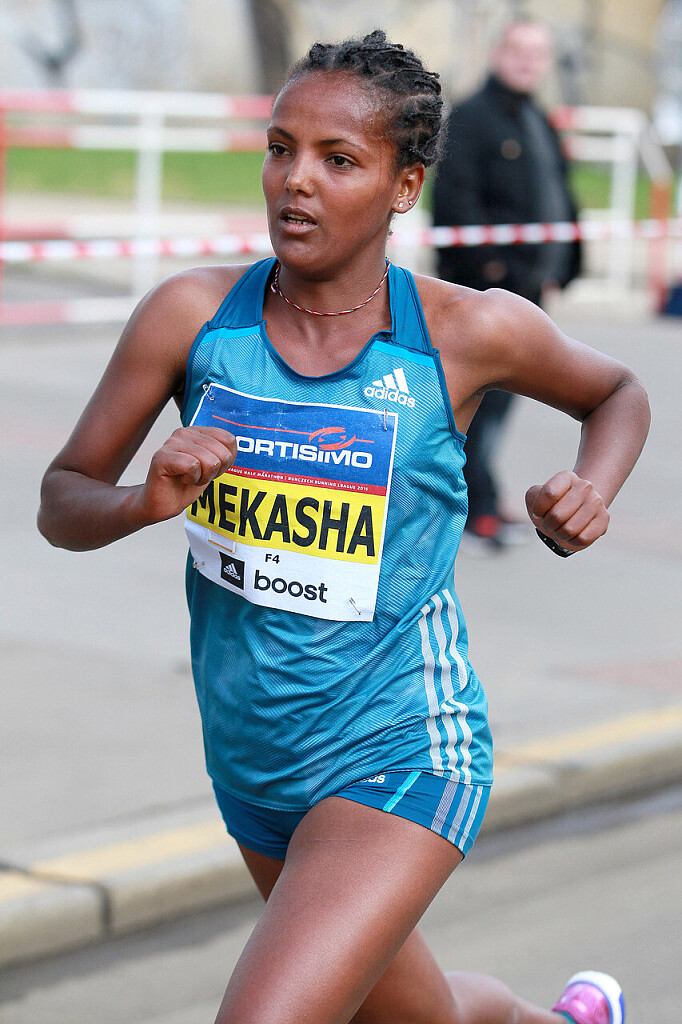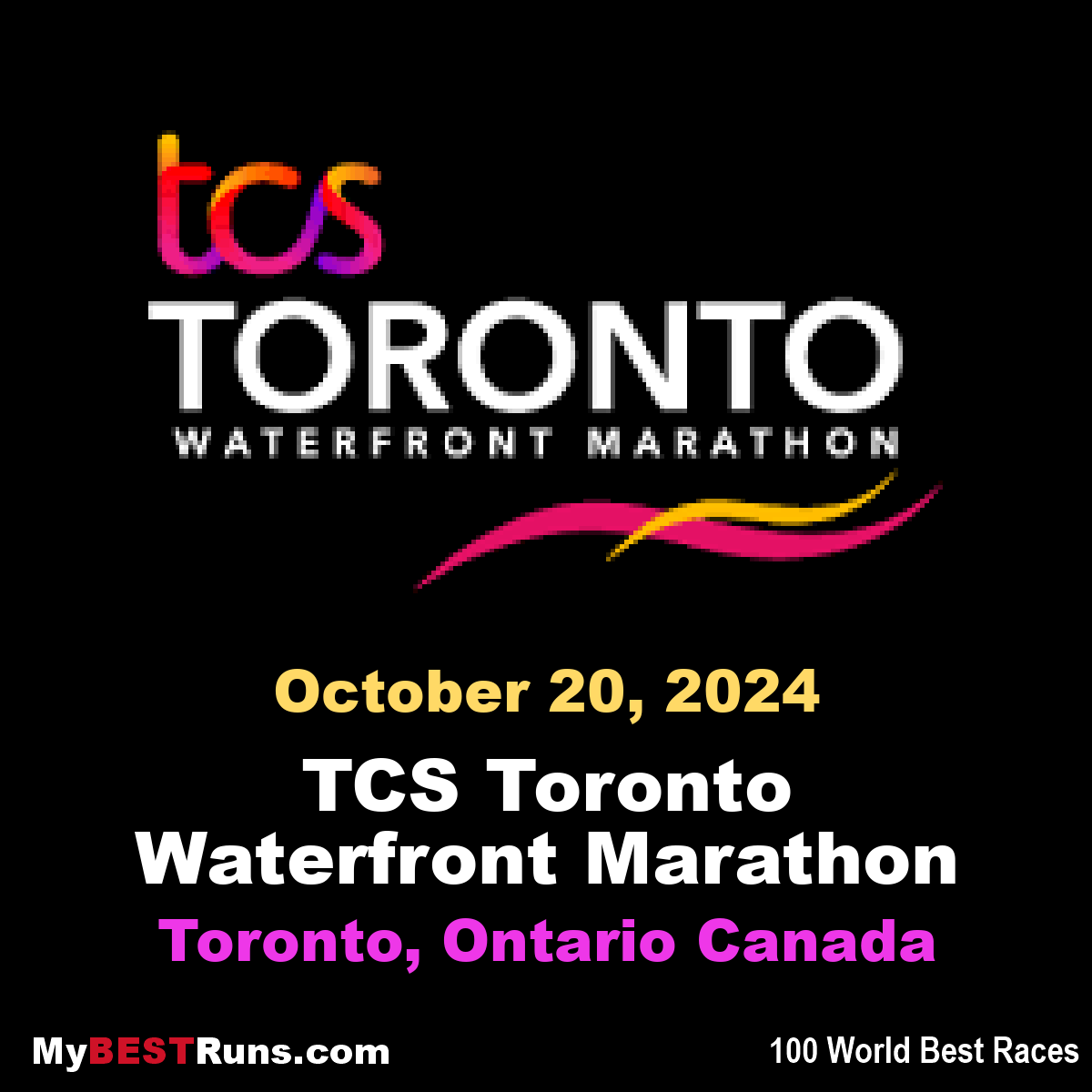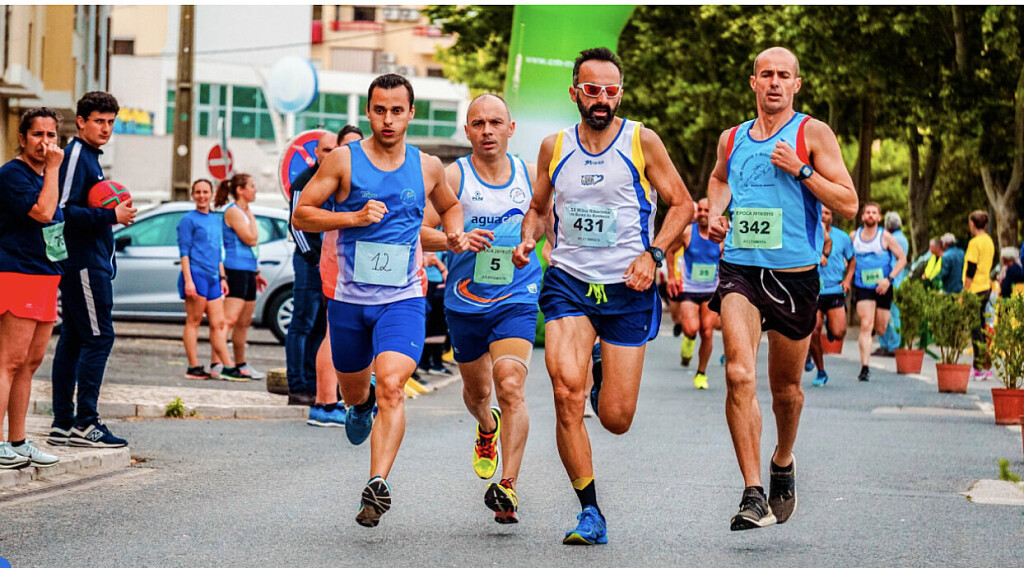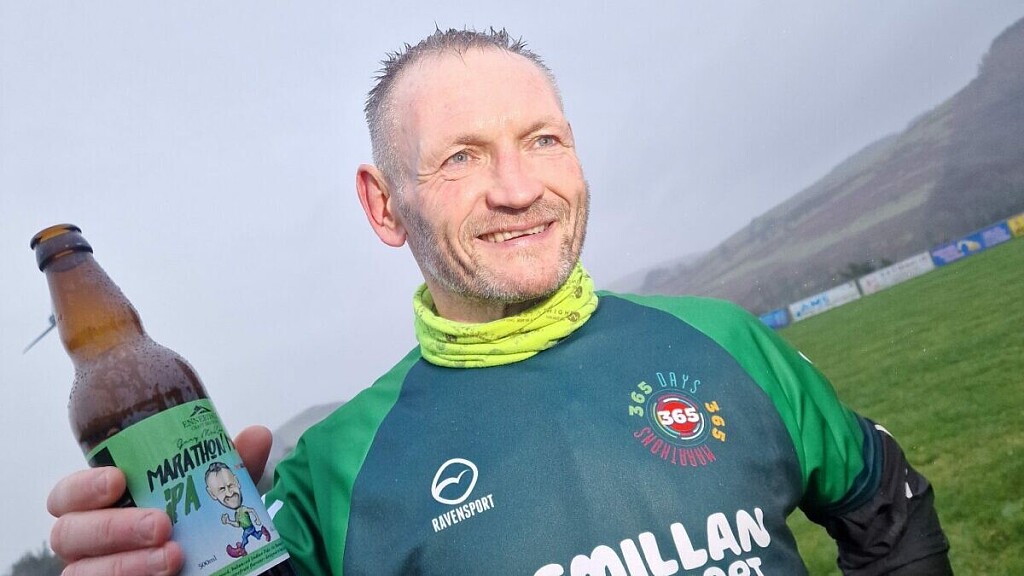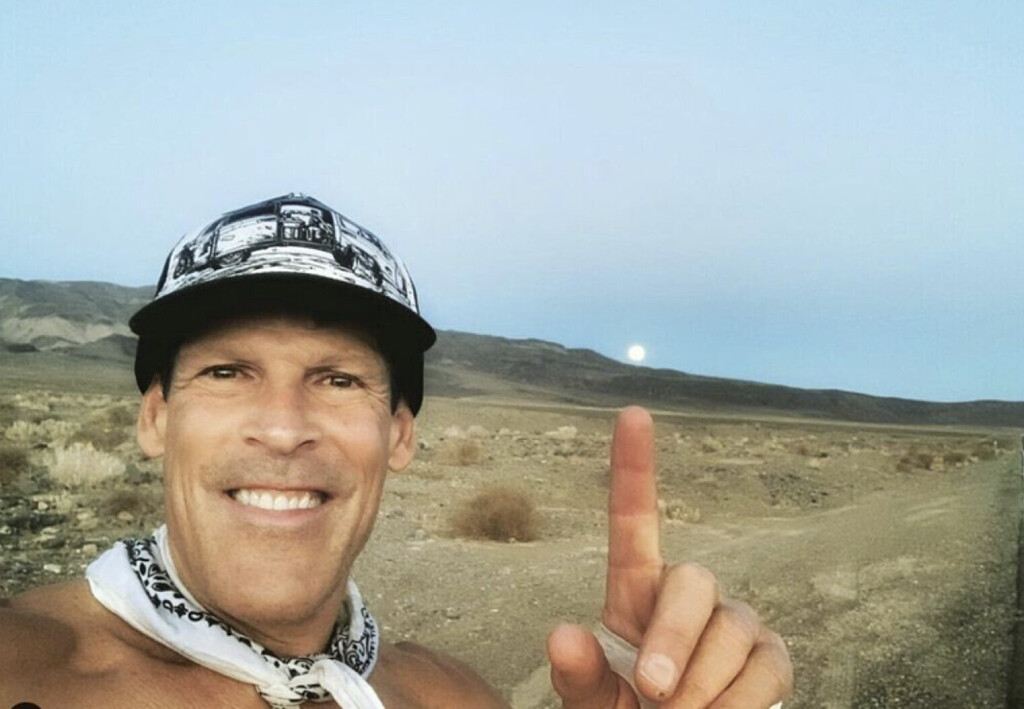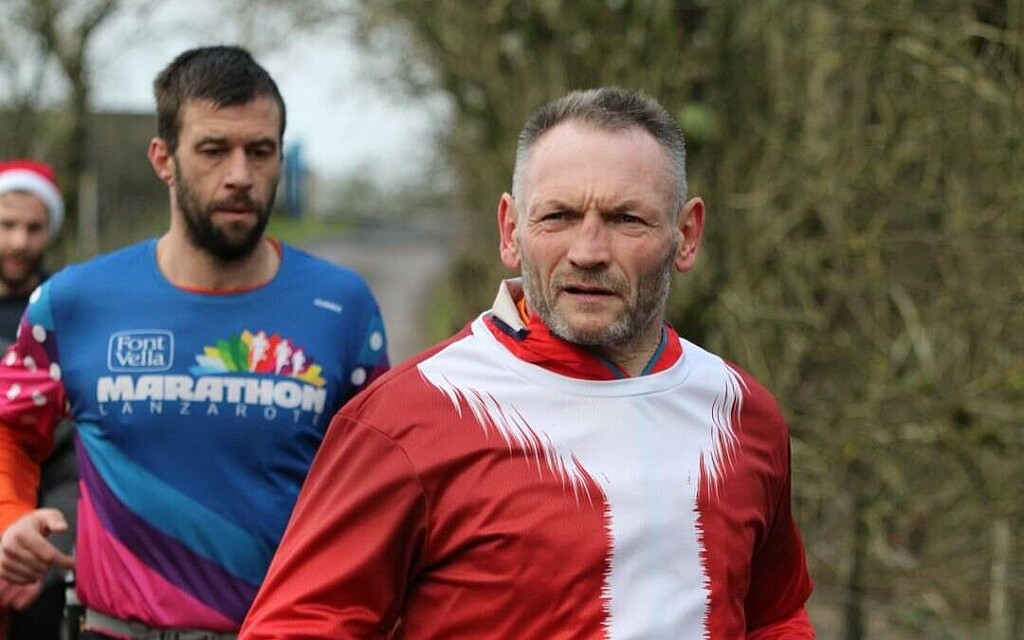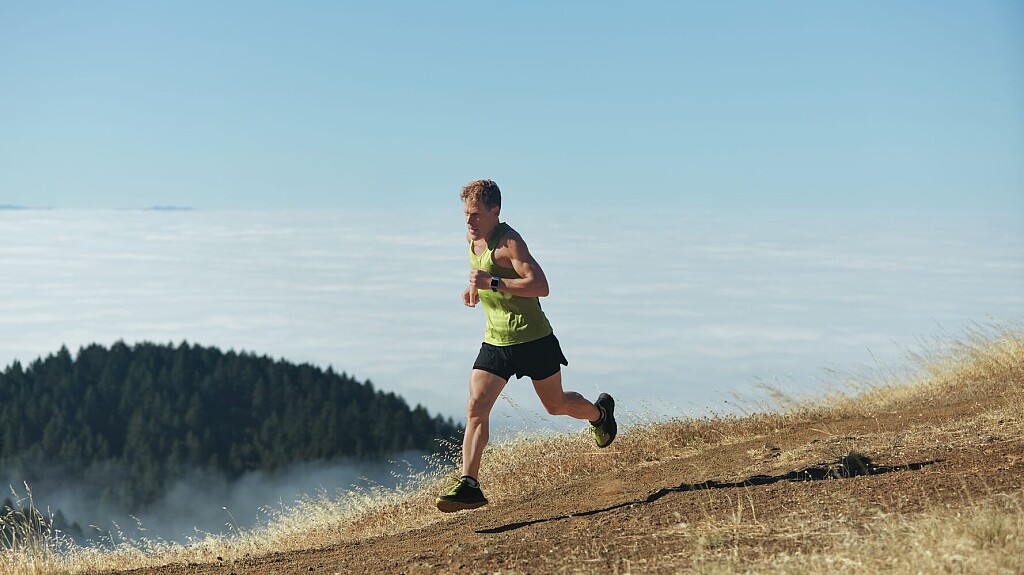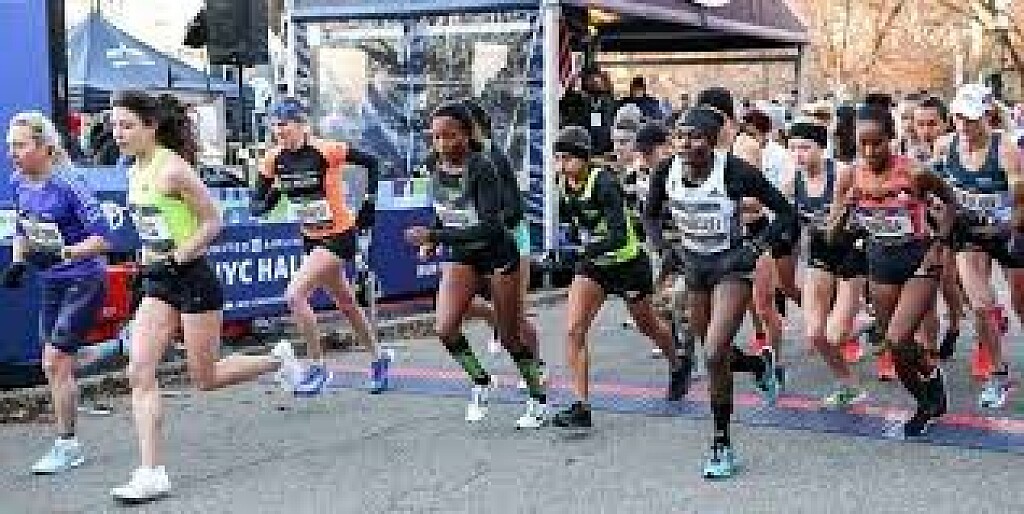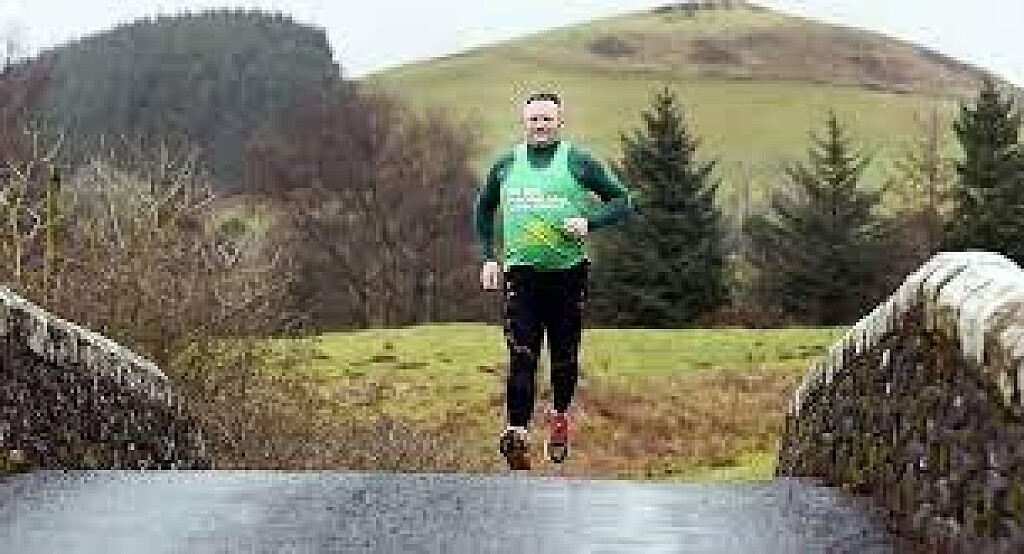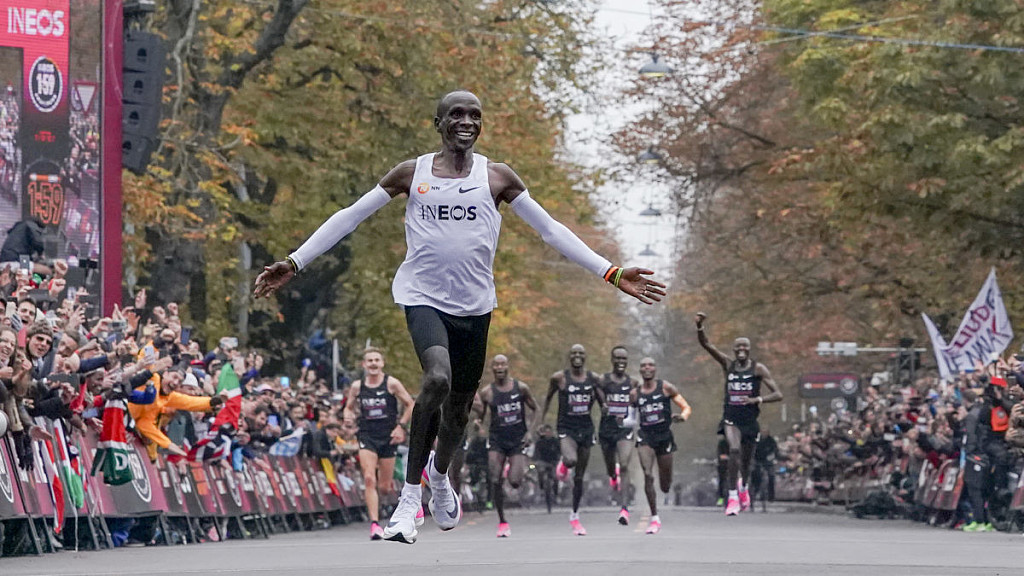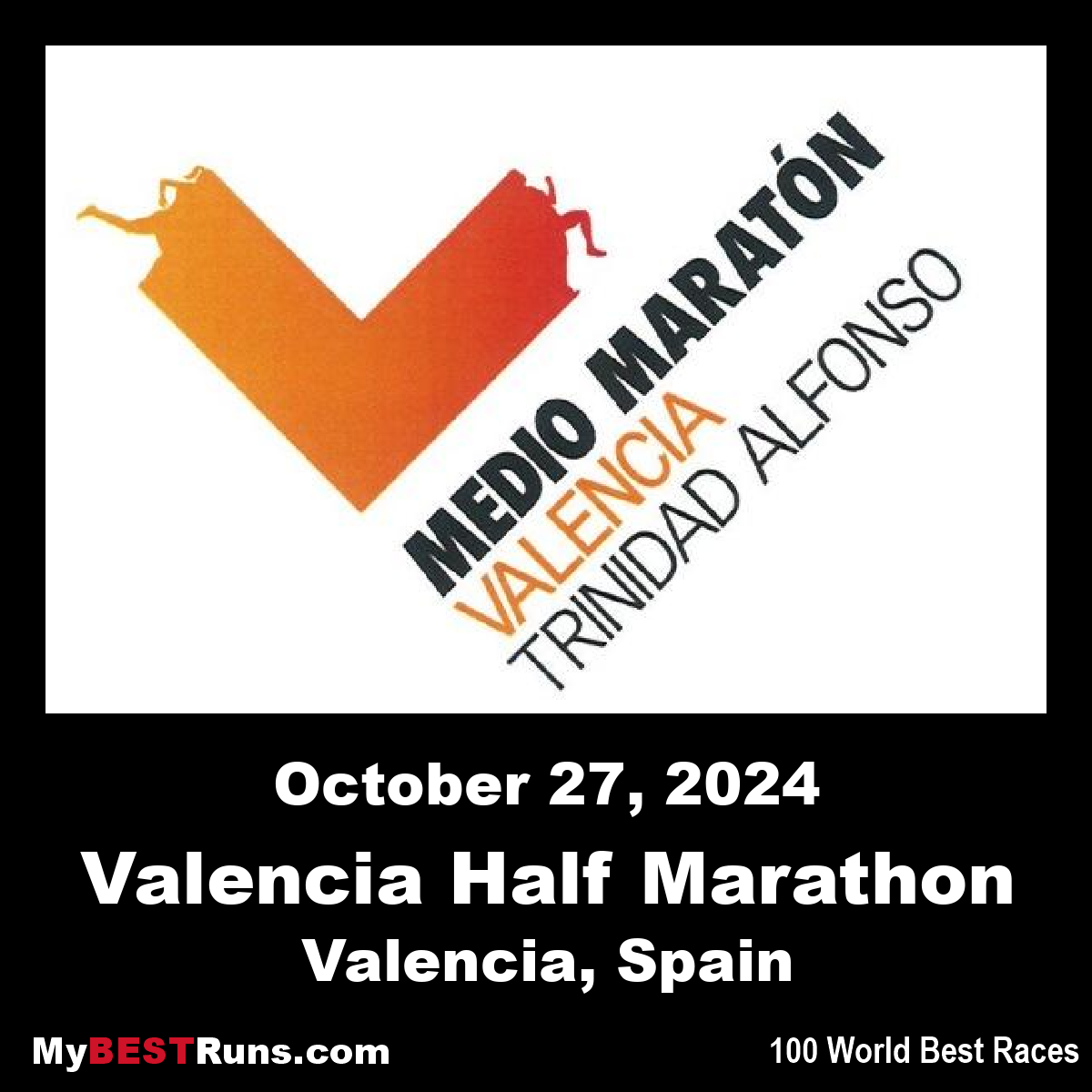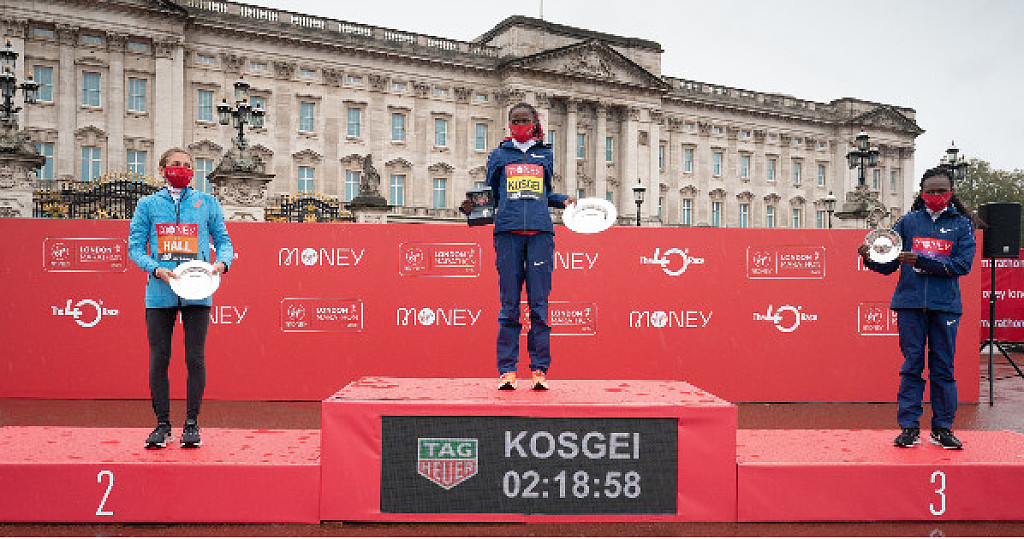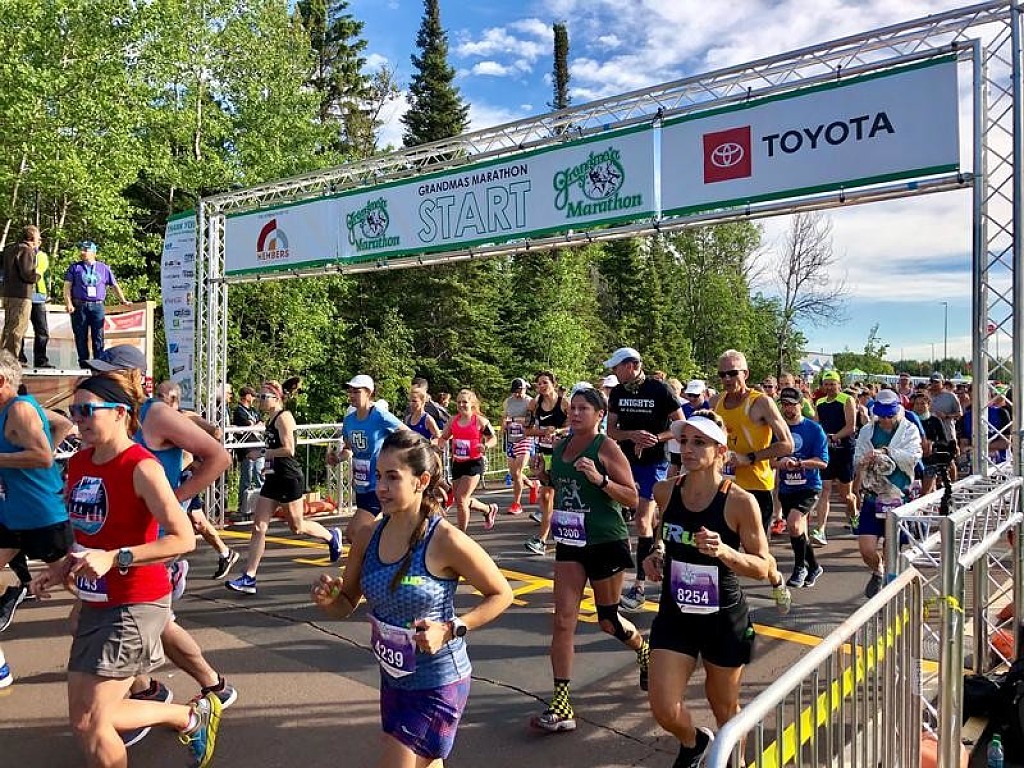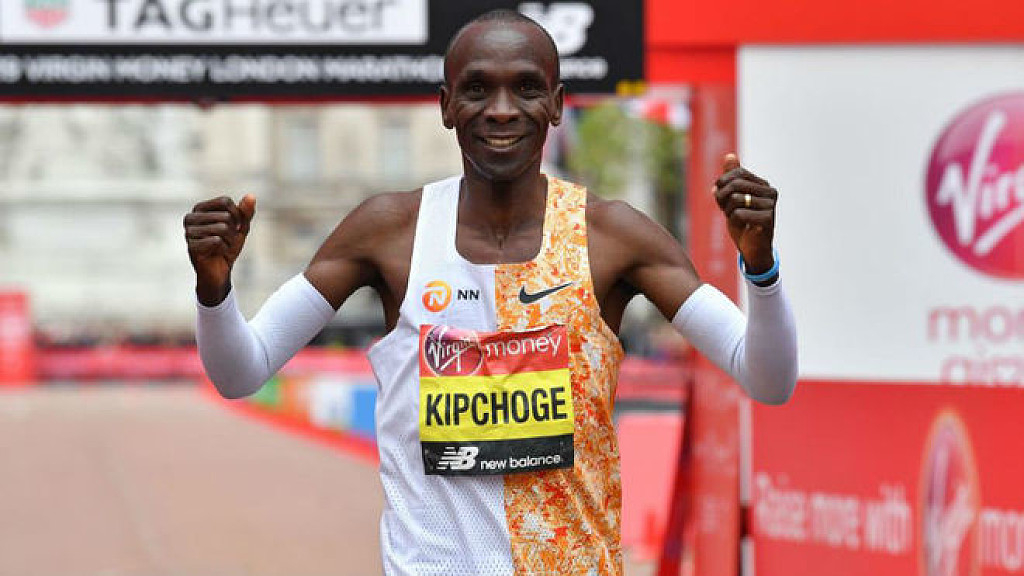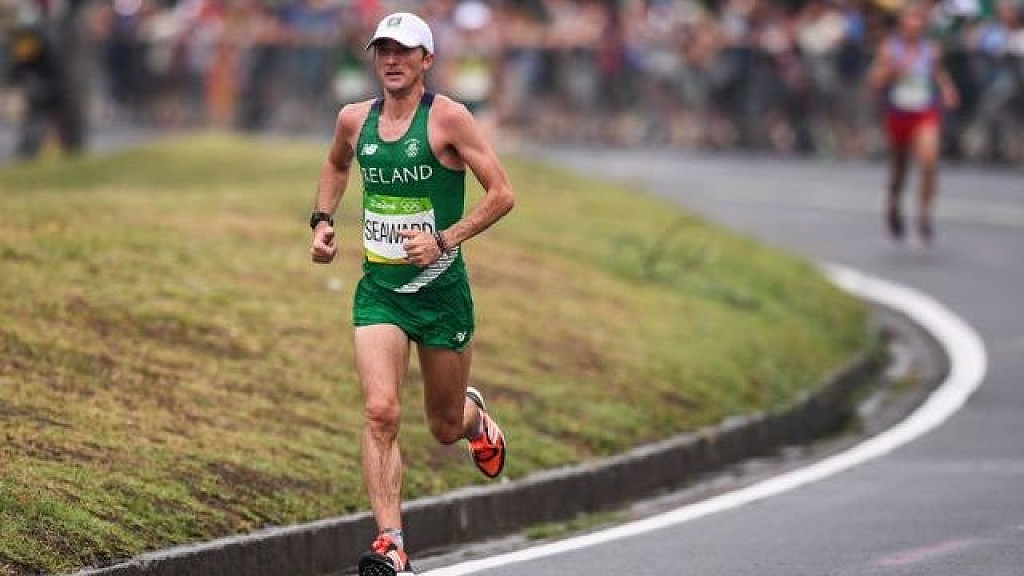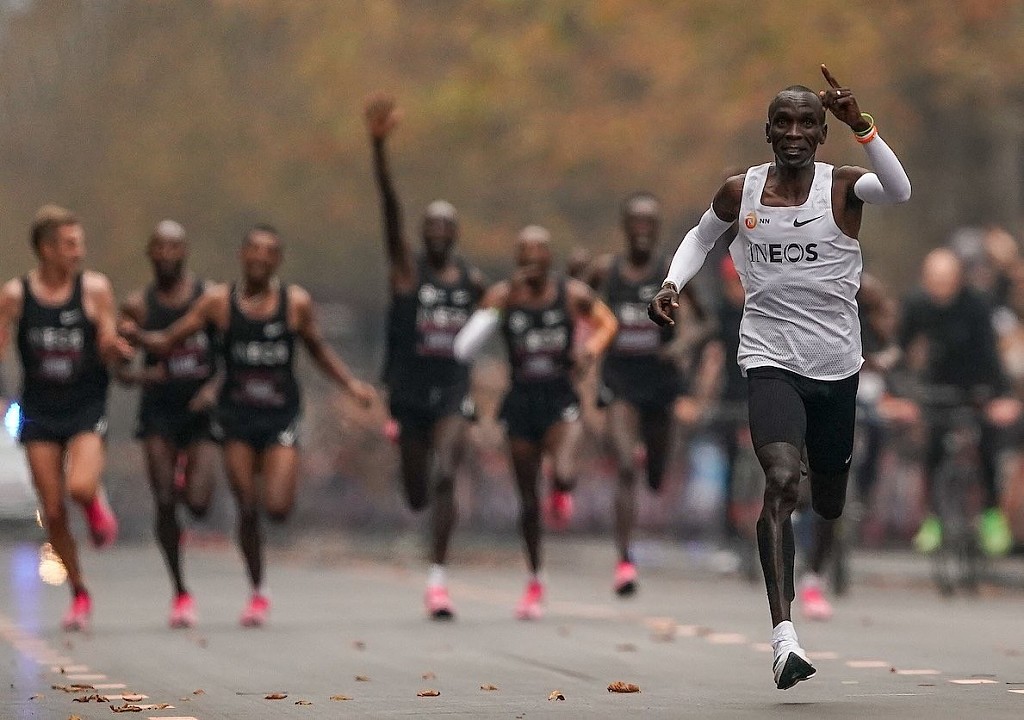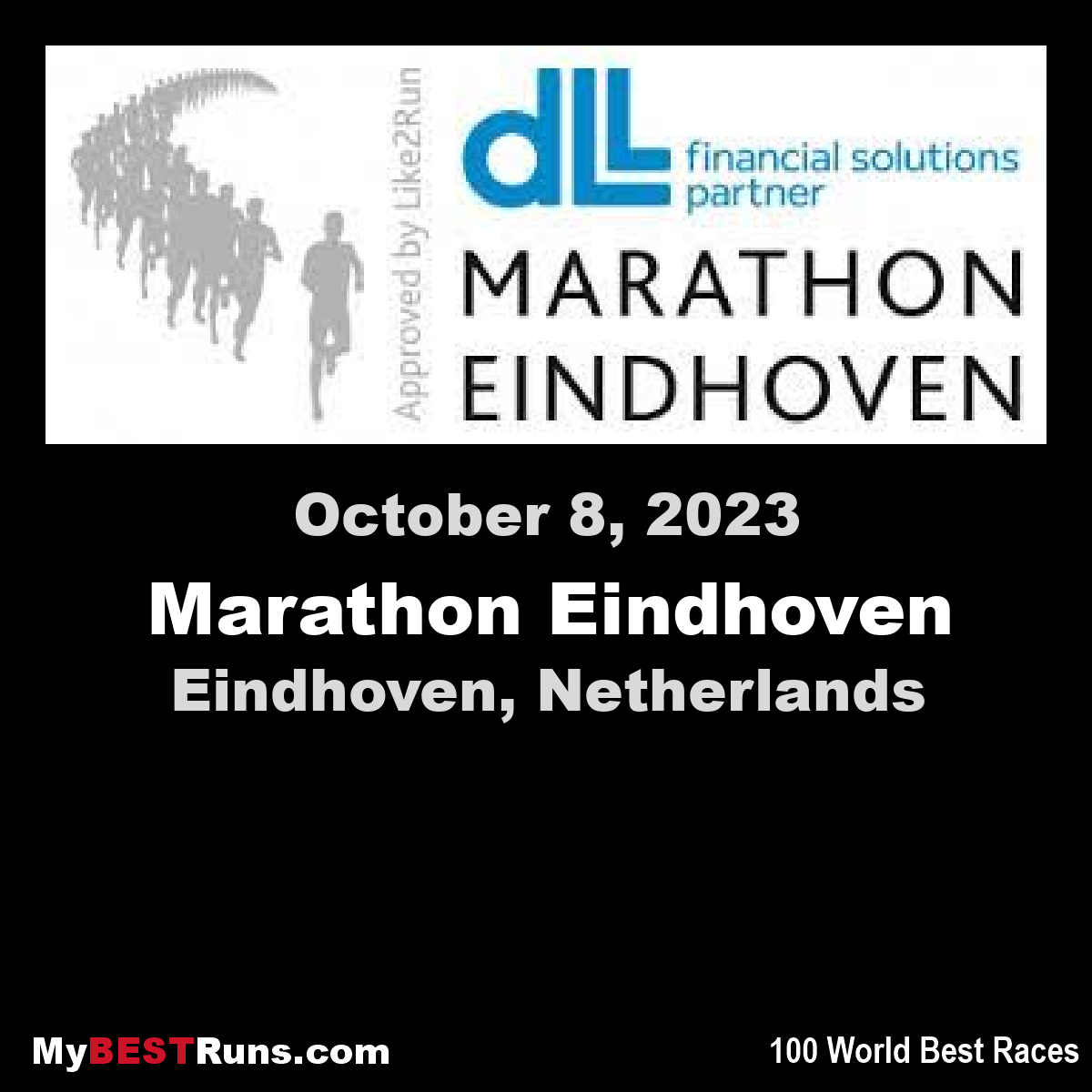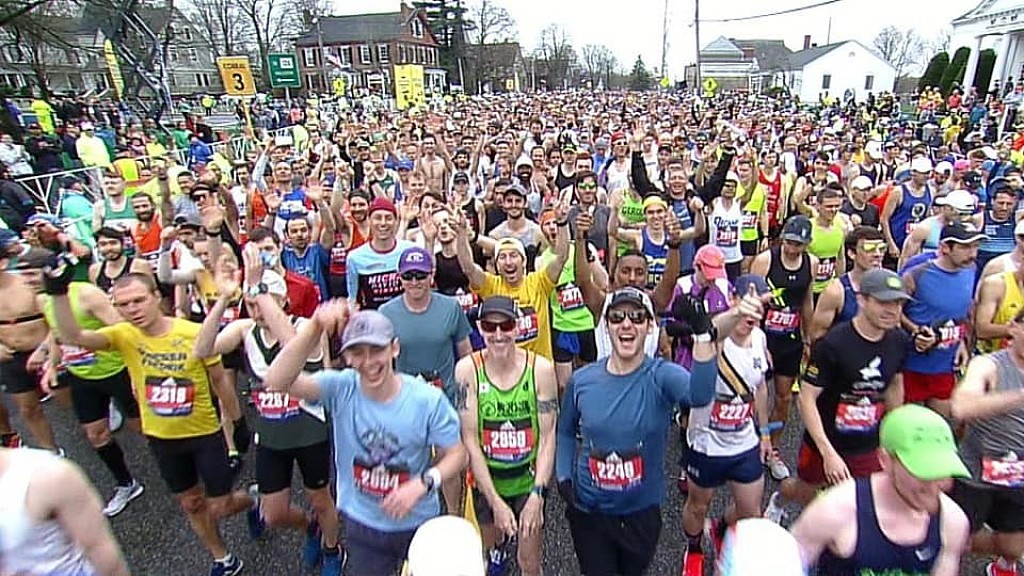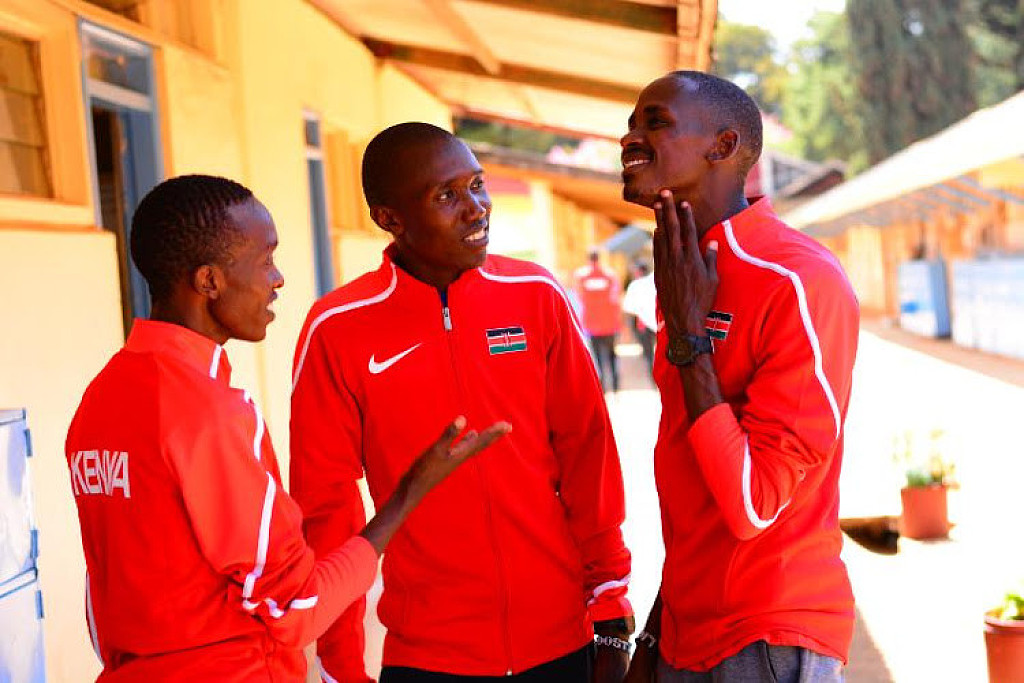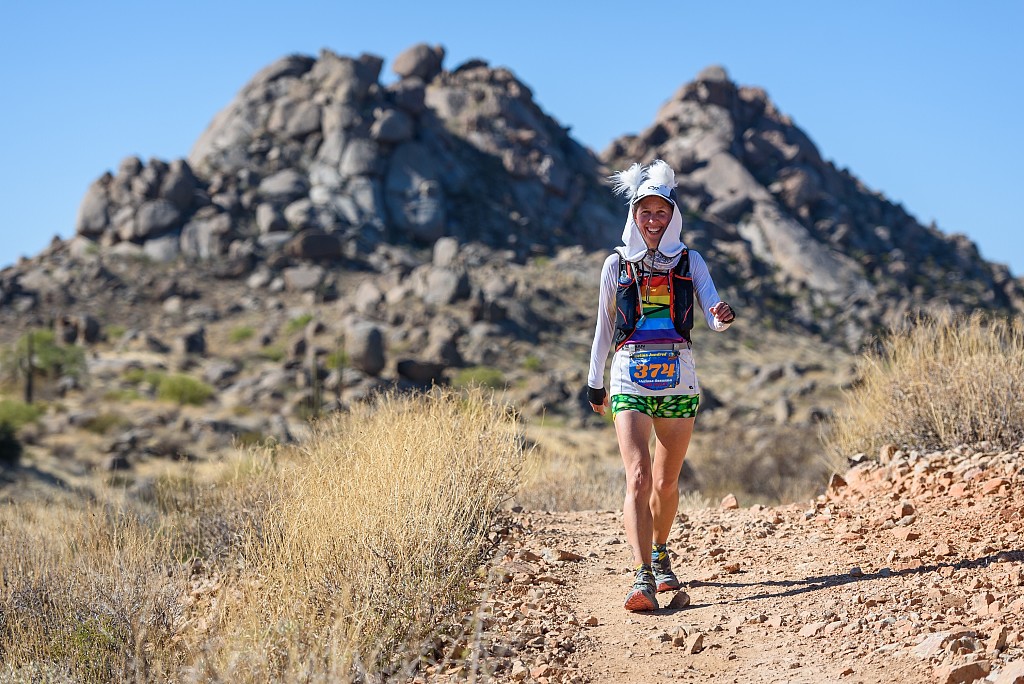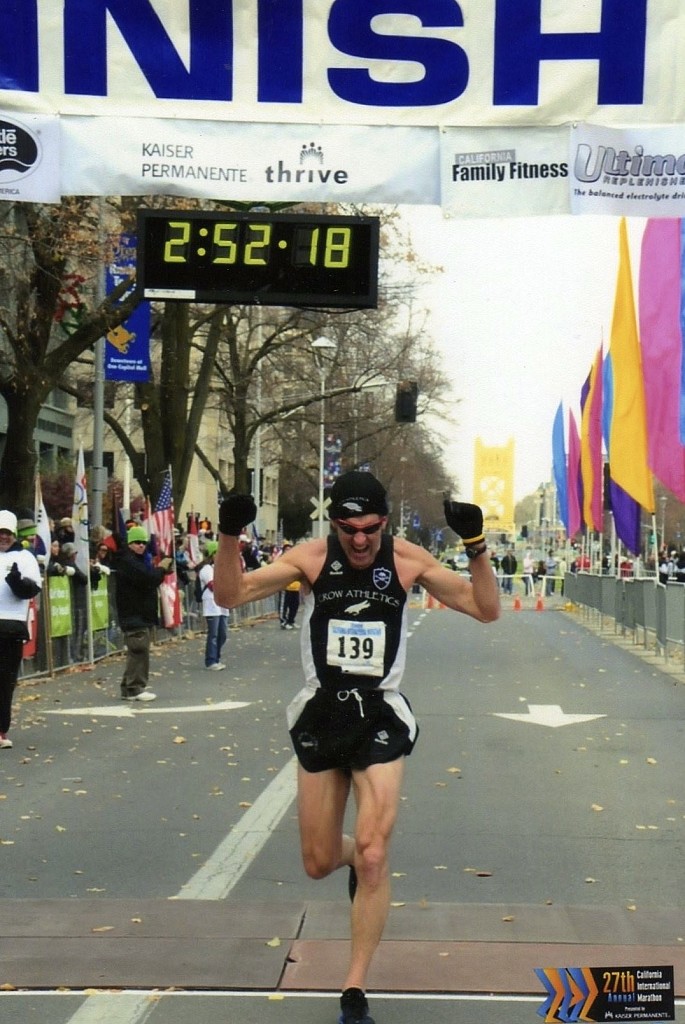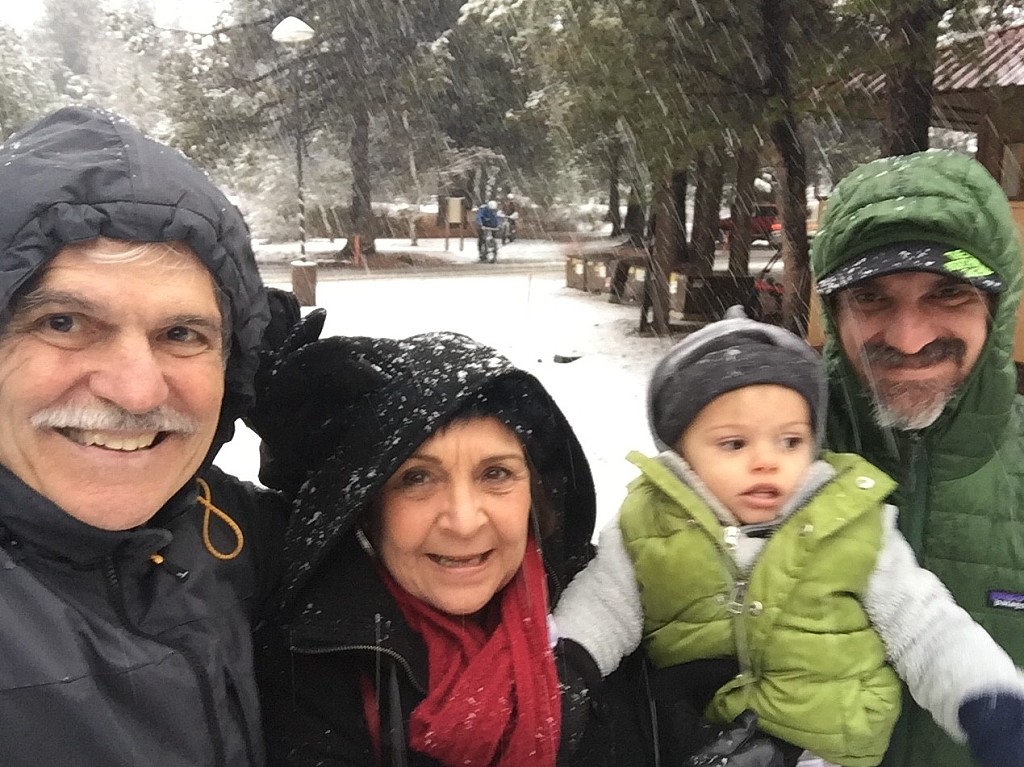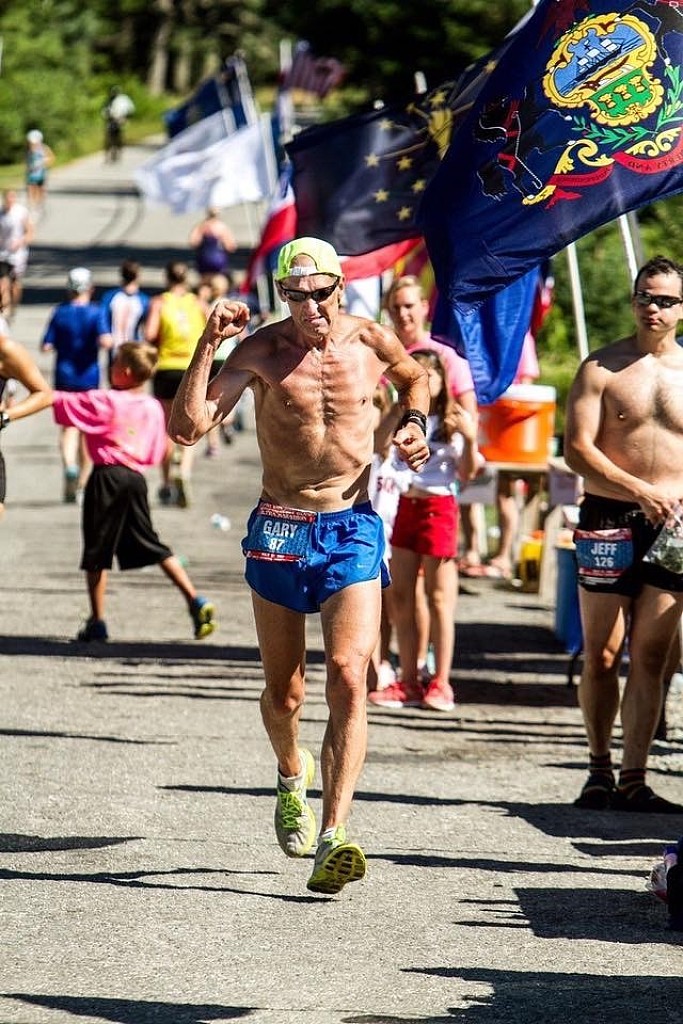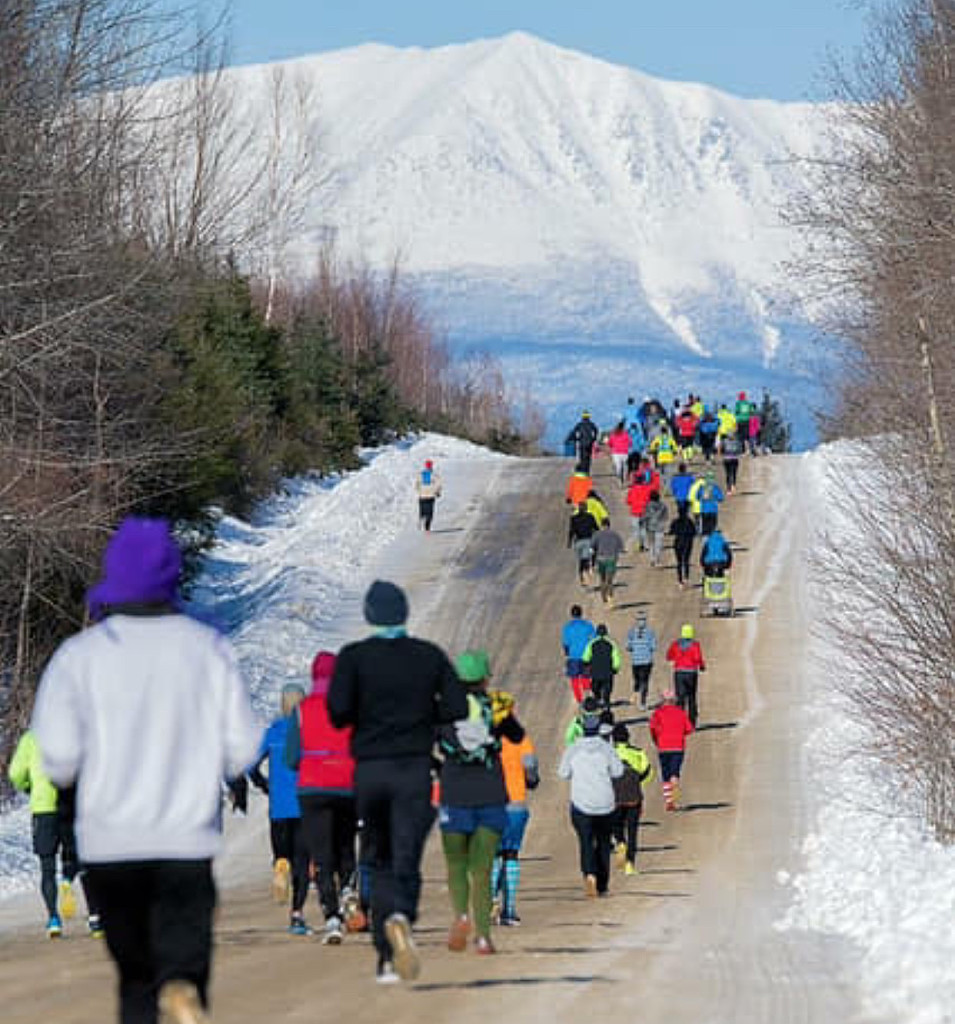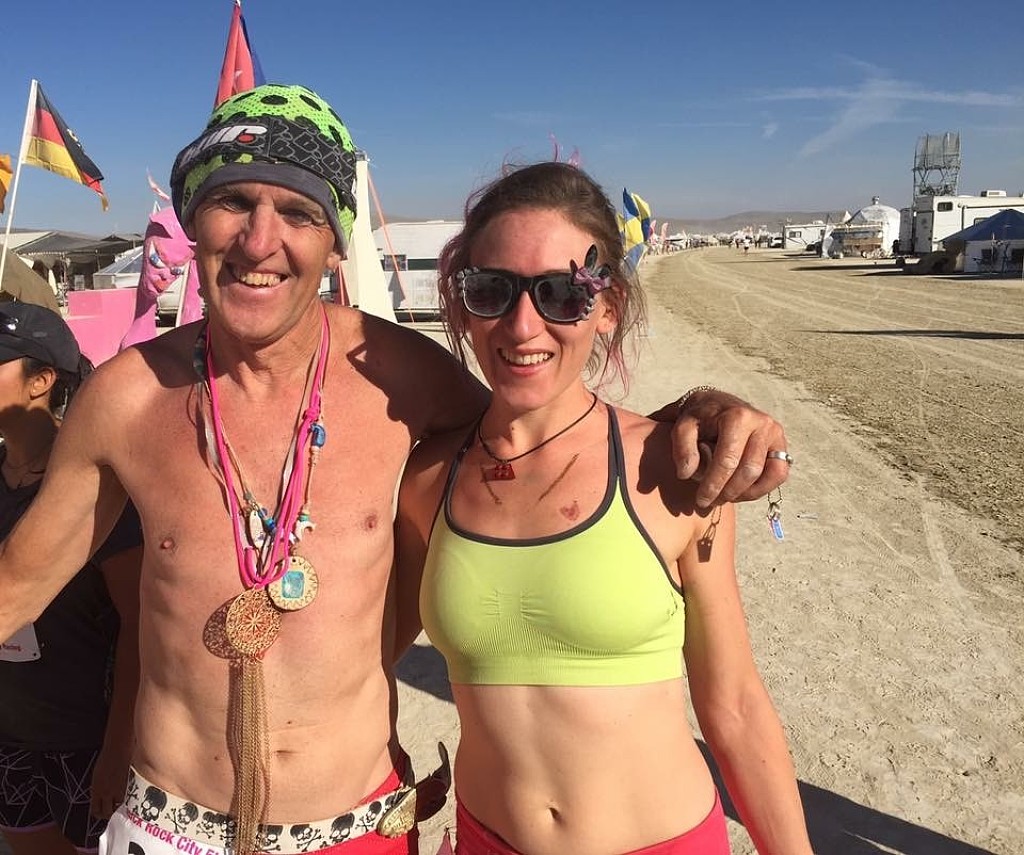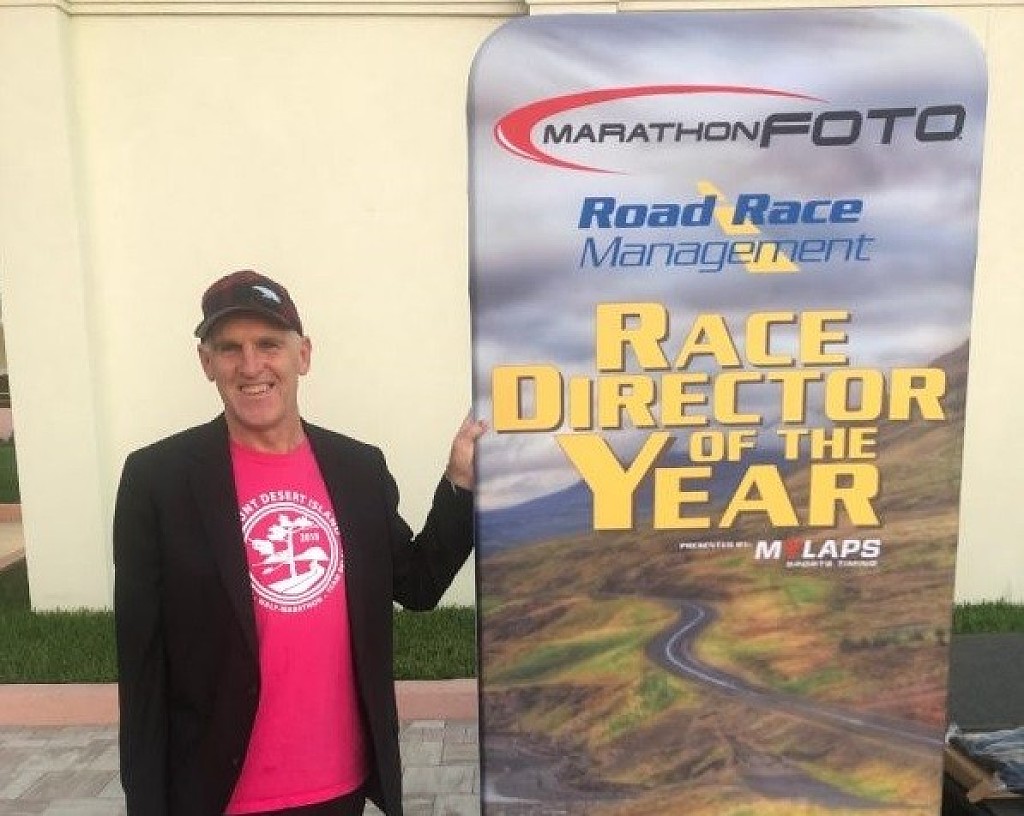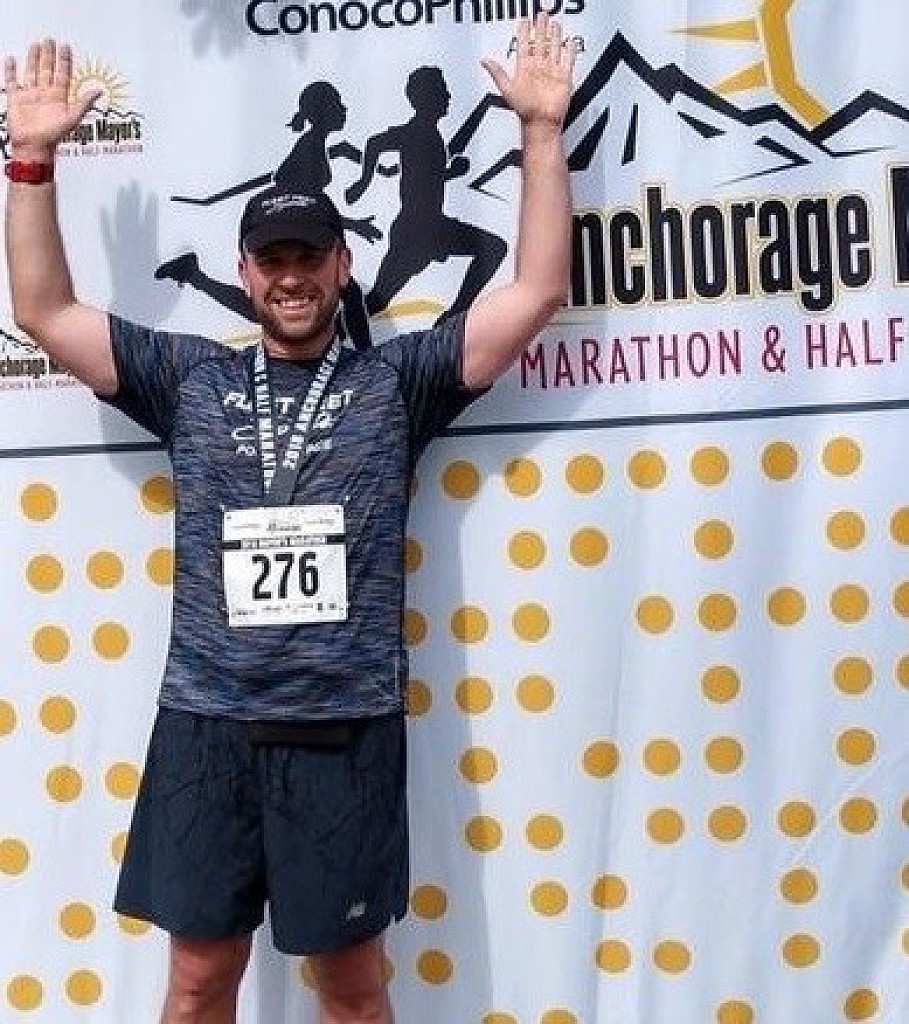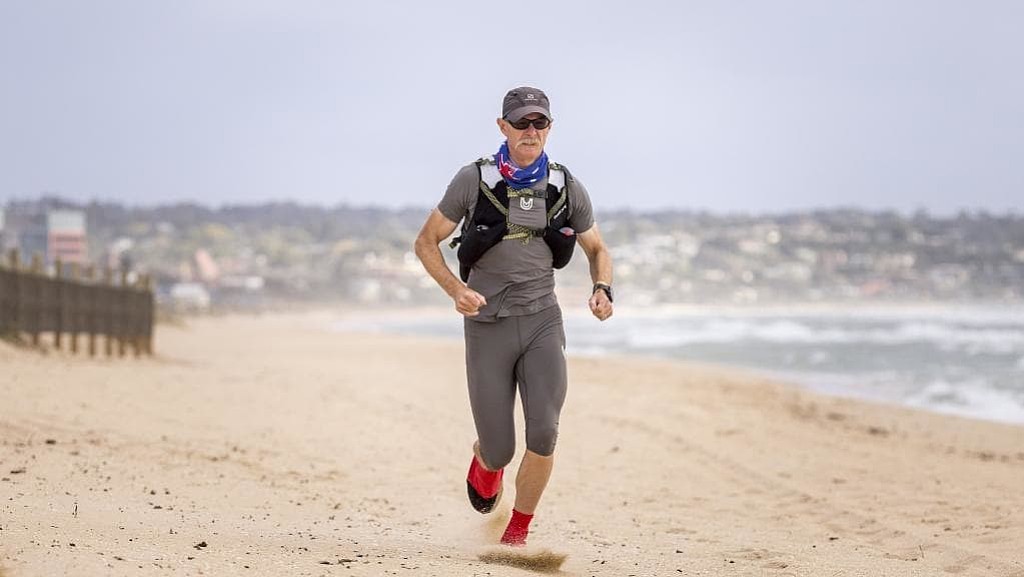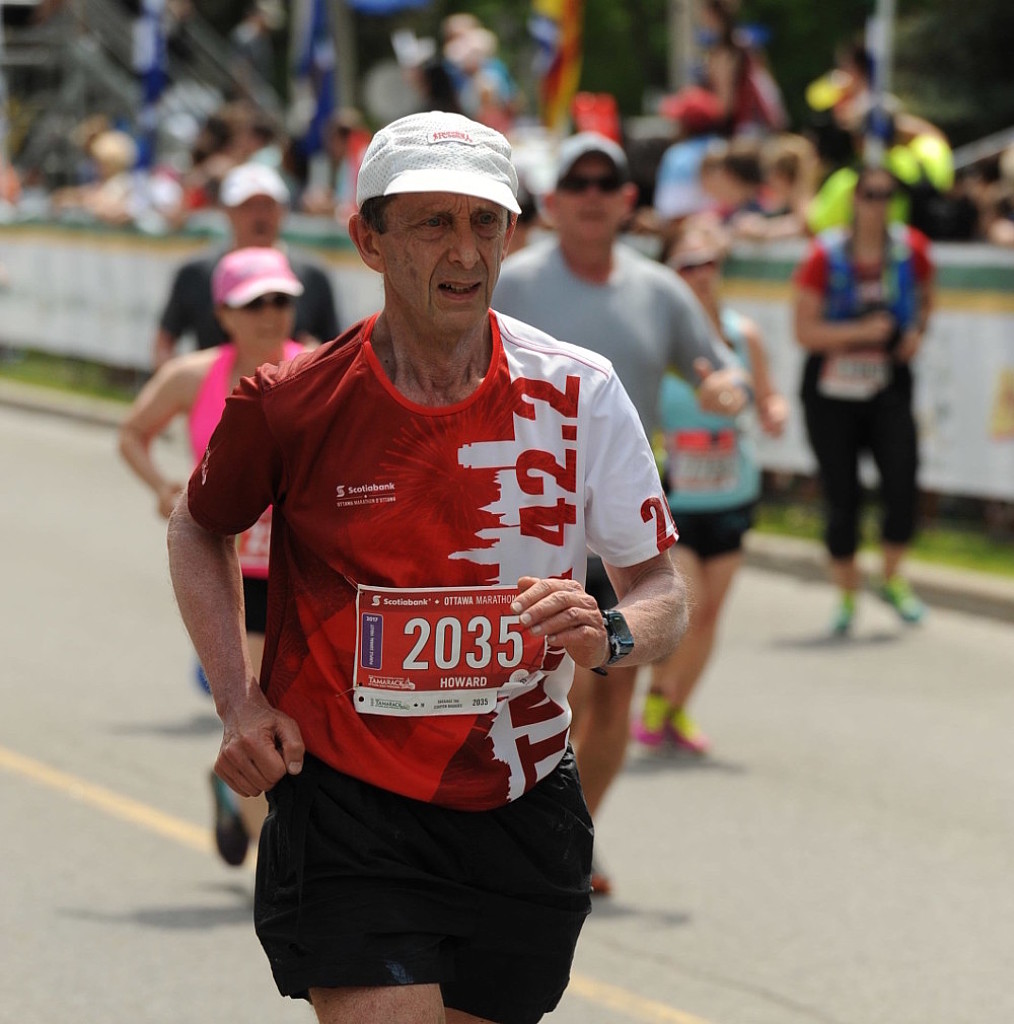Running News Daily
Running News Daily is edited by Bob Anderson. Send your news items to bob@mybestruns.com Advertising opportunities available. Train the Kenyan Way at KATA Kenya and Portugal owned and operated by Bob Anderson. Be sure to catch our movie A Long Run the movie KATA Running Camps and KATA Potato Farms - 31 now open in Kenya! https://kata.ke/
Index to Daily Posts · Sign Up For Updates · Run The World Feed
Articles tagged #Marathon Man
Today's Running News
The Magical Feeling of Running in Central Park, NYC
New York City is a place of hustle and movement, where the streets are alive with energy, and the skyline is iconic. But tucked within the towering buildings and endless motion lies a runner’s paradise—Central Park. For those who have had the privilege of running here, the experience is nothing short of magical.
Whether you’re an early-morning jogger, a seasoned marathoner, or someone visiting the city with running shoes packed, Central Park offers an unforgettable running experience that blends nature, history, and the sheer excitement of running in the heart of the most famous city in the world.

A Runner’s Sanctuary in the Heart of NYC
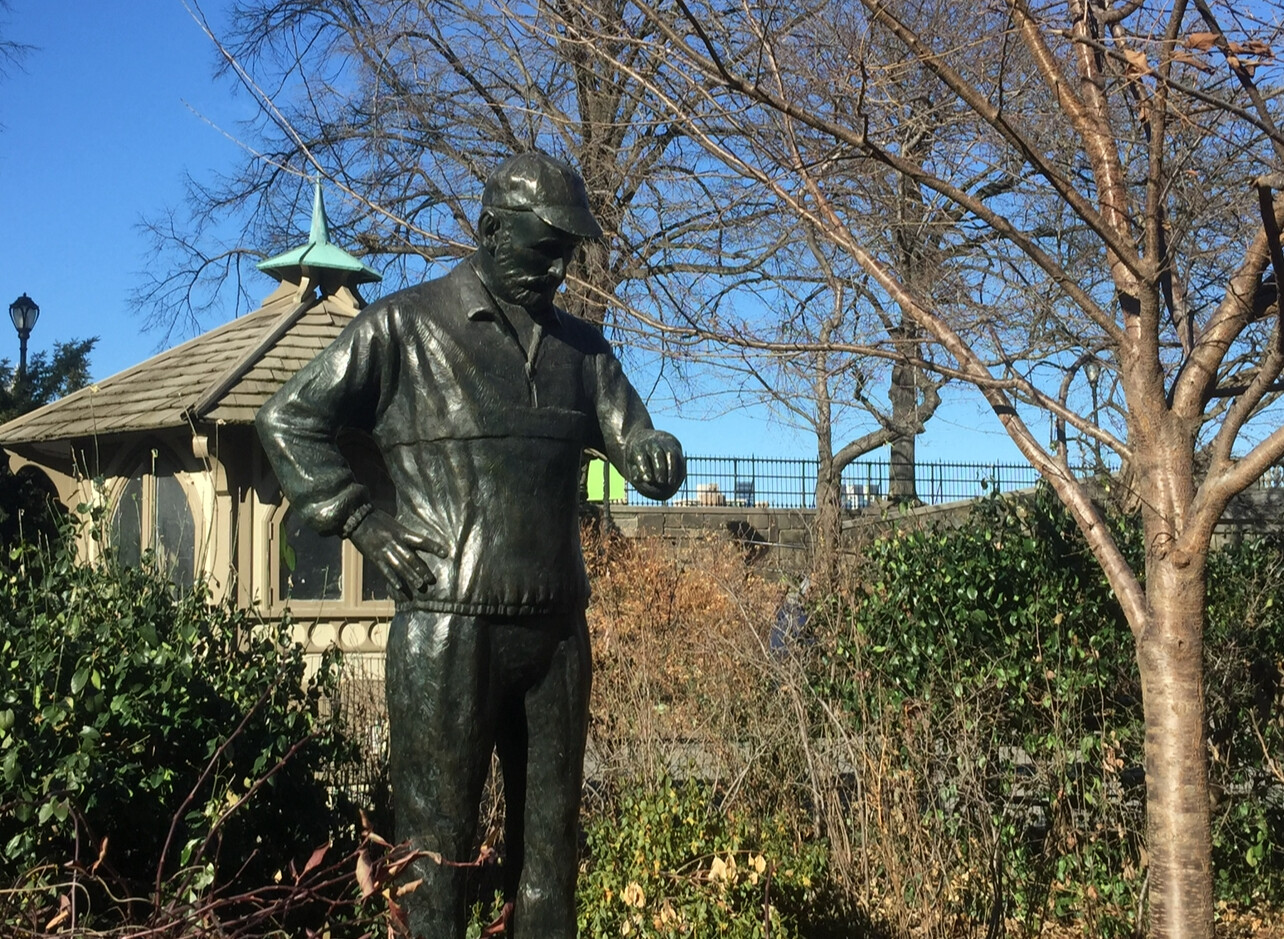
Central Park spans 843 acres in the middle of Manhattan, creating a green oasis amid the urban sprawl. With its rolling hills, shaded pathways, and scenic lake views, it’s the perfect place for runners seeking a retreat from the city’s concrete and congestion.
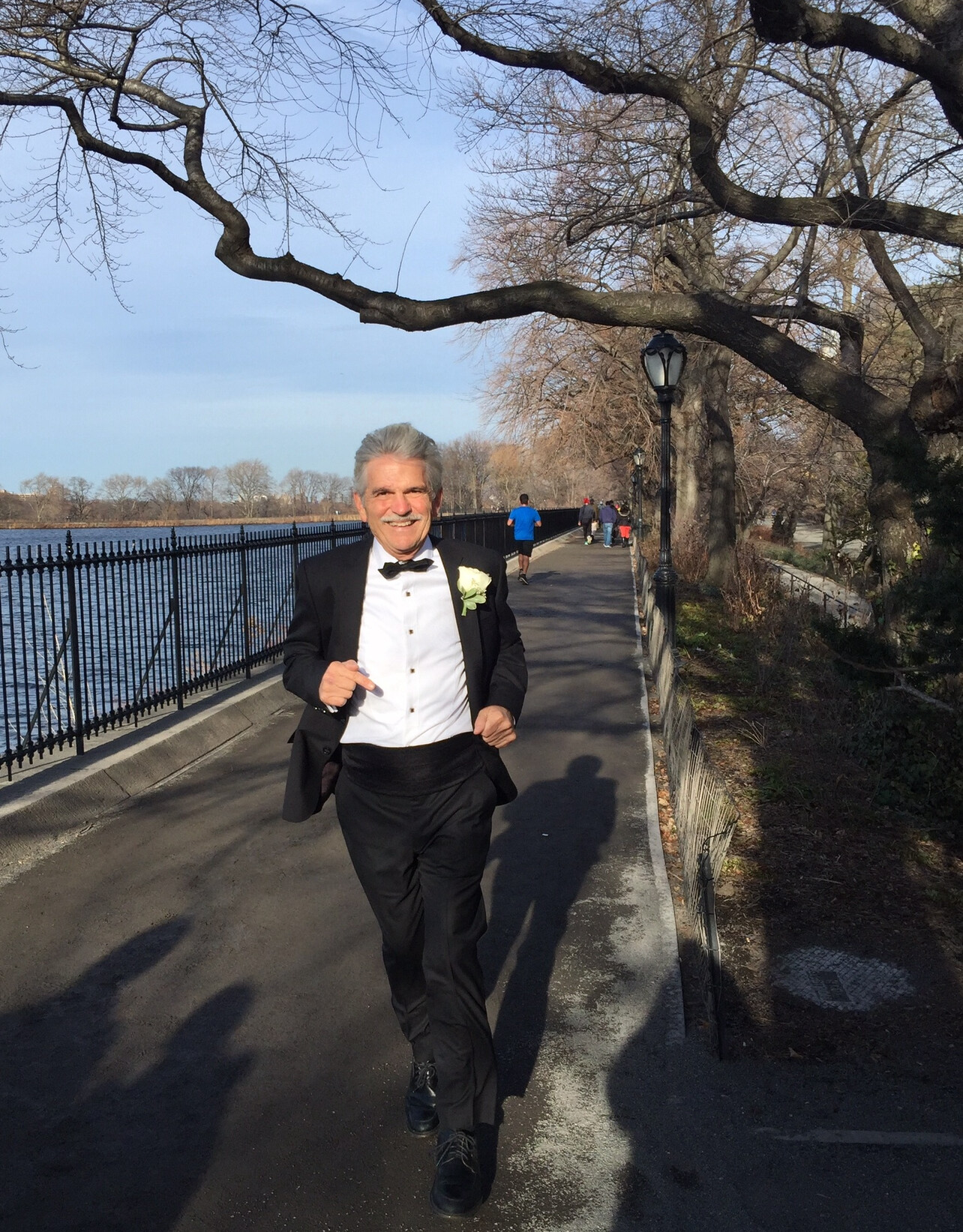
The park provides a welcoming and diverse running environment—a place where runners of all backgrounds and abilities come together. On any given day, you’ll see world-class athletes training for the New York City Marathon, casual runners enjoying a peaceful jog, and tourists soaking in the beauty of one of the most legendary parks on the planet.

Bob Anderson, the founder of Runner’s World and My Best Runs, has run many miles in Central Park, and it just seemed like the perfect location to marry his wife, Catherine. On New Year’s Eve 2016, they exchanged vows in a treehouse in the park, celebrating their love for each other and for this special place.

Why Running in Central Park Feels So Special

1. The Perfect Blend of Nature and City
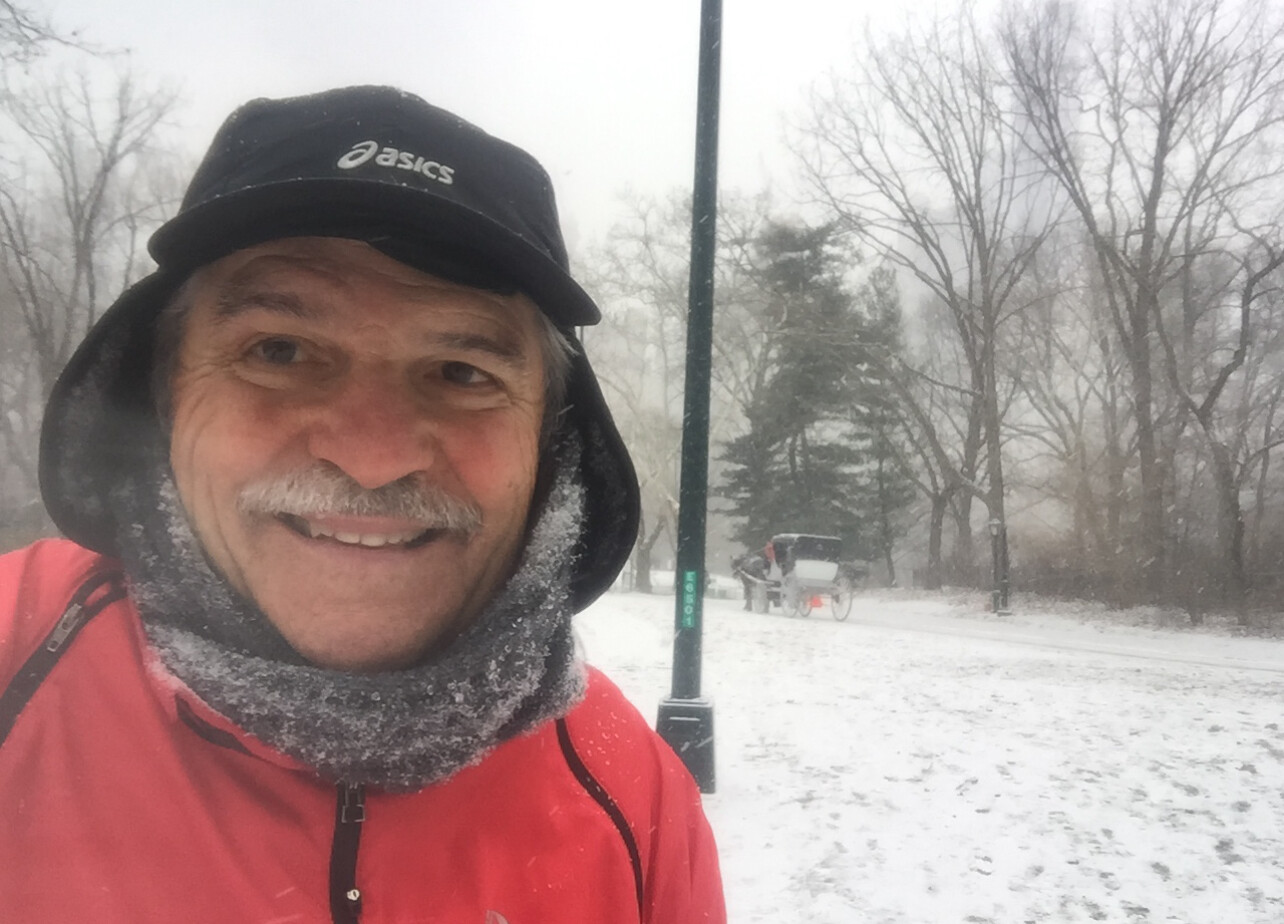
One of the most unique aspects of running in Central Park is the ability to feel completely immersed in nature while still being surrounded by the city skyline. As you glide past tree-lined paths and shimmering ponds, you’ll catch glimpses of the skyscrapers rising above, reminding you that you’re in the heart of one of the most vibrant cities in the world.
Running in Central Park at sunrise is an experience like no other—watching the first rays of light peek through the trees and reflect off the buildings, turning the entire city golden. In the fall, the park transforms into a kaleidoscope of autumn colors, while spring brings blooming cherry blossoms and fresh greenery.
2. Iconic Running Routes
Central Park offers several legendary running routes, each with its own charm:
• The Full Loop (6.1 miles / 9.8 km) – A complete circuit of the park, featuring rolling hills, open views, and famous landmarks.
• The Reservoir Loop (1.58 miles / 2.54 km) – One of the most famous running paths in the world, circling the Jacqueline Kennedy Onassis Reservoir with a stunning skyline backdrop.
• The Lower Loop (1.7 miles / 2.7 km) – A flatter, shorter route perfect for an easy jog or speed workouts.
• The Bridle Path (4.2 miles / 6.8 km total) – A softer dirt trail, ideal for runners who want to reduce impact on their joints.
One of the most well-known sights along the running route is The Lake, which was prominently featured in the classic thriller Marathon Man (1976), starring Dustin Hoffman. While the movie is not about running, Hoffman’s character, Thomas “Babe” Levy, is frequently shown running in Central Park, using it as an outlet for stress and survival. For runners who love cinema, retracing Hoffman’s steps adds an extra layer of history to an already iconic location.
3. The Statue Honoring a Running Legend: Fred Lebow
As you run through Central Park, you’ll pass the Fred Lebow statue, a tribute to the founder of the New York City Marathon. Lebow was instrumental in turning the NYC Marathon into one of the world’s most famous races. The statue, located near the marathon’s finish line, serves as an inspiring reminder of his contributions to the sport.
Many runners stop to touch the statue or take a moment of reflection before completing their final strides—whether it’s during a training run or on race day.
4. A Shared Energy Like No Other
The atmosphere in Central Park is unlike anywhere else. It’s a place where runners from all over the world come to test their limits, find their rhythm, and be part of something bigger.
The community of runners in Central Park is welcoming and diverse. You’ll pass runners speaking different languages, elite marathoners training for their next big race, and even a few familiar faces from the professional running world. On race weekends, the energy is electric, as groups gather to cheer, pace, and celebrate the sport of running.
There’s an unspoken bond among Central Park runners—a shared understanding that this is a place where you come to feel alive.
Running Through History: The Legacy of Central Park
Beyond its beauty and convenience, Central Park has an incredible running history. It has been the training ground for some of the greatest runners in history, from legendary marathoners to track stars preparing for the Olympics.
The park plays a pivotal role in the TCS New York City Marathon, with the final miles winding through its paths before runners cross the finish line near Tavern on the Green. The sense of accomplishment felt when finishing a race in Central Park is something runners cherish forever.
Even if you’re not racing, running here allows you to be a part of that history—to step where champions have run, to push yourself the way so many others have before.
The Best Times to Run in Central Park
• Early Morning (5:30 AM - 8:00 AM): The most peaceful time to run, with fewer crowds and a stunning sunrise over the city.
• Late Afternoon (4:00 PM - 7:00 PM): The golden hour of running, when the sun sets behind the skyline, creating a surreal backdrop.
• Night Runs: Running Central Park at night offers a different kind of magic, with the city lights creating a glowing contrast against the trees.
No matter when you run, Central Park feels alive, providing motivation with every step.
Tips for First-Time Runners in Central Park
• Stick to the right. The running and biking lanes are clearly marked—stay on the right to avoid collisions.
• Hydration stations are available. Water fountains are scattered throughout the park, but in hot months, bring your own bottle.
• Be prepared for hills. While some sections are flat, parts of the park (like Harlem Hill) will test your strength.
• Enjoy the experience. Whether you’re running for speed, endurance, or simply for fun, Central Park is a place to embrace the joy of running.
Why Every Runner Should Experience Central Park
Running in Central Park is more than just a workout—it’s a moment of connection. Connection to nature, to the rhythm of the city, and to the countless runners who have made this park their sanctuary.
It’s a place where you can lose yourself in the run while feeling completely present. Where the city’s chaos fades away, replaced by the steady sound of your footsteps on the pavement.
If you ever find yourself in New York City, put on your running shoes and head to Central Park. Whether you go for a quick jog or a long run, you’ll leave feeling inspired, refreshed, and part of something greater than yourself.
Because running in Central Park isn’t just about exercise—it’s about experiencing one of the most iconic and magical places in the world, one step at a time.
Have you ever run in Central Park? Share your experience in the comments!
by Boris Baron
Login to leave a comment
Competitive elite fields will contest the 21st edition of the Cardiff Half Marathon
A string of established Kenyan athletes will be chasing fast times somewhere underneath the course record of 59:30 in the men’s race. Meanwhile, a strong field that includes two-time European Cross Country Champion Fionnuala McCormack is set to contest the women’s race.
Cardiff is the penultimate venue in the 2024 Superhalfs Series. It holds a prestigious World Athletics Elite Road Race Label and hosts the Welsh Half Marathon Championships annually.
Elite Men
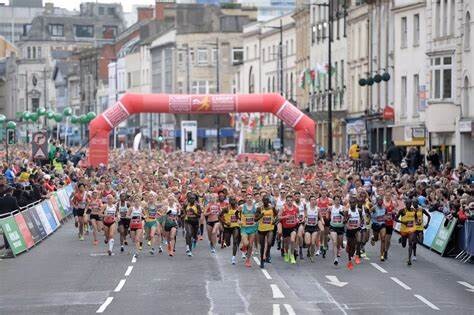
Benard Ngeno (59:07) is the fastest athlete on paper owing to an impressive lifetime best set at the Trinidad Alfonso Valencia Half Marathon in 2019, finishing second at the world’s top race over the distance. Cosmas Boi (59:29) comes to the City following a solid block of training that indicates a new P.B. could be possible. Perhaps his greatest accolade to date was a victory at the 2023 Stramilano Half Marathon.
Patrick Mosin (59:31) is the next fastest and was the winner of the 2023 Lille Half Marathon but more notably third at the Prague Half Marathon that was won by the current World Half Marathon Champion Sebastian Sawe in April.
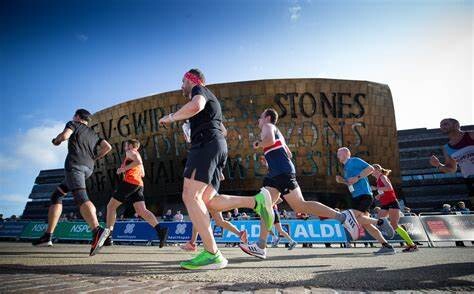
Bravin Kiptoo (59:37) is the 2019 African U20 Champion over 10,000m showing winning pedigree and then finishing as the third placer at the Birrell Grand Prix later that year and is joined by Antony Kimtai (59:45), the winner at Stramilano for 2024 and the runner-up at Napoli Half Marathon setting his P.B. a month earlier.
Vincent Kigen (59:48) was second at the Seville Half Marathon in January and again at the Malaga Half Marathon in March and Vincent Mutai (60:20) will make a third trip to the City as last year’s surprise winner and with a second place at the Cardiff Cross Challenge from November to his name.
Kento Nishi (61:09) of Japan, Ethiopian Man Enyew Nigat (61:17) and Tanzania’s Josephat Gisemo (64:27) will add further International flavour to a mainly Kenyan front of the field. Nishi is a 2:08:11 Marathon man, Nigat was seventh at the Yangzhou Half Marathon earlier this year and Gisemo was the runner up at the 2024 Generali Geneva Marathon.
Ben Connor (60:55) is the fastest British man and tackles the Cardiff course for the first time. Connor is the sixth fastest Briton in history and has shown recent fitness with an impressive second place at the re-scheduled English National Cross Country Championships in September.
Jonathan Collier (64:37) and William Bryan (64:58) are the remaining British Athletes who have dipped under 65 minutes in the past. Ciaran Lewis (65:17) is the fastest Welshman in action but is likely to face stiff opposition to the National title from Dan Hamilton (65:57) and Dan Nash (66:16).
Elite Women
Twice European Cross Country Champion Fionnuala McCormack (69:32) will make her Cardiff debut on Sunday. McCormack claimed her titles at Valenje, Slovenia in 2011 and at Budapest in 2012. Since then the Wicklow woman has become the second fastest Irish athlete in history over half marathon and over the full marathon distance. She became the first female Irish athlete in history to compete at five Olympic Games’ in Paris this summer.
Nelly Jepchumba (67:00) is the fastest entrant and was the winner at the Rio De Janeiro Half Marathon in August and the winner at the prestigious 2021 Madrid Half Marathon. Miriam Chebet (67:14) was the runner up at the Istanbul Half Marathon and notably the winner at the Ibiza 10k in 30:40.
Ethiopian Anchinalu Dessie (67:30) is another winner of the Stramilano Half Marathon in action here and was fourth at the Valencia Ibercaja 10k in 2022 with 31:01, an event that has recently been acknowledged as the World’s top annual road race.
Caroline Nyaga (67:36) is an exciting late edition to the race and will be chasing a huge new lifetime best. Nyaga is the 2022 African Champion over 10,000m and has a best over 5,000m of 14:30 set finishing fifth at the Diamond League final in Brussels last month. Daisy Kimeli (68:34) was the winner at the 2019 Trabzon Half Marathon and Adane Anmaw (69:47) was third at the Yanzhou Half Marathon.
Perhaps the most exciting prospect in women’s race however is Grace Nawowuna (debut) who will make her debut here but was fourth at the World Cross Country Championships in Bathurst in 2023 and has a 29:47 best for 10,000m. Nawowuna is likely to chase the early pace with Nyaga.
Polish Athlete Sabina Jarzabek (72:42) will be making the trip to Cardiff. She is a former Polish champion over 5km and 10km.
Olivia Tsim (73:38) claimed Bronze medals at the Welsh Half Marathon Championships here in 2022 and 2023. The Pontypridd Roadent will be in racing action after giving birth this summer. Alaw Evans (75:00) was the winner of the Cardiff 10k last year and is likely to be contesting for the Welsh title this time.
Australia’s Isabelle Pickett (75:36), Charlotte Taylor (75:46) and Ellen Feringa (75:54) of Philadelphia Runners Track Club are next fastest.
by FR Newsdesk
Login to leave a comment
Wizz Cardiff Half Marathon
The Cardiff University/Cardiff Half Marathon has grown into one of the largest road races in the United Kingdom. The first event took place back in 2003. The event is not only the UK’s second largest half marathon, it is Wales’ largest road race and Wales’ largest multi-charity fund raising event. The race is sponsored by Cardiff University and supported by...
more...This Girl Scouts CEO Plans to Run a Half Marathon on Every Continent
“Running plays an important role in my professional life as training for a race requires strategy, discipline, and accountability—so does leading an organization.” Reason for Running: I love how much running affects me mentally, physically, and emotionally! I love running by myself and with others.
Most Saturdays I can be found on a long run with my twin sister or my daughter (or both). It is our treasured time to catch up and the miles fly by!Growing up, I never played any sport aside from a short stint with soccer in middle school. I often joked that I would only run if a bear was chasing me and even then, it would depend on the size of the bear! As I was approaching 40, my husband said, “Wouldn’t it be fun to do a half marathon together.” I reluctantly agreed.
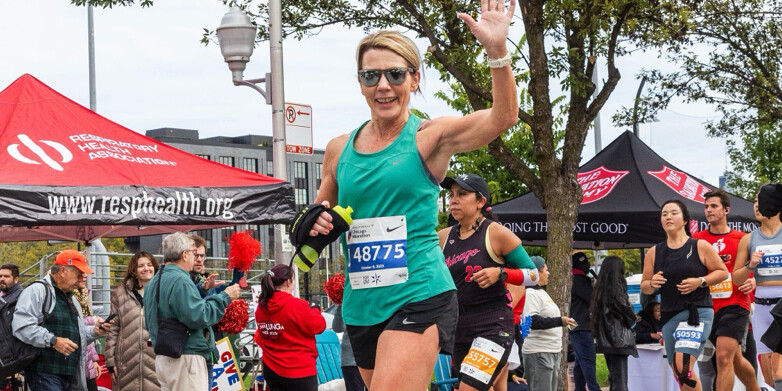
I had zero running gear and only knew how far a run was by tracking the miles when I drove the same route in my car. He loves to tell the story that after a few weeks of my run/walk training, I came home elated that I had run from the school near our home to our neighborhood without walking or stopping. I was so proud of myself. Only much later did I realize that was less than a quarter of a mile!
Soon after, I crossed the finish line of that first race, signed up for my next, and have been running ever since—19 years! I used the Jeff Galloway training schedule for beginners to run that first half marathon.
After that, for many years, I would run two half marathons in the spring and two in the fall and signed up for many 5Ks and 10Ks in between. The first few years, when my kids were young, most of my runs were local. As the years went by, I started combining my love of travel with my love of running. Some of my favorite United States races include the Oregon Wine Country Half Marathon and Nashville Rock n’ Roll.
In 2018, I joined the Seven Continent Club and have run half marathons in Australia, Iceland, Patagonia, Antarctica, and many in the States. I have Africa and Asia planned for 2025 and 2026. If all goes as planned, I’ll complete the seven continents when I turn 60.
After more than 70 half marathons, I decided to train for a full and since fall 2019, I have completed eight full marathons.
A friend once told me that he sets three goals each year—one personal, one professional, and one health. I decided to do the same, and this habit is the reason for so many positive things I’ve done in my life, including earning my MBA, becoming a business owner, and saying yes to my husband when he suggested training for that first half marathon many years ago.
In 2012, I joined Girl Scouts of Eastern Missouri as their chief operating officer and then CEO. I am honored to now serve as the national CEO for Girl Scouts of the USA. Running plays an important role in my professional life as training for a race requires strategy, discipline, and accountability—so does leading an organization. I come up with some of my best ideas on long runs. I think my team rolls their eyes when I have a 20-miler—they probably wonder what ideas I might come back with.
I want our Girl Scouts to find what they enjoy most that best supports their mental, physical, and emotional health. Many of our Girl Scout councils sponsor their own run/walks. I love to see our girls introduced to running through these events.
I now run three to four times a week, cross-train two days a week, and have one day of rest. As soon as I finish one training schedule, I move to the next.
Running has changed my life—the people I’ve met, the goals I’ve achieved, the places I’ve seen—all made possible because of that simple question: “Wouldn’t it be fun to do a half marathon together?” I know I am stronger physically, mentally, and emotionally because of running.These tips have made my running journey a success:
1. Go for just one mile
This habit has served me well so many times when I don’t really feel like going out—especially when it’s too hot, too cold, too windy, too hilly, too late, too early. Just tell yourself “I can run one mile!” It rarely ends up being only one mile!
2. Track your runs
With all the amazing apps out there, I still print my running schedule, I highlight each completed run. The feeling of accomplishment is the motivation for the next day.
3. Support yourself
Positive self-talk is important. Whether it was the best run/race or not so good, own the fact that you showed up. I’m a personal fan of the sign I see at races that says, “Be proud! You’re out here!” And, when you fall off your schedule, don’t throw in the towel until the next week, the next month, or the next race—pick it up the next day.
4. Know it’s never too late
Finally, there’s no time limit on when to begin! Pick your distance and find a training plan. There are fabulous training schedules and wonderful training groups out there. Do your research, choose what works for you, and just start.
by Runner’s World
Login to leave a comment
Pineapple marathon man under scrutiny for cutting course at Sevilla Marathon
Moshe Lederfien, a 70-year-old Israeli marathoner who has become famous for balancing a pineapple on his head during marathons, has received scrutiny from Spanish citizens after he did not run the full course at the 2024 Zurich Marathon de Sevilla on Sunday.
Lederfien crossed the finish line at the Zurich Marathon de Sevilla in three hours, 21 minutes, and 48 seconds, which would have been a new Israeli masters M70+ age group record. Later, it came out that he only ran the second half of the race, starting at the 25 km mark. The race did not disqualify his result, but took him off the leaderboard for age-group prize purposes. Lederfien would have finished second in the M70-74 age category.
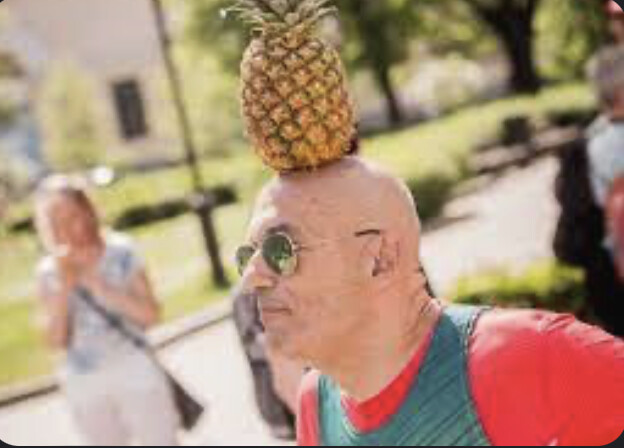
Several media outlets in Spain, like MARCA, reported on his jaw-dropping three-hour result while balancing a pineapple, and have been called out by Spanish citizens. “Running a half marathon with a pineapple in 3:21 is fine, especially if it’s to raise awareness. But it’s not 42.195 km at 4:46 pace,” one runner wrote on X. “The guy started running at 25 km… It’s impossible at that speed to make that time (which for half of people is incredible, for a 70-year-old person even more, and if he also has a pineapple on his head, infinitely more),” wrote another.
Lederfien has not come out and said whether he intended to only run half the course; but to activate the timing chip, he would have had to cross the start line and then exit the course. Lederfien has previously participated in other marathons in Berlin, Valencia and New York; and in all of them, he has run with a pineapple on his head. “Fruit is one of the most important foods for people, and I want to bring that good to everyone,” Lederfien indicated in an interview with Time News. “The objective is to raise awareness about the health benefits of eating fruit and the importance of caring for the environment.”
The pineapple marathon man also has an Instagram account with 4,500 followers, where he documents all of his races.
by Running Magazine
Login to leave a comment
Ethiopia’s Waganesh Mekasha to race TCS Toronto Waterfront Marathon
Ethiopian women have featured prominently at the TCS Toronto Waterfront Marathon winning eight of the past fifteen editions of this World Athletics Elite Label race. If Waganesh Mekasha has her way this dominance will continue.
The 31-year-old mother of two brings extraordinary credentials to this year’s event on October 15th as well as some useful ‘intel’.
“I watched the Toronto [Waterfront] marathon many times on television and Yihunilign Adane, who won the 2022 TCS Toronto Waterfront Marathon, told me more about it,” she reveals. The two not only share a manager – Britain’s Malcolm Anderson of Mayo Sports – but each won their respective divisions in the 2023 Ottawa Marathon.
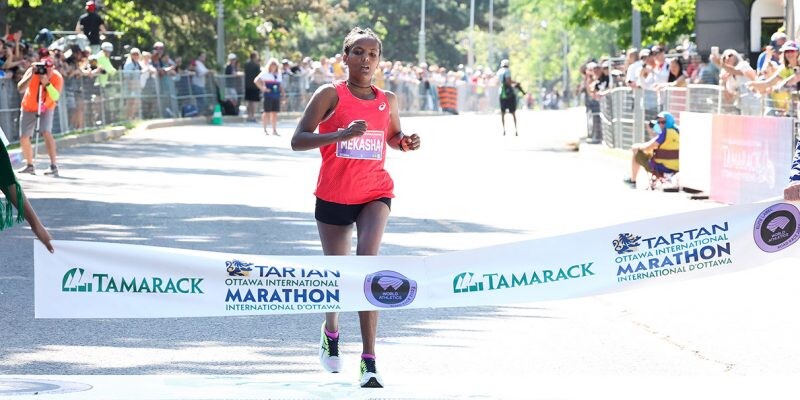
“I watched the Toronto [Waterfront] marathon many times on television and Yihunilign Adane, who won the 2022 TCS Toronto Waterfront Marathon, told me more about it,” she reveals. The two not only share a manager – Britain’s Malcolm Anderson of Mayo Sports – but each won their respective divisions in the 2023 Ottawa Marathon.
Asked if Levins, who used the pacesetting task as a long training run following his second-place finish in the Canadian 10km championship, did a good job she responds with grace.
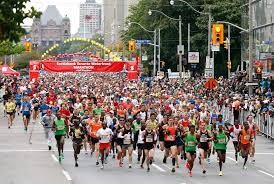
“He did an amazing job until he dropped out. He was not only pacing me but motivating us all the way to 35km,” she remembers.
Ironically, Waganesh nearly didn’t make it to the start line in the nation’s capital. Despite getting her visa well in advance of the race she was prevented from boarding her flight to Canada by airline officials.
“Oh, yes that was frustrating,” she recalls. “I was shocked when the boarding person told me that I cannot fly to Canada. But many thanks to the race organizers and to my management I made it at last. But I stayed eight hours in Frankfurt airport. I hope that will not happen again.”
Fifteen hours in the air followed by eight stuck in an airport terminal would unsettle most athletes but Waganesh has proven resilient time and time again. Although she ran extremely well at Ottawa, also a World Athletics Elite Label race, she can point to a credible 5th place finish at the 2022 Chicago Marathon in 2:23:41 as another career highlight.
Chicago is one of only six World Athletics Major marathons and a place in the elite section is highly coveted. A top five finish is, therefore, an extraordinary achievement.
Waganesh has run faster than both of her aforementioned appearances in Ottawa and Chicago. Her personal best is 2:22:45 which she recorded at the 2019 Dubai Marathon. She would like to go faster on Toronto’s course where the course record is 2:22:16 held by Kenya’s Magdalyne Masai from 2019.
“My training is going very well. I am so excited to be back to Canada,” she says knowing she has a couple of months of intense work to complete before her journey to Canada. “If the conditions are good, and we have a good pacemaker, I will break the course record and win the race.”
That’s a bold prediction. The record is a very good one. But her confidence comes from training under the guidance of famed coach Getamesay Molla alongside other great Ethiopian marathoners such as Yeshi Kalayu who has a personal best of 2:21:17, Azmera Gebru (2:20:48 PB) and Tigist Ambaychew (2:18:03 in Berlin 2022). Their training is done outside Addis in the dusty hills of Sendafa and Sululta at 2750m altitude.
by Paul Gains
Login to leave a comment
TCS Toronto Waterfront Marathon
The Scotiabank Toronto Waterfront Marathon, Half-Marathon & 5k Run / Walk is organized by Canada Running Series Inc., organizers of the Canada Running Series, "A selection of Canada's best runs!" Canada Running Series annually organizes eight events in Montreal, Toronto and Vancouver that vary in distance from the 5k to the marathon. The Scotiabank Toronto Waterfront Marathon and Half-Marathon are...
more...7 Steps You Should Follow To Become A Marathon Champion
Did you ever have the inkling or desire to run a race? Many people have been drawn towards joining races like a marathon because of their excitement and challenges. The nature of a marathon, a long-distance foot race, will test your physical abilities and your mental strategy.
The legend of the marathon comes from the Greek messenger, Pheidippides, who took part in the Battle of Marathon. The Greek messenger saw a Persian vessel changing course toward Athens to claim a false victory there.
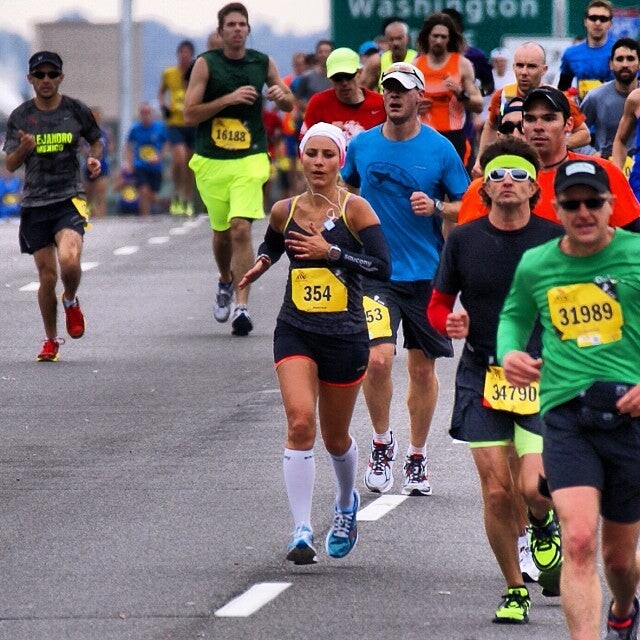
The vessel ran the entire distance to Athens without stopping, discarding their weapons and clothes to shed as much weight as possible. Upon their arrival, they formed an assembly and shouted, “we have won,” before collapsing and dying.
In modern times, the organizers of the 1896 Olympics wanted a popularizing event that would recall the glory of ancient Greece. The marathon race was proposed by Michel Breal and supported by Pierre de Coubertin, founder of the modern Olympics. An Olympic marathon was organized where Soyridon Louis first finished the male-only race in 2 hours, 58 minutes, and 50 seconds.
After the Olympic marathon was conducted, there was a marathon mania. Many people all around the world conduct their marathons in their localities. These allowed numerous runners to learn the excitement and challenges the marathon provides. It also enables them to note the steps runners need to follow and remember to become a marathon champion.
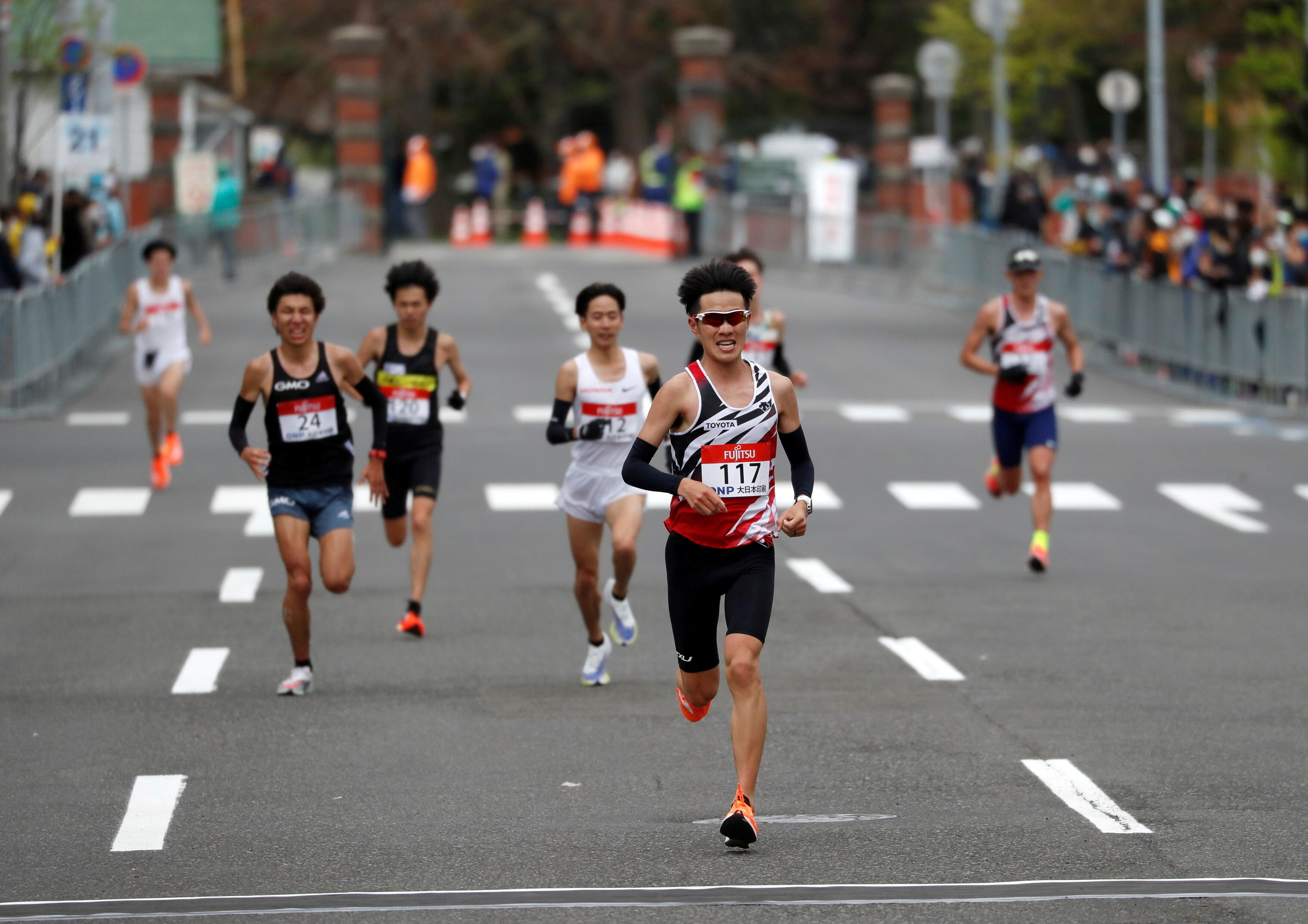
Drink Pre-Workout Supplements
Drinking pre-workout supplements is very critical for marathon runners. These supplements provide benefits that would enhance your chances of finishing marathons and, most importantly, winning them. They contain amino acids and vitamins designed to improve your training.
Looking at Pre-Workout Supplements Guide would help you choose what’s best fit for you, your health, and the marathon you’re running. Just ensure that the pre-workout supplement you’ll be drinking will:
Eat a Healthy Diet
You must always keep your health a top priority. A healthy diet through eating vegetables, fruits, and low-sugar and salt food provides you with more nutrients that your body needs to prepare for the marathon.
Hydration is also important. You must drink at least eight glasses of water daily to avoid dehydration. You don’t need any health emergency during training or the marathon, so keeping yourself hydrated throughout the process is essential.
Gear Up
Choosing the proper gear is critical. Wearing the right shoes prevents injuries and provides the proper support and stability during the run. Some might be pricey, but they’re worth it, especially because comfort is important when running a long race like a marathon.
You need to also remember the 20 degree rule. Check the temperature on the day of the marathon and then add 20 degrees to it. After that, decide on the clothing you need to wear based on that data.
Pace and Plan Training Session
One common mistake of runners who want to become marathon champions is trying to do too much too quickly. This process will burn them out, injure them, and cause them to lose their affection for running.
It’s why planning your training session in coordination with your pace is essential. Give yourself and your body the time to get used to the rigid training. It would also help you determine your fueling strategies – what energy gel you need or if you need more electrolyte drinks.
Mitigate Injury Risks
An injury is detrimental to all runners. Imagine training for weeks and months, and because of an injury, you can’t participate. It’s why you need to know how to stretch correctly early on. You’ll also need to listen to your body to approach the training process to avoid serious injuries.
Get Enough Sleep
When you lack sleep, you can’t provide your 100% because you don’t have the energy, stamina, and focus. You will not be able to properly train because there’s a high risk of you being hurt or injured since it affects your athletic performance.
If it’s possible, get at least seven to eight hours of sleep every day. Being well-rested helps you stay alert and energized during the training and the marathon.
Set Goals
It would be helpful for all runners to set a goal they want to achieve after your training sessions. You can set smaller goals at first so that you won’t pressure yourself to win the first race you compete in immediately. You can simply set that you must finish the race.
If you have achieved that, you can move on to bigger goals, like finishing in the top ten and then the top five. If you’ve achieved that as well, you can now set your sights on the championship since you’ve trained yourself well enough and did it in a way that would not put too much pressure on yourself.
Final Thoughts
Running a marathon takes a lot of process. It’s not a sprint where you can immediately run and achieve your goal. In a marathon, there are a lot of factors that you need to consider. It’s a step-by-step process. It takes a long time to achieve, but when you become a marathon champion, it will all be worth it.
Login to leave a comment
British man completes 365 straight marathons, earning a well-deserved beer
On Saturday, Gary McKee completed his 365-day run streak of a marathon every day in his hometown of Cleator Moor, U.K. Thousands of supporters and media were on hand to help him celebrate his accomplishment of covering more than 9,500 miles (15,289 kilometers) while raising more than $2,000,000 for charity.
McKee’s marathon streak was not the only streak that ended. McKee went one year without drinking, and celebrated his huge run with a well-deserved cold one. The beer was a personalized craft IPA from Ennerdale Brewery in Cumbria, U.K., called “The Marathon Man 365 IPA”.
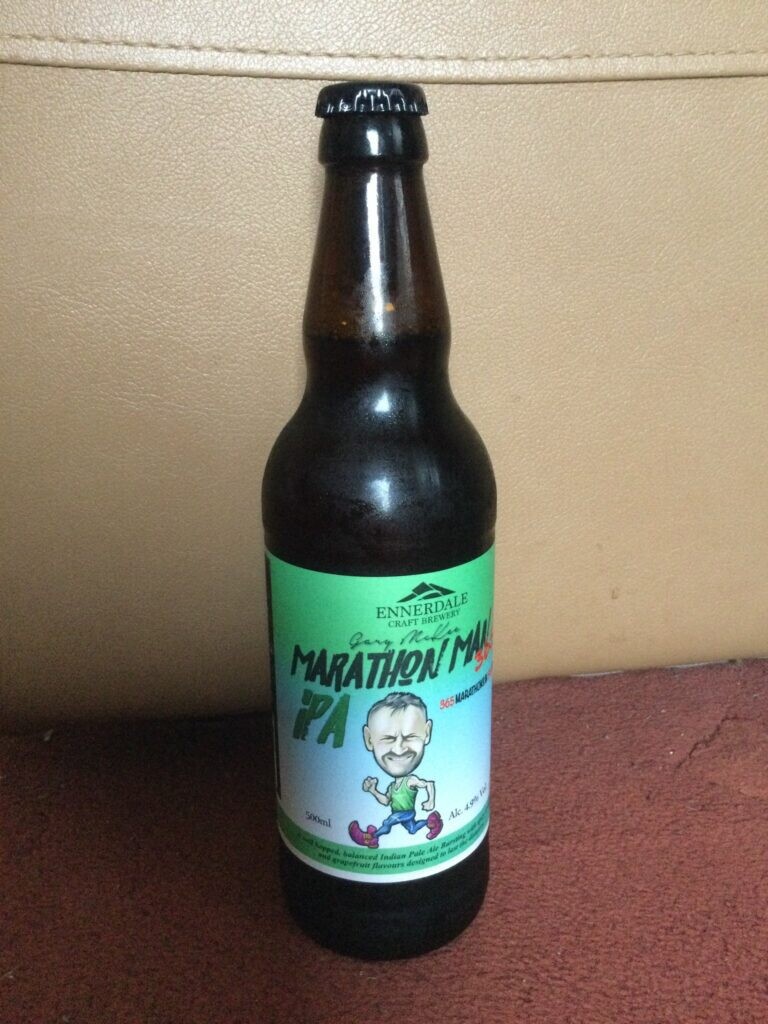
McKee ran the final stretch with his friends and family and immediately thanked everyone who came out for all their support during his challenge: “The reason I’m doing this is that I’m lucky enough to be able to take on a physical challenge of this scale, and every day I think about all the people going through cancer treatment who face their own physical and emotional challenges.”
McKee ran for Macmillan Cancer Support and Hospice in West Cumbria, which supported his father through a cancer diagnosis in 1997. His father recovered from cancer, but died from an unrelated illness in 2005.
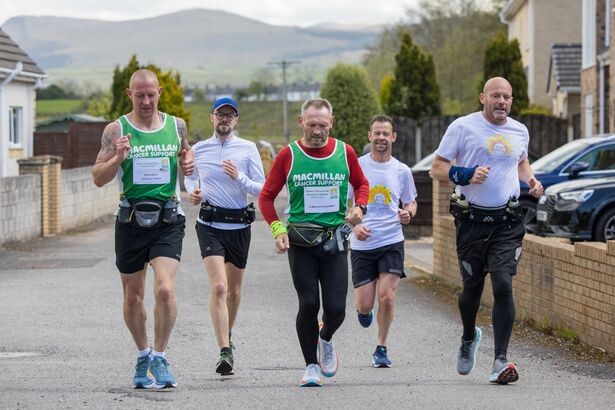
McKee, who is himself a father of three, routinely woke up at 5 a.m. and headed out on his marathon before starting his work shift at 2 p.m.
Although McKee is considered to be the first British runner to run 365 consecutive marathons, Spanish ultrarunner Ricardo Abad Martinez holds the world record, with 607 marathons in 607 days between October 2010 and February 2012.
McKee told local news he will take a break from marathoning over the next couple of weeks to spend time with his family before planning his next challenge.
by Running Magazine
Login to leave a comment
Top 10 most popular running stories of 2022
Tt’s time to recap the most popular running stories. This year, the running community saw a lot of firsts and controversies. It was the first time we were made aware of a 6-year-old running a marathon; it was also the first time we saw a runner who chain-smoked during a marathon. As many of us returned to our favourite races and conquered new goals, we can’t ignore some of the mind-boggling stories.
Here is a countdown of the top 10 most popular running stories of the year.
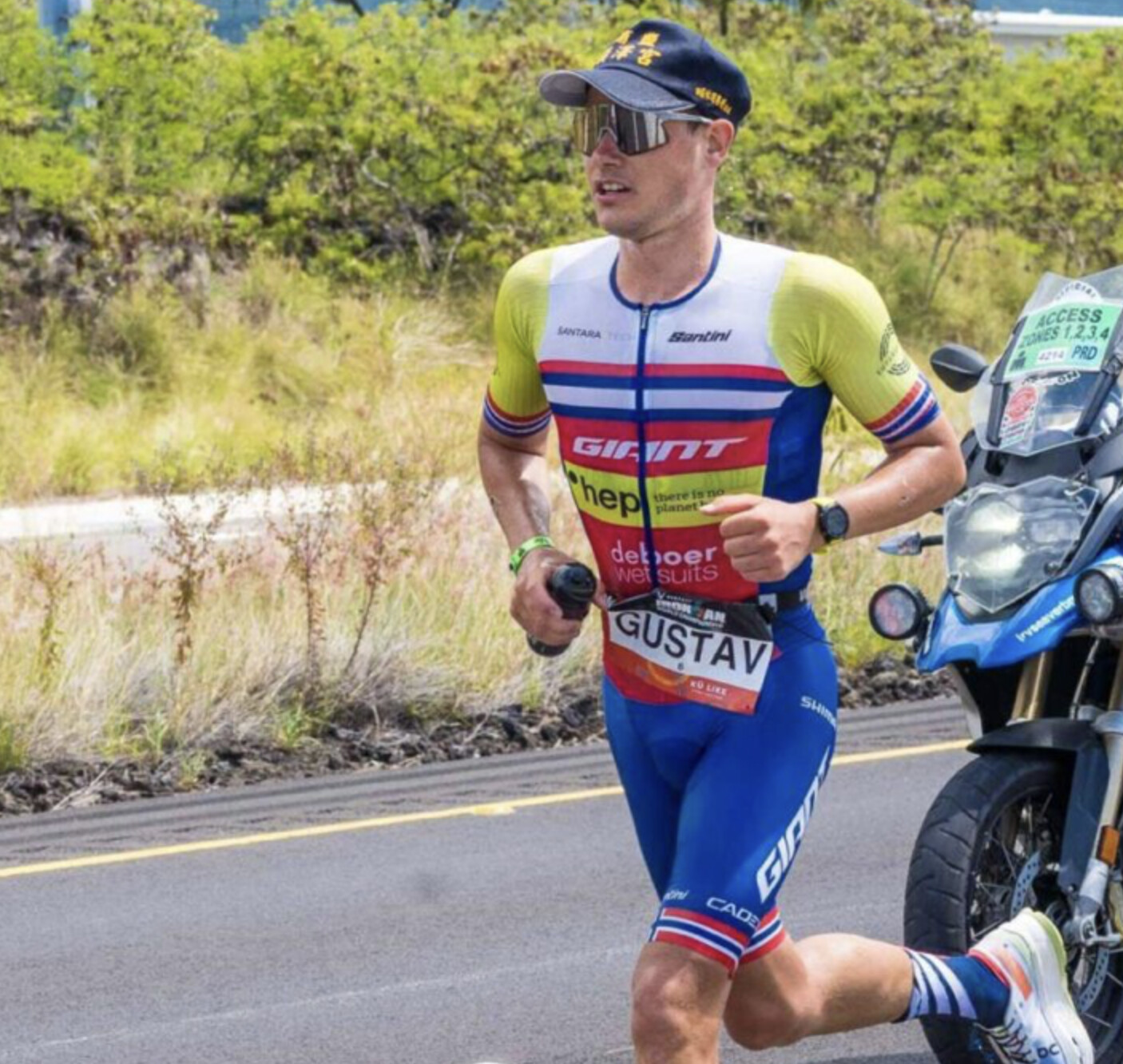
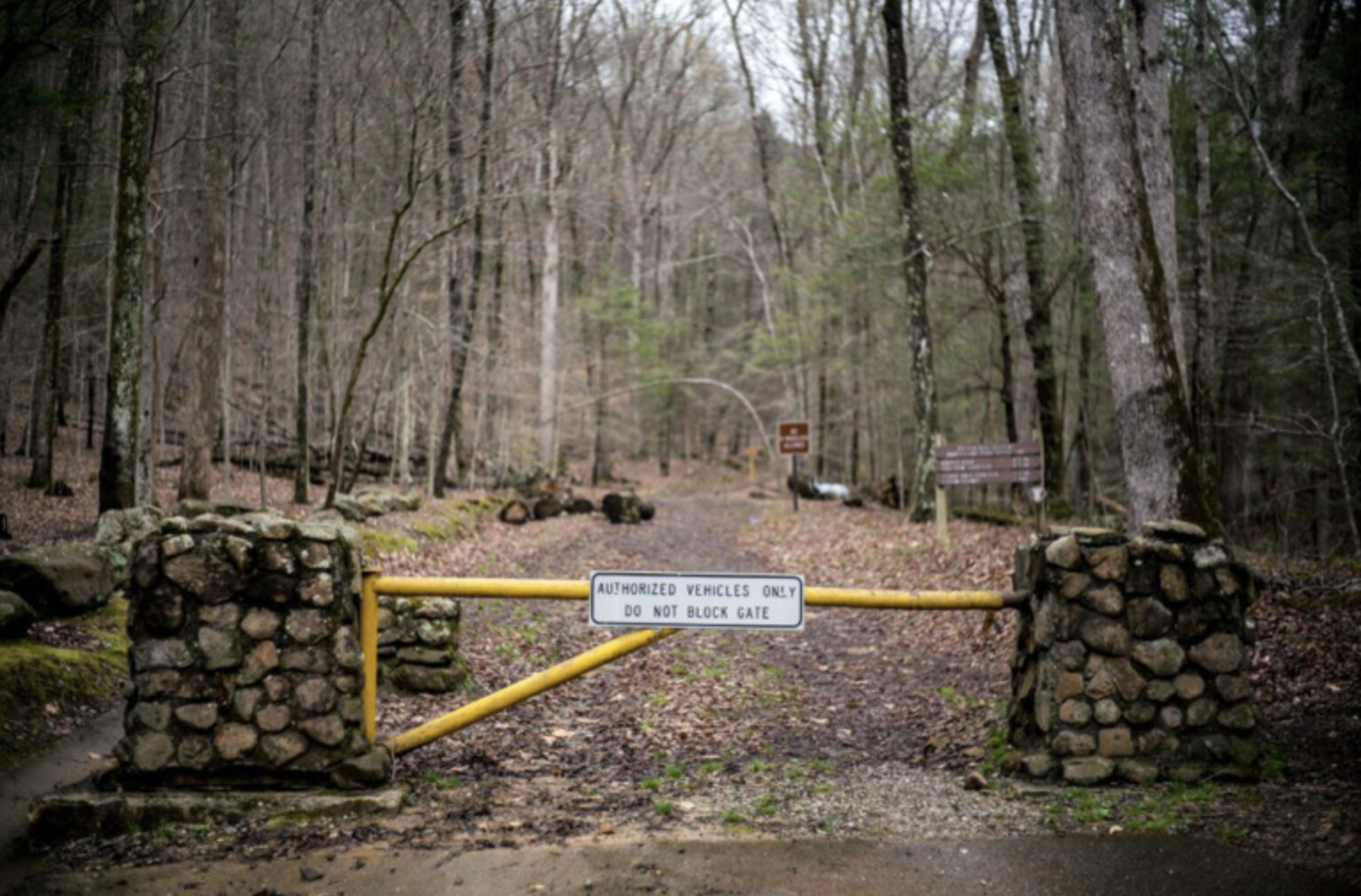
10) Ironman World Championship champion’s “chunky” shoes spark controversy
In October, Norway’s Gustav Iden made headlines as he ran a 2:36 marathon after a 180-kilometre bike and 3.8 km swim, earning his first Ironman world championships title. It wasn’t only his wild time that turned eyes, but the On Cloudboom Echo 3 carbon-plated running shoes that he wore, which have a reported stack height of 50 mm (legal for Ironman races).
9) Six-year-old’s marathon sparks controversy on social media
In May at the Flying Pig Marathon in Cincinnati, Ohio, a family of eight from Bellevue, Ky., all completed the 26.2-mile race together in eight hours and 35 minutes, including two children aged 12 and six. The family took on tons of criticism over the advisability of allowing a six-year-old to cover the marathon distance. Many experienced marathoners and coaches, including Lee Troop and Kara Goucher, have weighed in online, stating that six is too young for the marathon.
8) Turkey trot runner takes out his competitor at finish line
In November at a local 10K turkey trot, Xavier Salvador of Washington, D.C., impeded the line of Jack Huber of Delmar, N.Y., with 50 metres to go, after noticing Huber threatening to pass him on the right. Instead of checking if Huber was OK after the fall, Salvador made sure his GPS watch was stopped.
7) Barkley Marathons ends with no finishers (again)
In March, for the fifth straight year, the Barkley Marathons in Frozen Head State Park near Wartburg, Tenn., came to an end with zero finishers, after the only remaining two competitors, Karel Sabbe and Greig Hamilton, bowed out on their fourth loop (of five) of the 20-plus mile course. Sabbe’s fourth loop was one for the history books, as he was found off-course in another town, chatting with a garbage can who he thought was a person.
6) ‘Ultramarathon man’ Dean Karnazes attacked by coyote during 150-mile race
In August, acclaimed ultrarunner and author Dean Karnazes posted a video that he was attacked by a coyote during Headlands 150-mile Endurance Run, held outskirts of San Francisco. Karnazes said was OK, but that he had several cuts on his face and body from the attack.
5) “Poopgate” continues as Arizona high school bans track use
In February, human feces were found under the bleachers at the Red Rock High School track in Sedona, Ariz., which resulted in a ban on public use. In the aftermath, there was plenty of buzz and finger-pointing on social media about the ghost pooper’s possible identity, using the hashtag #poopgate. To this day, it is still a mystery who did the deed.
4) California man runs an ultramarathon in roundabout
In November, a runner from Healdsburg, Calif., was getting tired of his usual running routes, so he went out on a six-hour, 58-kilometre run around the local roundabout, never once switching directions. The best part is that, a week later, he did it again, in the opposite direction.
3) WATCH: Florida high school runner gets sucker punched mid-race
In March, we saw a candidate for “wildest video of the year” when a high school runner at a Florida track meet was sucker punched and knocked to the ground by another athlete during a 1,600m race.
2) Colorado runner wins all four races at Disney Marathon weekend
In January, Brittany Charboneau of Colorado climbed to the top of the podium on four occasions during the Disney Marathon Weekend in Orlando, Fla. She won the 5K, 10K, half-marathon and marathon over four days, while dressed as her favourite Disney characters. Simply amazing!
1) Chinese man runs a 3:28 marathon while chain-smoking
In November, we witnessed one of the wildest running stories ever, when Uncle Chen went viral for chainsmoking cigarettes during the Xin’anjiang Marathon in Jiande, China. It is well known that smoking cigarettes hinder running performance, but that didn’t seem to bother 50-year-old Uncle Chen, who clocked an impressive three hours and 28 minutes.
by Running Magazine
Login to leave a comment
British man Gary McKee to make history for most marathons in one year
Some people’s New Year’s resolution is to quit drinking. For others, it’s to run a marathon. But for Gary McKee of Cleator Moor, in northwestern England, his resolution was to quit drinking and run a marathon–every single day for a year. McKee is two days away from completing his unbelievable challenge of running 365 consecutive marathons.
McKee, who has gained the nickname The Marathon Man, has covered more than 9,500 miles (15,289 kilometers) in 363 days while raising more than $2,000,000 for charity. His distance covered is equivalent to running across Canada three and half times. McKee’s challenge will come to an end on New Year’s Eve.
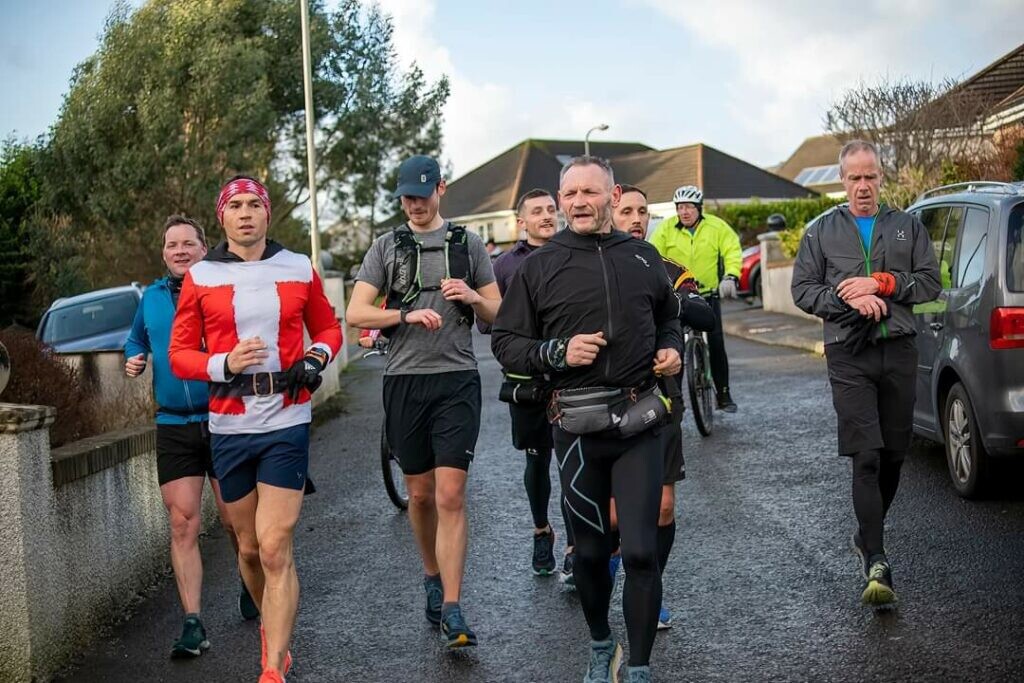
McKee, 53, told The Guardian, that he intends to have one celebratory beer to celebrate his efforts and year-long drought.
The father of three routinely wakes up at 5 a.m. and heads out on his marathon before starting his work shift at a nearby power plant at 2 p.m.
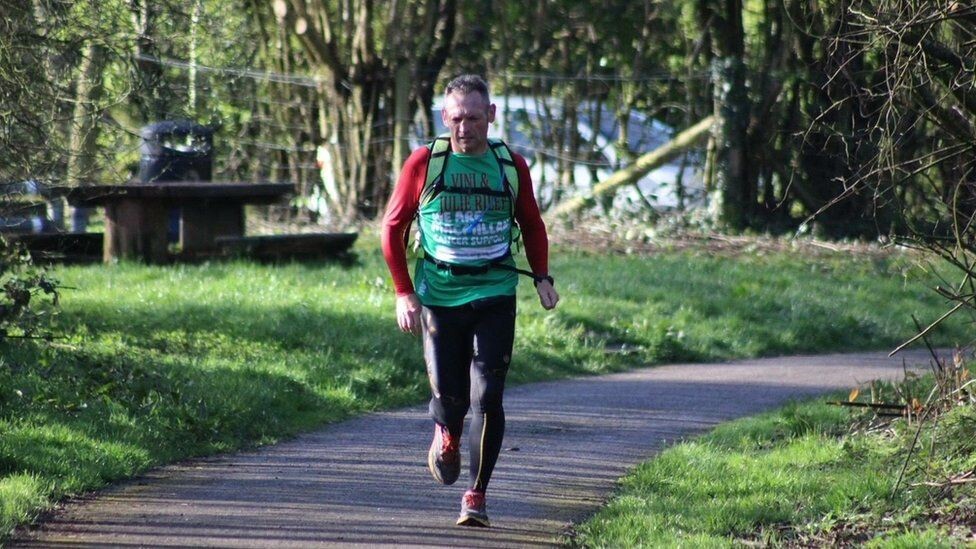
McKee has completed most of his marathons between three and a half and four hours. In 2021, McKee completed 110 marathons in a row.
McKee is running for Macmillan Cancer Support and Hospice in West Cumbria, which supported his father through a cancer diagnosis in 1997. His father fully recovered from cancer but died from an unrelated illness in 2005.
You can follow McKee’s 365 challenge on his Strava or Twitter page.
by Marley Dickinson
Login to leave a comment
Ultramarathon man Dean Karnazes attacked by coyote during 150-mile race
Acclaimed ultrarunner and author Dean Karnazes, 59, can boast some of the wildest accomplishments in endurance sports, but a coyote attack mid-race was a first for him.
The California-based athlete has raced (and won) some of the most legendary ultras in the world, run to the South Pole, and completed 50 marathons in 50 consecutive days in 50 different states. He’s even been attacked by a shark–but never a coyote. The athlete shared his experience mid-race on Instagram on Friday, calling it “terrifying.”
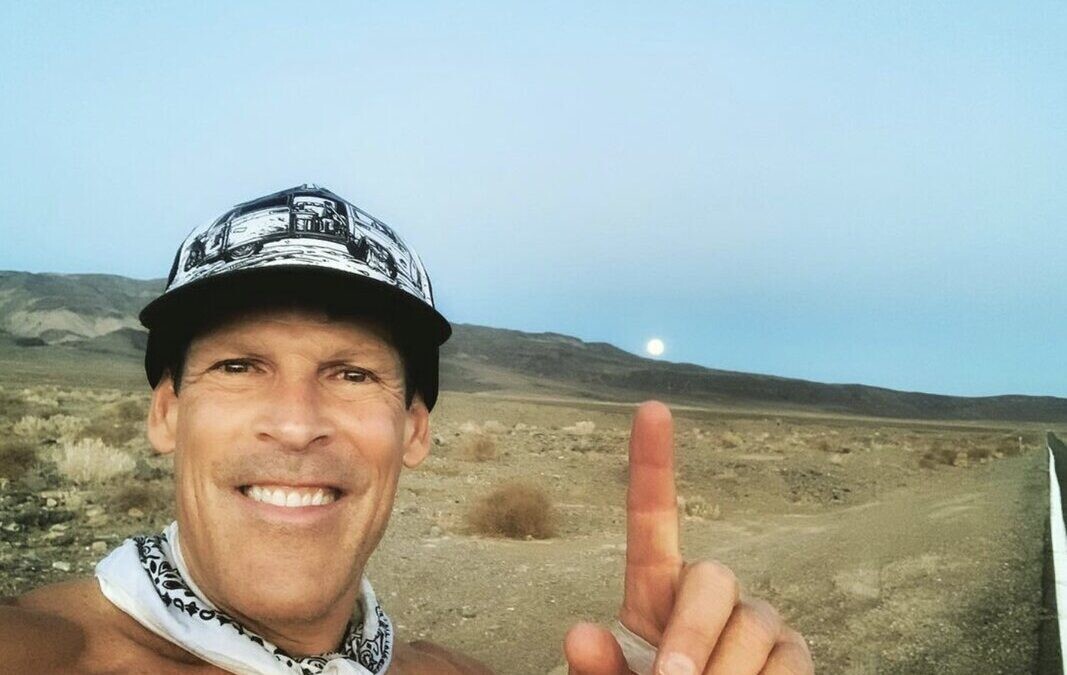
Karnazes was running Headlands 150-mile Endurance Run, a race held in Sausalito, Cali. It’s an event he has returned to over the years of his lengthy career. Headlands Endurance Run hosts everything from a marathon distance trail-race to the 150-miler.
Prior to the animal attack, Karnazes shared a video to Instagram of the night lights along the Golden Gate Strait and San Francisco Bay area. “I’m running the Headlands 150-mile foot-race in Marin County, and if you’re wondering why anyone would do such a thing, maybe this view this will give you part of the answer,” Karnazes said.
Shortly afterward, a bloodied and clearly shocked Karnazes shared his coyote debacle. “I was attacked by a coyote, that was a first,” Karnazes said. “It knocked me over; I was running with poles, thankfully, and I whacked it and it ran away.”
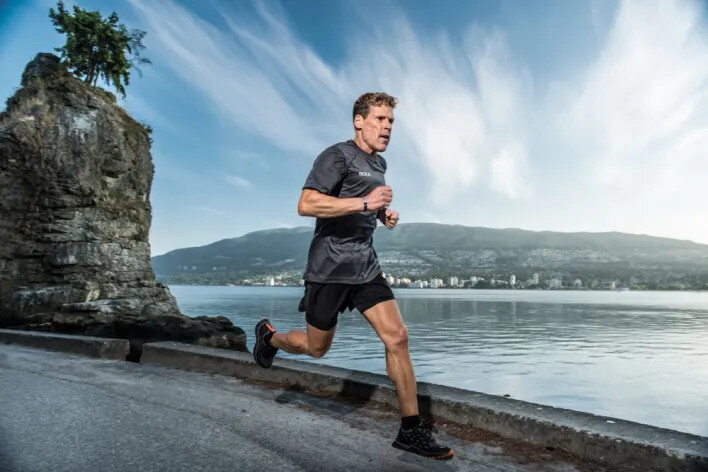
Karnazes said he wasn’t sure what he was going to do, but that he thought he had better keep going or “it might come back for me.”
Karnazes posted to his Instagram story a few hours later explaining that the coyote won the battle. With no result for his race on Ultrasignup, it appears the accomplished athlete may have had to drop out. If there’s ever a valid excuse for a DNF, a coyote attack is undoubtedly it.
by Keeley Milne
Login to leave a comment
2022 Brooklyn Half Marathon to Return at Full Capacity for 40th Running on Saturday, May 21
More than 22,000 runners expected to race 13.1 miles from Prospect Park to Coney Island.
The RBC Brooklyn Half will return at full capacity for the first time in three years on Saturday, May 21, with more than 22,000 runners expected to race in the event’s 40th running. The race, which was established in 1981, is now one of the country’s premier half marathons with accompanying youth races and a three-day pre-party to celebrate Brooklyn.
“New York Road Runners has such a rich 40-year history in our biggest borough, Brooklyn, and we are excited to be bringing back our premier event in the borough, the RBC Brooklyn Half, for the first time since 2019,” said Ted Metellus, NYRR VP of Events and Race Director. “Since 1981, even before half marathons were popular, the Brooklyn Half has been taking place every year and is now the highlight of NYRR’s year-round presence in Brooklyn, which also includes programs for youth, seniors and the entire community.”
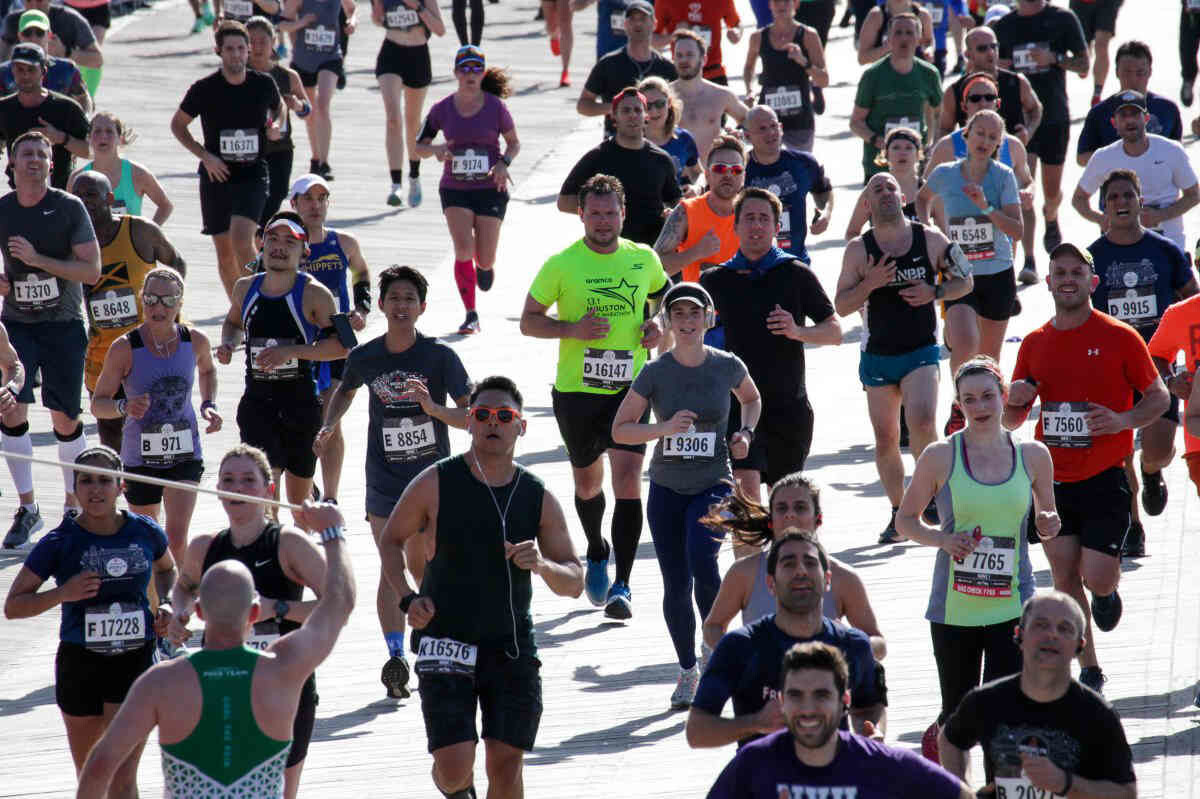
The RBC Brooklyn Half will take runners through the unique and diverse neighborhoods of Brooklyn, beginning at the Brooklyn Museum, passing the scenic Grand Army Plaza, and running through Prospect Park and along Ocean Parkway to the finish line on the famous Coney Island boardwalk.
Below are some highlights and initiatives to look forward to at the 2022 edition of the event:
40th Running: The first Brooklyn Half took place in early spring of 1981 on a course in and around Prospect Park with several hundred finishers. Since then, it has expanded to cover a large portion of Brooklyn and help bring the community together. In 2013, the year after Superstorm Sandy devastated the Brooklyn coastline, the Brooklyn Half helped reinvigorate Coney Island and reminded New Yorkers what makes Coney—and all of Brooklyn—so special. This year will mark the return of the event for the first time since the pandemic began, with Brooklyn Borough President Antonio Reynoso planning to attend.
New Title Sponsor: The Royal Bank of Canada (RBC) will serve as both the exclusive title partner and exclusive financial services and investment banking partner of the event for the first time, activating on race day as well as at the pre-party and post-race festivities. As a purpose-driven global financial institution, RBC, similar to NYRR, is strongly committed to giving back to communities.
Notable Names: This year’s field will include notable names such as TODAY Show’s Al Roker, Good Morning America’s TJ Holmes, TV personality Nev Schulman, and professional athlete Noah Droddy.
Ukrainian Running Club Members: More than 40 members of NYC’s local Ukrainian Running Club will participate, as running has brought the club members closer together as a form of support while the war goes on in Ukraine. The club is captained by Dmytro Molchanov, who moved from Brooklyn to Ukraine seven years ago and will be an NYRR pacer for the 1:20 group.
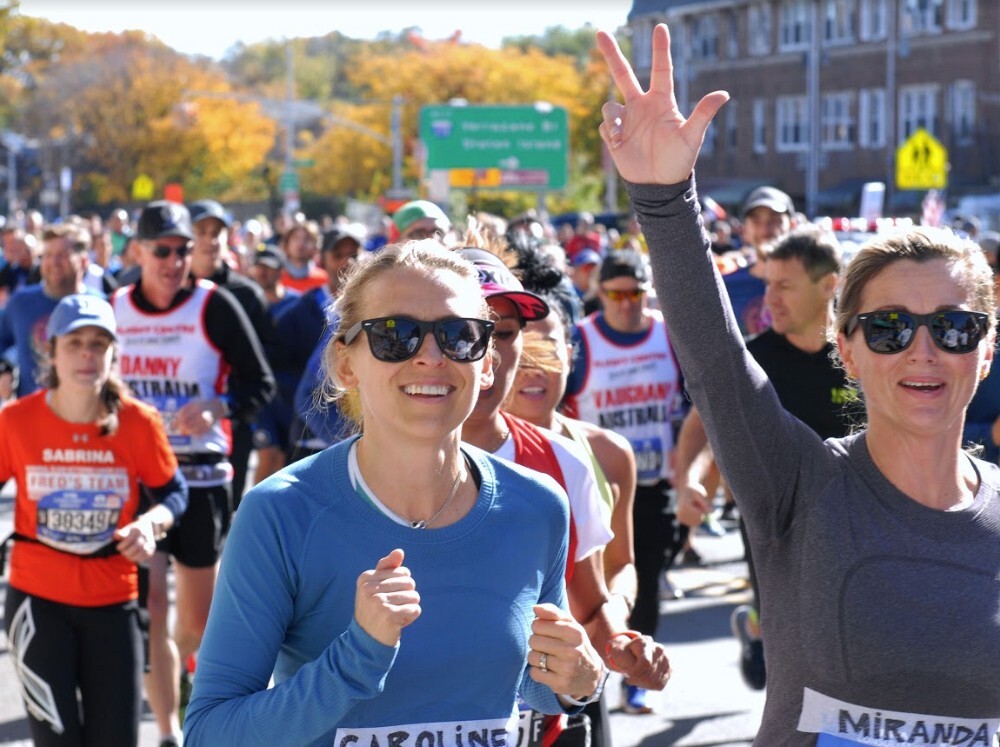
5-Year Anniversary: Prospect Heights residents Krissa Cetner and Alex Salazar, two avid runners, stopped to get married in front of 100 guests at Mile 6 of the 2017 Brooklyn Half and then hopped back on the course to finish the race. Running for NYRR Team for Kids, the couple will return this year to run in honor of their 5-year anniversary and plan to wear the same tuxedo shirt and bridal shirt. Their 3 1/2 year old son, Myles, will be there to cheer them on.
Guinness World Record Attempt: Local elite Marie-Ange Brumelot of Queens Distance Runners and her father will go for the Guinness World Record for the fastest half marathon run by a parent and child. Brumelot represented France at the 2020 World Athletics Half Marathon Championships and is a 1:14 half marathoner.
Brooklyn’s “Marathon Man”: At 70 years old, Brooklyn’s Leroy Cummins is speeding up, not slowing down. As a member of the NYRR Striders fitness program for older adults, he ran his first marathon last fall at the TCS New York City Marathon, finishing second in his age group in a time of 3:35:15, a quick 8:13 mile pace. He then ran the Boston Marathon in April, and now, known as the “Marathon Man” to his East Flatbush neighbors, will look to finish first place in his age group in Brooklyn.
Boardwalk Kids Run: The whole family is invited to join in on race day activities, as kids ages 8-18 will take part in the Boardwalk Kids Run at the RBC Brooklyn Half for free on Coney Island as part of the Rising New York Road Runners youth program.
RBC Brooklyn Half Pre-Party Presented by New Balance: From May 18 to May 20, runners will pick up their bibs, shop for race merchandise, listen to live music, and dine at local food trucks at the RBC Brooklyn Half Pre-Party Presented by New Balance at Pier 2 in Brooklyn Bridge Park.
Virtual RBC Brooklyn Half: Runners who are unable to be in Brooklyn can participate in the race from anywhere in the world at their own convenience between May 14 and May 22.
About New York Road Runners (NYRR)
NYRR’s mission is to help and inspire people through running. Since 1958, New York Road Runners has grown from a local running club to the world’s premier community running organization. NYRR’s commitment to New York City’s five boroughs features races, virtual races, community events, free youth running initiatives and school programs, the NYRR RUNCENTER featuring the New Balance Run Hub, and training resources that provide hundreds of thousands of people each year with the motivation, know-how, and opportunity to Run for Life. NYRR’s premier event is the TCS New York City Marathon. Held annually on the first Sunday in November, the race features a wide population of runners, from the world’s top professional athletes to a vast range of competitive, recreational, and charity runners. To learn more, visit www.nyrr.org.
Login to leave a comment
RBC Brooklyn Half Marathon
The RBC Brooklyn Half takes you on a 13.1-mile tour through the Borough of Kings, from Prospect Park to the Coney Island Boardwalk.NYRR is thrilled to welcome Royal Bank of Canada (RBC) as the title sponsor of the new RBC Brooklyn Half. The race starts at Prospect Park and ends with a finish like no other on the Coney Island...
more...Marathon man Gary McKee prepares for 365 marathons in 365 days
Marathon man Gary McKee has shaken off concerns that his latest challenge of completing 365 marathons in 365 days is one step too far.
The 52-year-old raised £200,000 by completing 110 marathons in 110 days only a few months ago, with the dad of three now aiming even higher this time around.
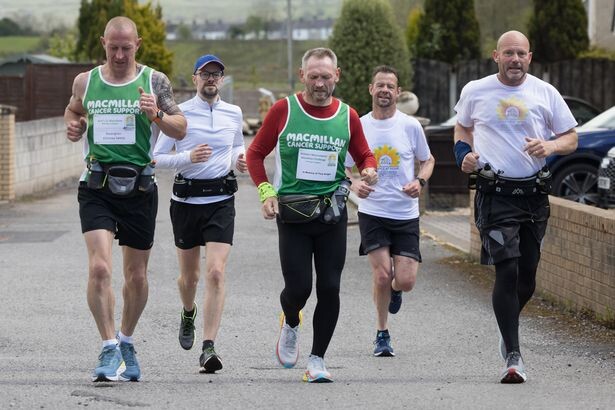
From January 1 to December 31, Gary will complete his biggest challenge to date in an effort to raise £1 million for two charities close to his heart: Hospice at Home West Cumbria and Macmillan Cancer Support.
Cleator Moor man Gary is no stranger to tough challenges and over the years, his fundraising feats have included jumping from aeroplanes, climbing Kilimanjaro, and cycling through Brazil.
Despite being his toughest challenge to date, Gary is confident he’s got what it take to succeed.
“Some people think you are crazy and I understand why people think that because they think of themselves and think ‘I could never do that’, but they don’t know me,” he said.
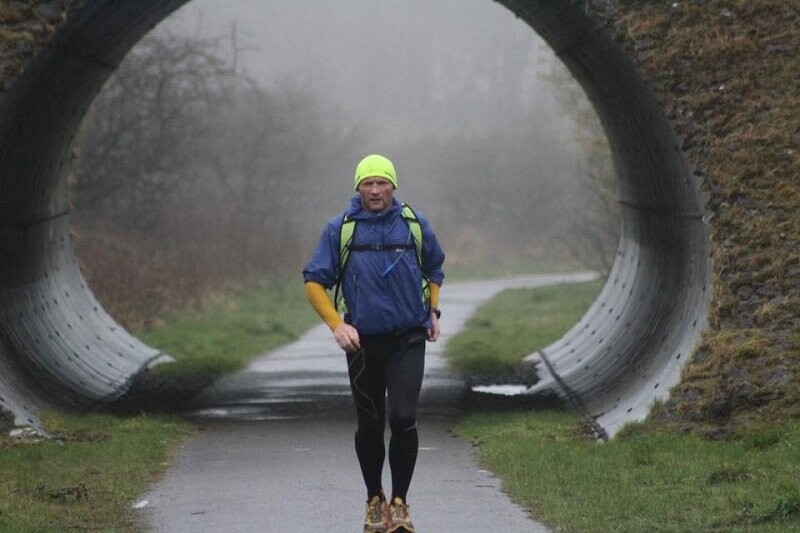
“People ask me ‘how are you going to do 365 marathons in 365 days?’ but I’ve done 110 and I know what it is about and I know how to do it.
“I know how to prepare myself, I know how to sort myself out the next day and I know how to do things in a certain way. I am in charge too so if I want to go slow at certain points I will go slow.
“It’s just four hours running and then you prepare yourself for the next day.”
Stella Walsh, fundraising and communications team leader for the hospice, said: “We are so excited to begin this journey again with Gary. Everyone here at Hospice at Home West Cumbria wants to wish him lots of luck and thank him once again for his incredible support.
The dedication and commitment he has shown to support both charities is astounding. The support he received from our local communities during the 110 challenge was amazing, and I’m sure this time it will be even bigger and better!”
Balancing work, running and family
Gary will start his first marathon from his home on New Year’s Day and will do so every day as well as working full-time, and being a busy family man with his three children.
Sue McDonald, Macmillan Cancer Support’s fundraising manager for Cumbria, said: “We’d like to thank Gary for his amazing commitment to raise funds for two causes close to his heart. His efforts last year were extraordinary enough, but this 365 Challenge is almost incomprehensible in the scale of its ambition.
“We know Gary is inspired by the three million people who are living with cancer in the UK. He says that if they can undergo the rigors of treatment and the many challenges that cancer brings, then he can put himself through this.
“Nearly all (98%) of Macmillan’s funding comes directly from donations, and it’s only through our fantastic fundraisers like Gary who help ensure Macmillan can continue to deliver the services that people living with cancer desperately need, now and in the future.”
Macmillan Cancer Support’s chief executive, Lynda Thomas, added: “Gary McKee has been a prolific fundraiser for Macmillan for almost 20 years; for which we can’t thank him enough.
“Gary is genuinely inspiring – and at some point in 2022 I hope to make it up to Cleator Moor and run part of this with him to show our support for him.”
Brendon Cook, chair of Hospice at Home West Cumbria, said: “As a small local charity, the support that Gary has given us and the people in our local community that have got behind him really does make a difference. The effort Gary makes to not only raising our income but also raising our profile, is immeasurable. Our Board of Trustees are delighted to have been able to personally sponsor his first running vest and we all look forward to showing our support throughout the year.
Gary is appealing for everyone to once again get behind him and help him reach his target.
by
Login to leave a comment
Eliud Kipchoge's redemption run has been pushed one week due to COVID-19 restrictions in Germany
With less than two weeks to go until the NN Mission Marathon in Hamburg, event organizers have postponed the race until April 18 due to local COVID-19 restrictions. Those same restrictions in Hamburg are forcing officials to find a new location for the race with less than a month of notice. The event is set to feature Eliud Kipchoge, who is looking to bounce back from his sub-par performance at the London Marathon last October, but he will now have to wait a little longer before getting back in action.
“Over the past months, we have learned that we need to be flexible and stay positive,” Kipchoge tweeted after the news of the Mission Marathon postponement broke. It’s true that members of the global running community got used to race cancellations throughout 2020, but by the end of the year and moving into 2021, it seemed like event organizers had figured out the right formula to hold a run during the pandemic (for elite-only races, at least).
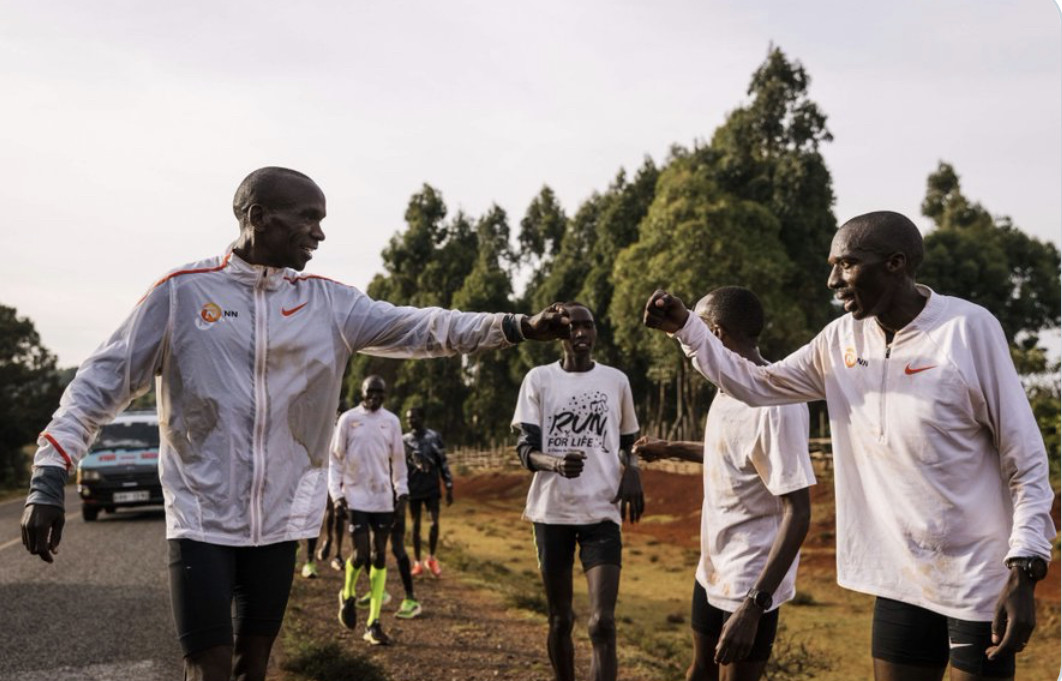
Unfortunately, COVID-19 proved once again that there is no way to guarantee an event’s safety during this pandemic. Granted, the Mission Marathon has only been postponed, but seeing as it has been rescheduled to run just one week after originally planned, it could be tough for organizers to find another city in the coming weeks.
In a press release announcing the postponement, Hamburg Marathon managing director Frank Thaleiser expressed his team’s regret. “Of course we were quite disappointed at first, but we can understand the decision given the current situation,” he said. “We are now putting all our efforts into the realization of the event at a different location and are optimistic that we will find a solution.”
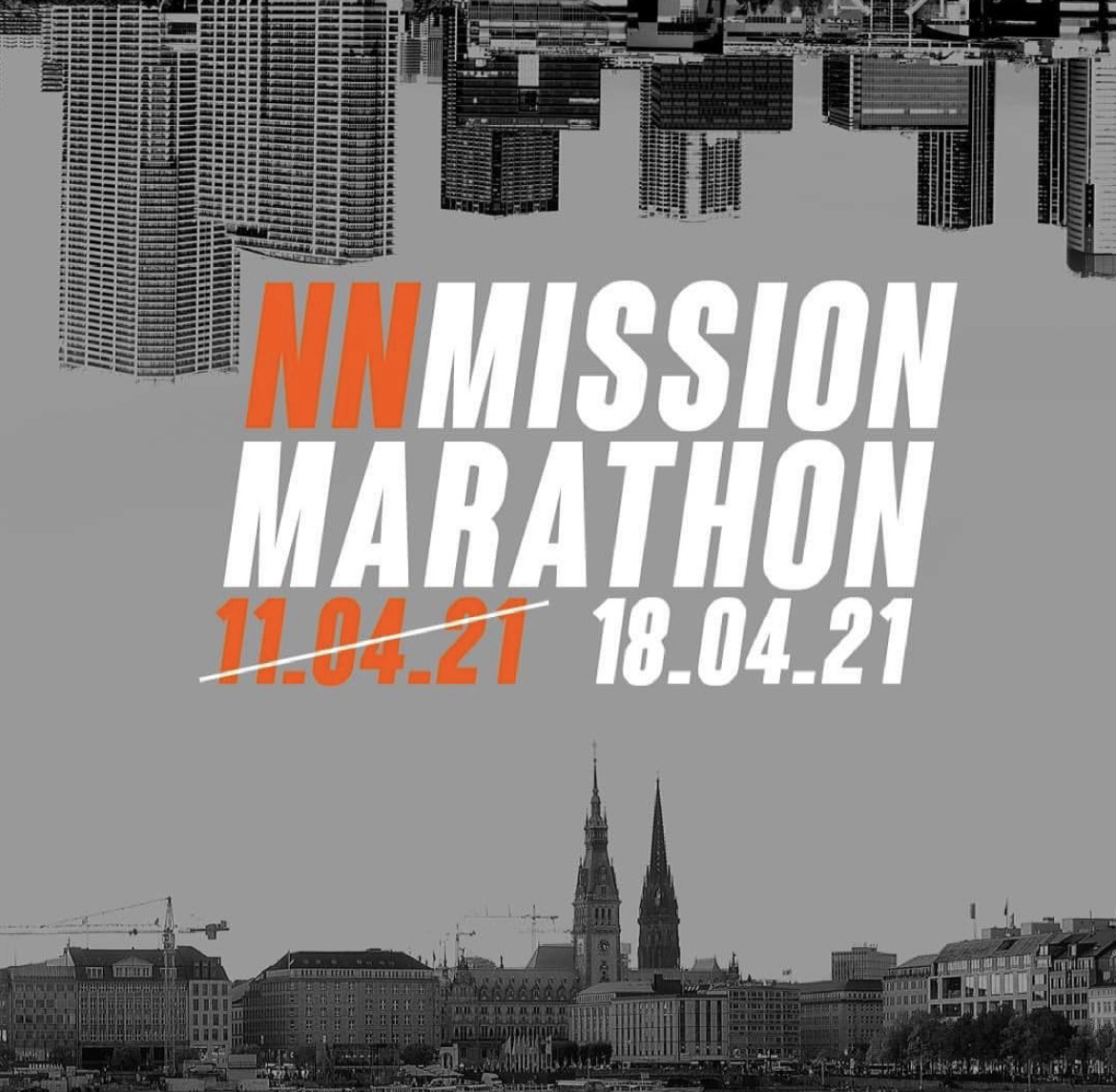
Thaleiser said he and the other organizers owe this race to the more than 70 athletes who were set to run in Hamburg. For Kipchoge, the race represented a chance to prove he’s still the man to beat going into the Tokyo Olympics, but for other runners, this was perhaps their last opportunity to qualify for the Summer Games. If the race cannot go ahead, many runners will have to scramble to find another competition before the summer.
by Running Magazine
Login to leave a comment
Kibiwott Kandie smashes half marathon world record, a Kenyan double in Valencia marathon
All top four finishers in the half marathon managed to beat the previous mark of 58:01 set by Geoffrey Kamworor last year. Evans Chebet and Peres Jepchirchir win the men and women's marathon in course records.
Kibiwott Kandie led Jacob Kiplimo home in world record time to win the Valencia Half Marathon on Sunday in a reverse of the World Championship resultfrom October.
Kandie, Kiplimo, Rhonex Kipruto, and Alexander Mutiso all finished the race in under 58 minutes, bettering the existing record of 58:01 set by Geoffrey Kamworor in Copenhagen in September 2019.
Kenya's Kandie finished in 57:32, taking more than a minute off his previous personal record of 58:37. Ugandan Kiplimo and Kandie's compatriot Mutiso also lowered their own personal bests by similar margins, while it was Kipruto's debut over the distance.
The new record is subject to World Athletics' usual ratification processes.
It is the fourth time Kandie has run sub-59 minutes this year, having also done so at the Ras Al Khaimah, Prague, and Gdynia half marathons.
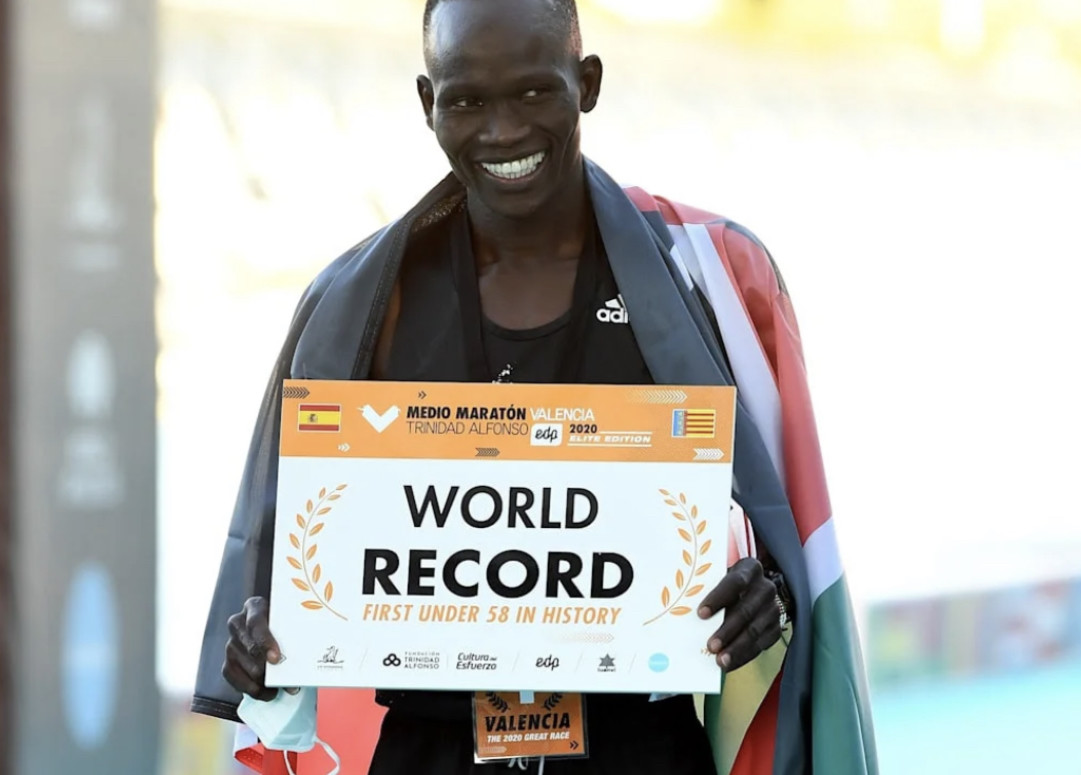
Genzebe Dibaba of Ethiopia won the women's race in a course record one hour, five minutes 18 seconds, missing the women's world record in a mixed race (1:04.31) currently held by Ababel Yeshaneh who set it in RAK earlier this year.
It was Dibaba's first race in 16 months, since last August, and her debut over the half marathon distance.
Kenyan double in the marathon
Kenya’s Evans Chebet sprinted past compatriot Lawrence Cherono in the home stretch to win the Valencia marathon in a course record of 2:03:00.

The men’s race was a close one with Chebet and Cherono going head to head in the final kilometre after dropping Ethiopia’s Birhanu Legese, the 2019 Tokyo marathon champion.
This was the first big marathon win for the 32-year-old Chebet that moves him to sixth in the men’s marathon all-time list.
Chebet’s victory also ensured that a Kenyan topped the podium again for the 18th time in the last 40 editions of the Valencia Marathon.
“I am happy because I have run my personal best here," said Chebet after the race.
"I know this course very well. I am happy because it’s my first major win and in a course record,” said the Kenyan who finished 28th at the Rio 2016 marathon, delighted and hopeful that his top finish could impress Athletics Kenya selectors for the Tokyo Olympics.
Evans Chebet of Kenya won the Men’s Marathon in Valencia with a course Record.
The reigning Boston and Chicago Marathon champion Cherono who had a slight stumble in the last bend clocked 2:03:04 for second, in his third big marathon in the last 18 months.
Legese finished third in 2:03:16, in the race that saw eight of the top 10 finishers record personal bests.
Cherono, 32, was named by Athletics Kenya in Kenya’s provisional Tokyo Olympics marathon team alongside the Olympic champion Eliud Kipchoge and World Championships marathon bronze medalist Amos Kipruto.
Double Olympian Ayad Lamdassem set a Spanish men's marathon record of 2:06:35 that qualifies him for the Games in Tokyo.
Just seven weeks after winning the World Half Marathon title in a world record, Peres Jepchirchir of Kenya won the women’s race in 2:17:16, also a course record.
“It’s unbelievable,“ said Jepchirchir, a double world half marathon gold medallist.
It was the perfect ending of the season for Jepchirchir who holds the world record for the women-only of 1:05:16 from her winning run in Poland on 17 October.
In Gdynia she improved her own 21km world mark from the previous month set in Prague, and is now the fifth fastest women marathoner.
Peres Jepchirchir of Kenya wins the Women’s Marathon in Valencia with a Course Record.
It was another 1-2 finish for Kenya as Joyciline Jepkosgei clocked 2:18:40 for second ahead of third placed Namibian record holder Helalia Johannes, the 2019 World Championships bronze medallist. Johannes crossed the line in 2:19:52.
by SK Goh and Evelyn Watta
Login to leave a comment
Valencia Half Marathon
The Trinidad Alfonso Valencia Half Marathon has become one of the top running events in the world. Valencia is one of the fastest half marathon in the world. The race, organized by SD Correcaminos Athletics Club, celebrated its silver anniversary in style with record participation, record crowd numbers, Silver label IAAF accreditation and an atmosphere that you will not find...
more...Creating the bubble, cutting-edge technology, flexible thinking – how the 2020 Virgin Money London Marathon is the the only major city marathon to take place since the Covid-19 pandemic struck
The 2020 Virgin Money London Marathon on Sunday 4 October was the first major marathon in the world to take place since the Covid-19 pandemic changed the sporting landscape. It was also the first truly global sporting event in the UK to take place in a non-stadium or venue setting since the country went into lockdown in March. How was it done?
An autumn London Marathon for the first time
The 2020 Virgin Money London Marathon was due to be held on Sunday 26 April – that now seems a lifetime ago. As the Covid-19 epidemic turned into a global pandemic, London Marathon Events announced on Friday 13 March that the event had been postponed to Sunday 4 October, the first time ever the London Marathon would be held in the autumn.
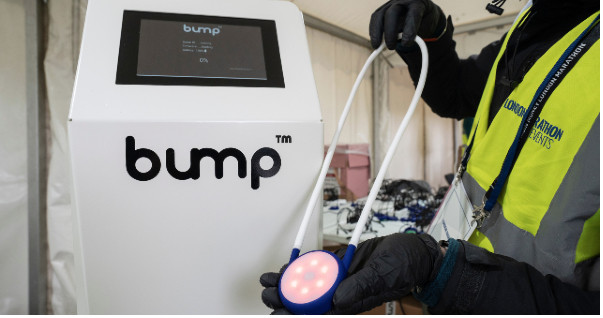
The postponement was announced at a time when hundreds of events across the UK were being cancelled. However, London Marathon Events, unlike virtually all other organisers, was able to announce a new date thanks to the strong relationships and huge support for the world’s greatest marathon and biggest one day annual fundraising event from a multitude of stakeholders and partners.
Speaking immediately after communicating the news to all runners who had signed up to run in the 2020 race, Hugh Brasher, Event Director of the Virgin Money London Marathon, said: “We are extremely grateful for all the support we have received from City Hall, the London boroughs of Greenwich, Lewisham, Southwark, Tower Hamlets, the City of Westminster and the City of London, Transport for London, the emergency services, The Royal Parks, BBC TV and many others as we worked to find an alternative date.”
Only certainty is uncertainty
When the 4 October date was announced on Friday 13 March, the hope and expectation of Brasher and his team was the event would run in its usual format in 2020, just six months later. But the true scale of the pandemic was only just beginning to emerge. Just 10 days after the postponement announcement, the UK went into a full lockdown. As the country remained in lockdown throughout spring and into early summer, the London Marathon Events team were looking at all options to deliver one of Britain’s flagship sporting events while others fell by the wayside, seemingly on an almost weekly basis.
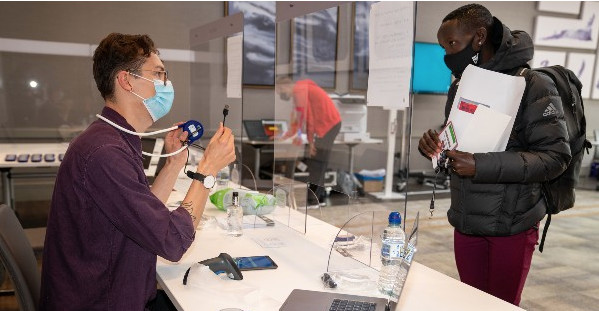
Brasher spoke to reporters ahead of what would have been the date of the 2020 Virgin Money London Marathon on Sunday 26 April and said: “The flame is still burning. And is there hope? Absolutely. But you have to do what’s right for society. You usually have 750,000 people out in central London watching 45,000 runners. Then there’s the medics, the 6,000 volunteers and the transport system. There’s so much to take into account when making any decision.”
London Marathon Events committed to making a final decision on the 2020 event by August and staff continued to work on a range of scenarios as the landscape changed on an almost weekly basis. Scenarios ranged from holding a socially-distanced mass event to an elite-only race. As Brasher said continuously to his team, ‘the only certainty is uncertainty and we have to remain agile’.
Elite race confirmed
A final decision had to be made.
The overall picture in the UK during July and going into August, though improving, did not indicate that an event involving 40,000 people running through the streets of London in October would be possible. Sport had returned but was taking place behind closed doors. Restrictions were lifting gradually but local lockdowns were being implemented and there was a growing sense that once autumn and winter arrived, cases would again be on the rise.
London Marathon Events had been working on plans to deliver a socially distanced mass participation event – either a run or a walk – and were looking to use new technology which would monitor the distance participants were from one another throughout their run (this planning did not go to waste as it would be used for the elite event, more of which later).
Ultimately, however, the challenge of managing spectators, ensuring the emergency services had access across London, the increased likelihood of a second spike and the ongoing concern about the pressure on the NHS, ensured a final decision was made that there could be no mass-participation event on the streets of London.
Instead, the 2020 Virgin Money London Marathon would have an entirely new format for 2021: elite races only on a closed-loop circuit in central London and a virtual race for 45,000 people who were encouraged to run the 2020 Virgin Money London Marathon – Your Way, the first virtual event in the 40 year history of the London Marathon.
Build it and they will come
When athletes’ agents were first contacted to ask if their runners would be interested in coming to London, the response was unequivocal: if London Marathon Events could build it then the world’s best would come – it was now down to Brasher’s team to hold up their end of the bargain.
How do you put on an elite race for more than 100 of the best marathon athletes on the planet in a safe, secure environment? That would be a challenge given 12 months of planning but for London Marathon Events, the total preparation time amounted to about eight weeks.
The first priority was confirming a course. All other sports that had returned to action during the course of the summer of 2020 had done so in either a stadium (think football and cricket) or in a secure venue such as Silverstone in the case of F1. There had been no organisation that had tried to close down public roads to create an event.
The team’s solution was to create a venue that could be contained and prevent general public access. The organisation has a long-standing and strong relationship with The Royal Parks, the Mayor of London’s Office and Westminster City Council and their support meant the first choice of course could go ahead: the event to be held on a closed-loop circuit around St James’s Park in central London which would ensure the iconic finish on The Mall would remain in the same place as it has done for the past 27 years.
A constant dialogue with the Department for Digital, Culture, Media and Sport (DCMS) ensured that the Government gave its blessing to the plans and granted the necessary permissions for athlete travel. With the green light given, a 19.7 lap closed-loop circuit was created which followed the perimeter of St James’s Park, starting and finishing on The Mall. Screened barriers were to be erected on either side of the course to deter people from coming to watch on the day and, in effect, a venue had been created in the heart of London.
The London Marathon Events team was also able to build on invaluable experience from 12 months earlier as an integral part of the delivery team that put on the INEOS 1.59 Challenge, Eliud Kipchoge’s historic sub two hour marathon which took place on a closed loop circuit in Vienna. For that event, the team had carried out detailed research on putting a marathon on a looped course and, furthermore, when searching for a course for the INEOS 1.59 Challenge, had explored the the possibility of staging the challenge on the St James’s Park loop.
Creating a biosecure bubble
Securing a course and a world-class line up in four races (elite men, elite women and men’s and women’s wheelchair) was the relatively easy part – or at least areas of great expertise for the London Marathon Events team. However the team had no previous experience in putting on an event in a Covid-19 world but they learnt fast.
To make the race completely safe and secure for athletes and all staff, the team created a biosecure bubble around the event. Information on the best way to do this was garnered from other sports which had returned to action, as well as from medical and security experts and Government advisors from DCMS.
The biosecure bubble would be created from the moment the elite athletes arrived in the country to the moment they left the UK after the race. In total it amounted to a nine-day window from Sunday 28 September to Monday 5 October.
The first challenge was finding a location where elite marathon athletes could stay for the week leading up to the race. A checklist was drawn up for what was needed: exclusive use of a hotel, within an hour’s travelling distance from the course, grounds large enough for athletes to train in, big enough to create socially distanced eating and relaxation areas, the ability to hold remote press conferences…the list was exhaustive.
Eventually a hotel was found about 60 minutes outside central London. Its identity was kept secret to prevent anyone from turning up to see athletes. Hotel staff were booked in for the full eight days to ensure they were in the bubble and security was booked to man the site 24/7.
Race sponsor Abbott, a life-changing tech company and global diagnostics leader, provided the critically important Covid-19 testing for the elite athletes, staff and everyone else working in the biosecure bubble.
All elite athletes, their coaches and support staff had to undertake a Covid-19 test in their country of origin before flying into London, Anyone who failed a test could not travel. In addition, every single person that went into the hotel from the UK had to return a negative Covid-19 test four days prior to arrival. Everyone was tested again the day they arrived at the hotel and again on Friday 2 October. Absolutely nothing was left to chance.
Of all the athletes and support staff invited to London, only two people, both from Ethiopia, had positive Covid-19 tests prior to travel. Degitu Azimeraw, the 2019 Amsterdam Marathon champion, and Haji Adillio, the coach to the eventual men’s champion Shura Kitata, were the unfortunate pair prevented from travelling. Adillio had been away from home and only in contact by telephone with his athletes for the 10 days prior to the travel window, meaning his athletes could still travel.
Another headache for the London Marathon team was getting the athletes from their countries to London in a safe environment. The majority of the international athletes were coming from East Africa, either Kenya or Ethiopia, so to mitigate against the risk of small groups travelling on different scheduled flights to the UK, a charter flight was booked for all of the East Africans. The plane, containing world record holders Eliud Kipchoge and Brigid Kosgei, made stops in Eldoret, Kenya, and Addis Ababa, Ethiopia, before heading to London.
Elsewhere around the world, athletes were boarding planes in the likes of Chicago, Melbourne and Amsterdam on their way to London.
On arrival at the hotel, every athlete and support staff member was tested again by the Abbott team and all tested negative. Everyone resident in the bubble was then tested again on Friday 2 October, two days before race day, for a final time. Given all the hard work and effort that had been put in by the organisers to this point, awaiting the final test results was undoubtedly the nerviest time in the entire event.
Extra reinforcement with cutting-edge Bump technology
Though the Friday testing was an anxious time for all, London Marathon staff were reassured by the knowledge that they had done everything in their power to ensure all those in the hotel were Covid free, including introducing new technology to implement social distancing.
The Bump devices, created by Tharsus, were worn by all elite athletes and 500 members of the Virgin Money London Marathon’s operational team both in the athlete hotel and at the venue to help maintain the biosecure bubble for the event.
The Bump devices were attached to a lanyard and worn around the neck like a medal. Bump helped inform effective social-distancing behaviour by using sophisticated Radio Frequency technology to create a 'Personal Motion System' that immediately alerts wearers when they are getting too close to another person. Going within two metres of someone prompted a blue flashing light and within 1.2 metres a red flashing light and loud beeping noise.
Data was downloaded daily which allowed organisers to accurately monitor how often and how long elite athletes and event staff spent in close proximity to each other. If anyone in the bubble tested positive for Covid-19 either during the event or during the two weeks following the event, organisers would be able to trace interactions back to specific wearers and inform them accordingly.
These Bump devices were part of the new normal in the elite athlete hotel as the best marathoners in the world got used to the flashing warning lights and sounds should they get too close to another person.
Away from the hotel, the Bumps were worn by all staff working on the build of the event site in the run-up to and on race day itself as the team prepared to build a venue on the Queen’s front garden befitting The 40th Race in London Marathon history.
Race Day
A quick glance at the BBC television pictures on race day morning and you would have been forgiven for thinking that though it might have been six months later, it looked like the same old London Marathon – with the familiar iconic finish on The Mall. But the reality was very different. Just like the work that went into delivering the hotel bubble, every last intricate detail of Race Day was planned to ensure the bubble, which would travel from hotel to the venue, would remain secure.
From the individual areas (including personal toilets!) provided for each athlete to the socially-distanced media interviews post-race, nothing was overlooked.
The halt to trials of bringing fans back to sport in September extinguished any hope that some spectators would be allowed into the venue which meant staff were brought in to patrol the interior and exterior perimeters of the route – though the awful weather on the day did mean most people were content to watch it in the warmth of their homes.
A very limited number of media was allowed into the venue with London Marathon Events creating their own content service which pushed out interviews and B-roll footage throughout the day. This followed the virtual press conferences held during race week and the daily updates of life inside the bubble in video and photographic form which were produced every day from the athletes’ hotel and made available for free to all media.
The only lack of social distancing that took place for the whole week was when the racing started but women’s world record holder Brigid Kosgei is used to running solo and she proved again that she is streets ahead of the opposition to win the first race of the day, in heavy rain and wind. However Kosgei was the only favourite to come out on top in a year where the unexpected really should have been expected.
Men’s world record holder, sub-two hour marathon man and four-time champion Eliud Kipchoge (Kenya) dramatically surrendered his title with Ethiopia’s Shura Kitata triumphing while both Brent Lakatos (Canada) and Nikita den Boer (Netherlands) overturned the form books to win the wheelchair races.
For all the winners, their moments of triumph will be memories they will never forget. But even in the instant triumph of winning the greatest marathon in the world, they were reminded this is 2020 and nothing is as it was. Bumps were returned, celebratory pictures and media interviews were held with social distancing prioritised and the never-to-be-forgotten moment of standing on top of the podium in front of Buckingham Palace, posing for pictures was done while wearing a face mask – an image that will forever capture the London Marathon in 2020.
While Kipchoge – the greatest marathon runner in history - was not on the podium himself this time, he summed up the feelings of all the athletes that had taken part when he said: “I want to thank the organisation of the London Marathon for going the extra mile to make the event possible. It shows what’s possible and gives hope other organisations can incorporate their plans to make sports possible in current times.”
Long after Kipchoge and the other elites had left The Mall, darkness had descended and London Marathon staff were in a race against time to deconstruct the venue they had built for this historic occasion.
In the murky October gloom, hundreds of staff worked in the rain and wind to take down in a matter of hours what had been months in the planning. Amid the usual flurry of work seen while de-rigging a site, there was one recurring and very 2020 sight and sound: the flashing lights and warning beeps of the Bump technology that ensured everyone, to the very end, did all they could to protect one another in a year and an event like no other.
That was The 40th Race.
Login to leave a comment
TCS London Marathon
The London Marathon was first run on March 29, 1981 and has been held in the spring of every year since 2010. It is sponsored by Virgin Money and was founded by the former Olympic champion and journalist Chris Brasher and Welsh athlete John Disley. It is organized by Hugh Brasher (son of Chris) as Race Director and Nick Bitel...
more...The Grandma’s Marathon Kicks Off Virtual Races
Grandma’s Marathon weekend may be canceled this year, but runners are still hitting the pavement to clock in their times.
Beginning Monday, registered runners could run their races, including the William A. Irvin 5K, the Garry Bjorklund half marathon or the full marathon.

Each participant can print out their own race bib and then submit their times online. While those times won’t be race official, all runners will receive a medal later this summer.
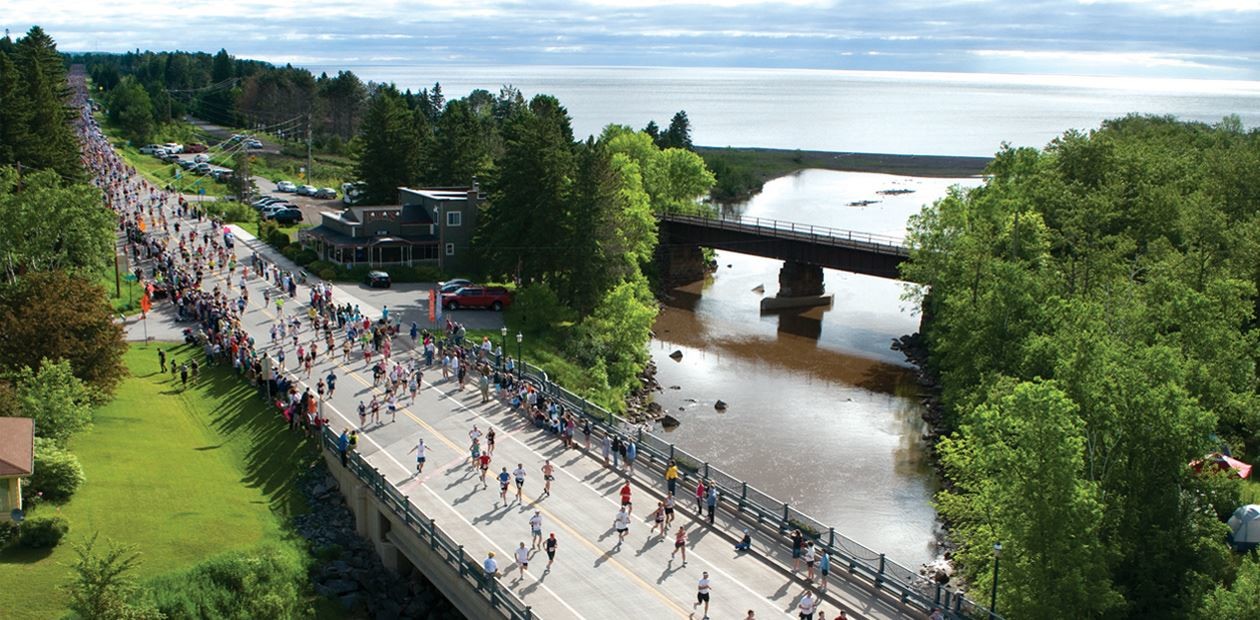
“They were excited that they could finish their time right away and log it before it gets too warm where they run. So it’s nice there’s a big window so runners can either follow the same training program that they were planning to run and complete their races in June,” marketing and public relations director of Grandma’s Marathon Mandi Peterson said.
More than 200 people have already finished their races. Registered runners have until July 31 to submit their times.
by Claudia Chakamian
Login to leave a comment
Grandmas Marathon
Grandma's Marathon began in 1977 when a group of local runners planned a scenic road race from Two Harbors to Duluth, Minnesota. There were just 150 participants that year, but organizers knew they had discovered something special. The marathon received its name from the Duluth-based group of famous Grandma's restaurants, its first major sponsor. The level of sponsorship with the...
more...Eliud Kipchoge says that we will win fight against coronavirus
Eliud Kipchoge, the world's greatest marathon man, reckoned his first reaction was shock when he heard at home in Kenya that the 2020 Olympic Games had been postponed because of the coronavirus outbreak.
That shock soon gave way to disappointment - but then defiance.
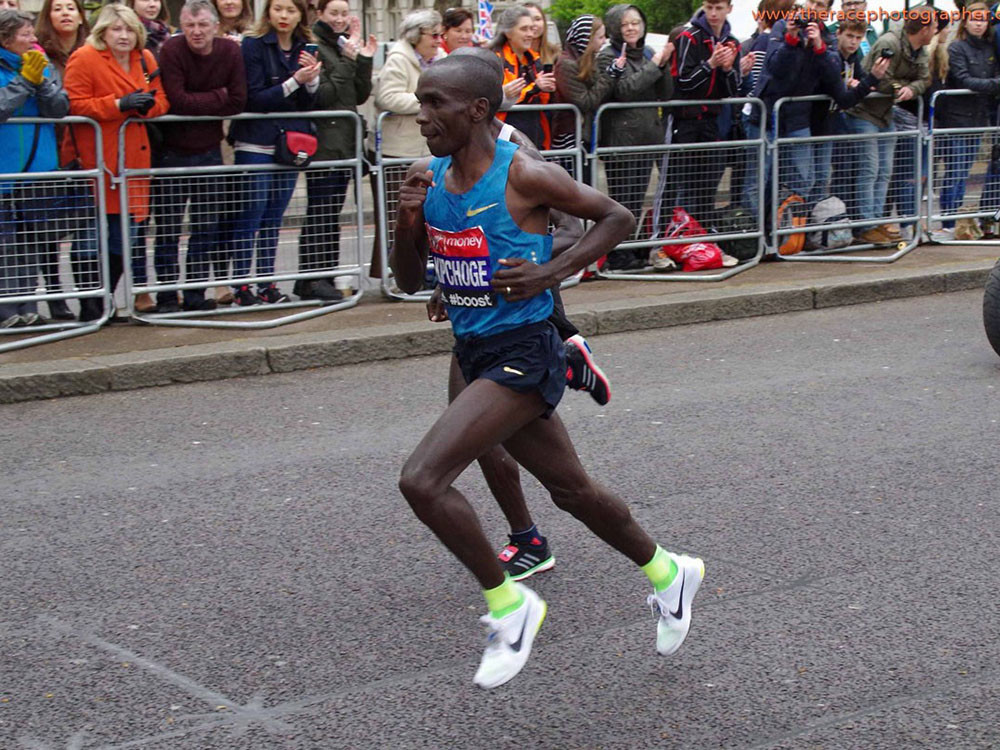
"We will win this fight against the COVID-19," the barrier-breaking Kenyan, who's widely considered the world's finest runner, said in an interview with Reuters.

And the man who last year became the first to run a marathon in under two hours confirmed he can see himself refreshed and ready to defend his marathon title in a rearranged Tokyo Olympics next year.
For the moment, though, the 35-year-old insists his only concern is to care for his family at their home in Eldoret.
"I am totally concentrating on my safety, I am totally concentrating on the safety of the whole family," he said.
"We will win this fight against the COVID-19," the barrier-breaking Kenyan, who's widely considered the world's finest runner, said in an interview with Reuters.
And the man who last year became the first to run a marathon in under two hours confirmed he can see himself refreshed and ready to defend his marathon title in a rearranged Tokyo Olympics next year.
For the moment, though, the 35-year-old insists his only concern is to care for his family at their home in Eldoret.
"I am totally concentrating on my safety, I am totally concentrating on the safety of the whole family," he said.
"I was a little shocked and I had to go back, just to think more. I think and then I said, 'it's not a bad idea to actually postpone'.
"You know the Olympic Games is whereby everybody wants to participate ... it's in the dreams of every sportsman in this world.."
Kipchoge thinks a delayed Olympics could actually benefit his title defence.
"It's a great time for us to go back, train again and we will come back with a lot of energy," he said.
The pandemic has led to the postponement or cancellation of sporting events around the world, including the London Marathon, which next month was scheduled to be Kipchoge's first outing since October's landmark one hour, 59 minutes, 40 seconds run in Vienna.
Even though the run in Austria did not count as a world record because of the special conditions, the feat captured the world's imagination and brought Kipchoge a whole new level of fame.
Kenya has confirmed 42 coronavirus cases, including one fatality, with the country having imposed restrictive measures to arrest the spread of the disease. It even affects their brilliant runners.
But working together within a couple of months to come, this COVID-19 will go away.
"My priority number one is to get the virus away, come back with one mind, one thinking, one line of actually standing and competing."
Login to leave a comment
Tokyo 2020 Olympic Games
Fifty-six years after having organized the Olympic Games, the Japanese capital will be hosting a Summer edition for the second time, originally scheduled from July 24 to August 9, 2020, the games were postponed due to coronavirus outbreak, the postponed Tokyo Olympics will be held from July 23 to August 8 in 2021, according to the International Olympic Committee decision. ...
more...Kevin Seaward clocked a lifetime best and became the second-fasted Irish marathon runner of all time in the process at the Seville Marathon on Sunday
Belfast man Kevin Seaward, a school teacher, ran the second-fastest Irish marathon time ever as he finished 26th at the Seville Marathon on Sunday morning.
Belfast’s Seaward ran a PB of 2:10:10 – second only to John Treacy’s national record of 2:09:15.
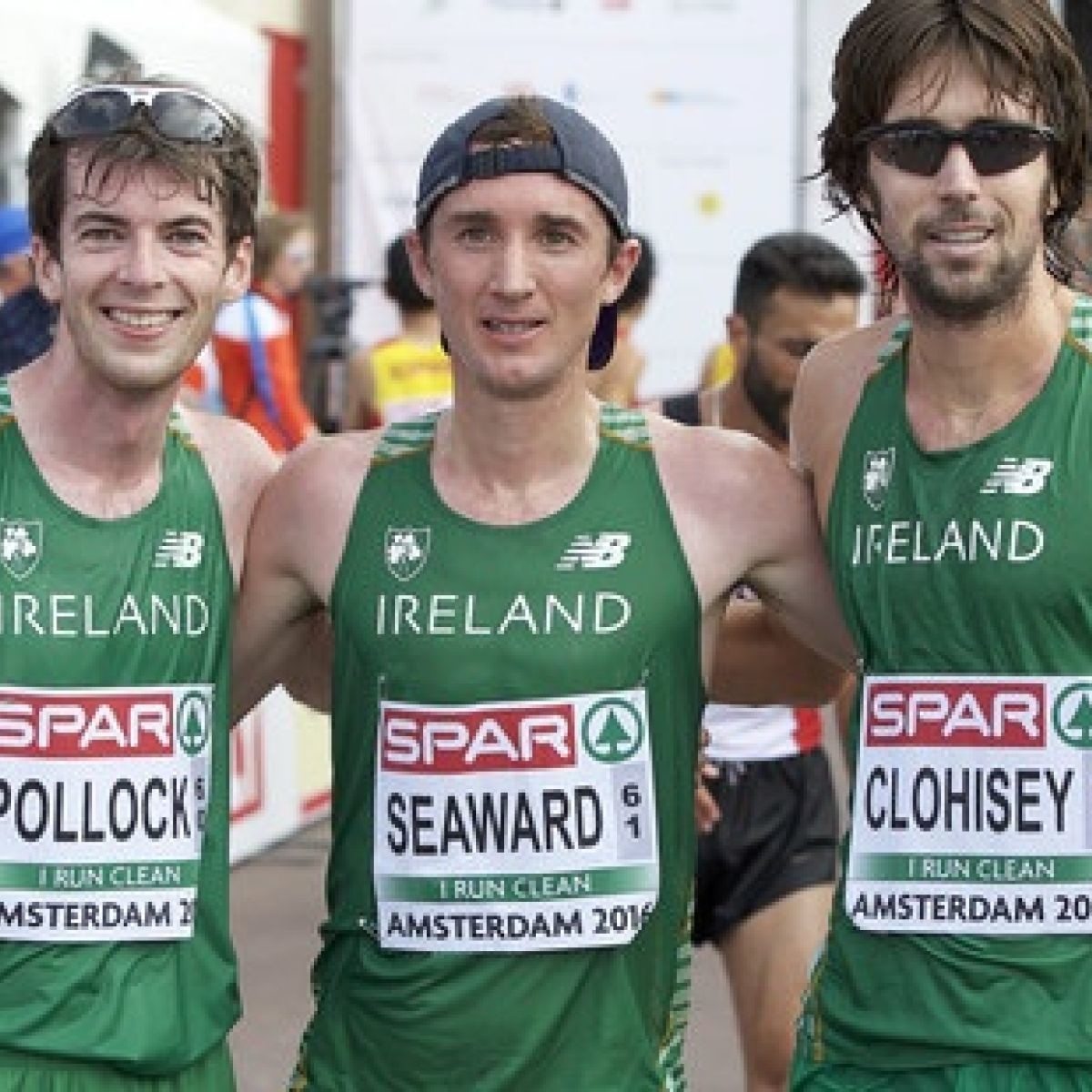
Seaward’s time was more than three minutes quicker than his previous best of 2:13:39, which he ran in Berlin last September.
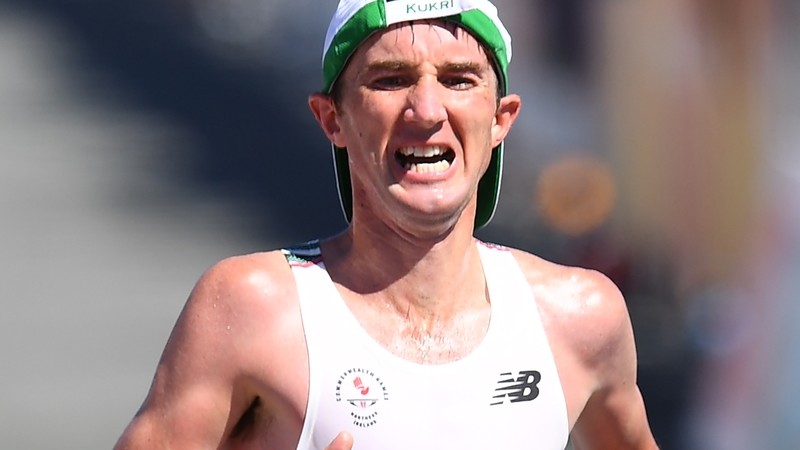
Only John Treacy, in 1988, has ran a faster Marathon time for Ireland than Seaward while the 36-year-old now becomes the fastest Northern Ireland marathon man of all time.
It is also comfortably inside the IAAF time of 2:11:30 for Tokyo 2020 qualification as he becomes the third Irish marathon runner to achieve the Olympic criteria.
The 34-year-old joins Paul Pollock, who ran a 2:10:25 in Valencia in December, and Stephen Scullion who is eligible by virtue of his fifth-place finish at the “gold label” Houston Marathon where he ran a time of 2:11:52.
Ballina’s Hugh Armstrong missed out on the Olympic time by less than a minute this morning, finishing 35th in a personal best of 2:12:26.
Seaward joins Paul Pollock and Stephen Scullion as Tokyo 2020 qualifiers.
by Niall Kelly
Login to leave a comment
Zurich Marathon Sevilla
This urban, flat, fast and beautiful brand new race course will drive athletes through the most beautiful monuments of the city. Zurich Maraton de Sevilla brings the unique opportunity to brake the Best personal result over the mythical distance to all the athletes, professional or age groupers, in one of the most perfect international marathon circuits. This fast marathon takes...
more...Kenyan Marathon world-record holder Eliud Kipchoge is among the five finalists named for the male athlete of the year
Eliud Kipchoge leads the nominees list, Kenya's marathon man, Eliud Kipchoge has made the list, as the 34-year old looks to bag his second IAAF Male World Athlete award in succession. In October 2019, Kipchoge became the first person on the planet to complete a full marathon in under two hours.
The Kenyan world record holder, who has also been labelled as the greatest marathoner in the history of the sport, completed the 'INEOS 1:59 Challenge' in October. In successfully completing the 9.6km circuit, the 34-year old became the first marathoner to break the two-hour barrier, thus writing his name in the history books.
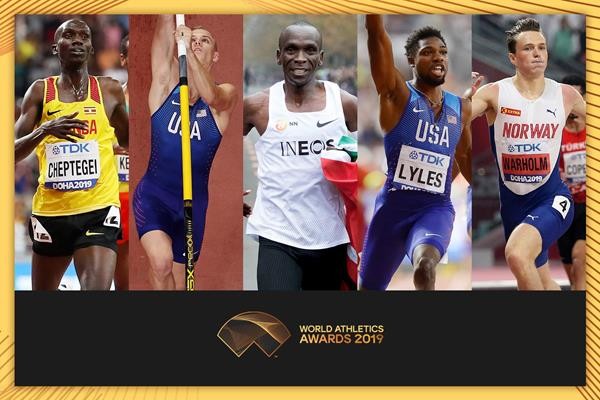
Eliud Kipchoge´s contenders.- Uganda’s Joshua Chepetegei, the 10,000m world champion was also one of the five finalists apart from Eliud Kipchoge.
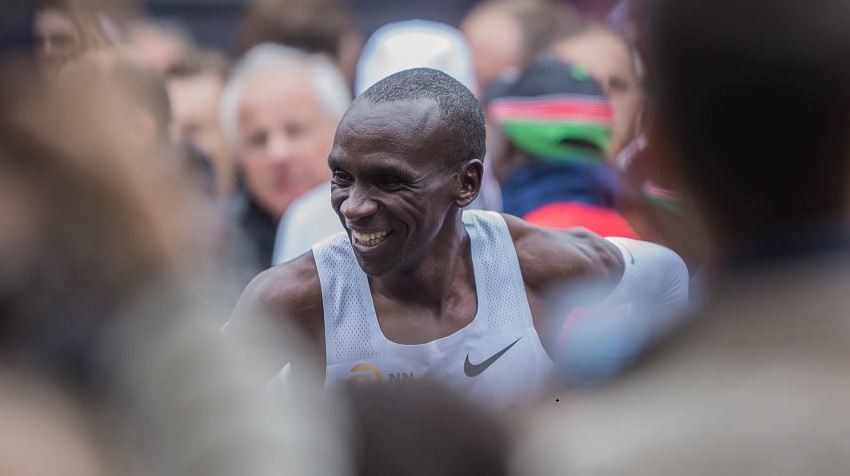
Chepetegei won the World 10,000m title in a world-leading time of 26:48.36 and also won the Diamond League 5000m title. Americans Sam Kendricks and Noah Lyles are also up for winning the award. Sam Kendricks won the World Pole Vault title, clearing a world-leading 6.06m to win the US title.
He also won 12 of his 17 outdoor competitions, including the Diamond League final. Noah Lyles, meanwhile, has the world 200m and 4x100m titles to boast of, aside from running a world-leading 19.50 in Lausanne to move to fourth on the world all-time list. Lyles also won the Diamond League titles at 100m and 200m.
Norwegian hurdler Karsten Warholm completes the list of the nominees for the Male World Athlete 2019 award. Warholm is undefeated indoors and outdoors at all distances, including the Diamond League final and the European Indoor Championships. He also clocked a clocked world-leading 46.92, the second-fastest time in history.
by Colin DCunha
Login to leave a comment
BMW Berlin Marathon
The story of the BERLIN-MARATHON is a story of the development of road running. When the first BERLIN-MARATHON was started on 13th October 1974 on a minor road next to the stadium of the organisers‘ club SC Charlottenburg Berlin 286 athletes had entered. The first winners were runners from Berlin: Günter Hallas (2:44:53), who still runs the BERLIN-MARATHON today, and...
more...Kenya's Gilbert Yegon and Betty Chepleting will seek the victory at Eindhoven marathon
Kenya's Gilbert Yegon and Betty Chepleting hope to break through and win a big city marathon when they line up at the Eindhoven marathon on Sunday in the Netherlands.
Yegon leads a quartet of Kenyan stars keen to crash the course record and boost their selection prospects to the national team ahead of next year's Olympic Games in Tokyo, Japan.
Yegon, a bronze medalist from the Stockholm marathon, is seeking his first win in 2019. Last year, Yegon won the Dusseldorf marathon and was fifth at the Singapore marathon.
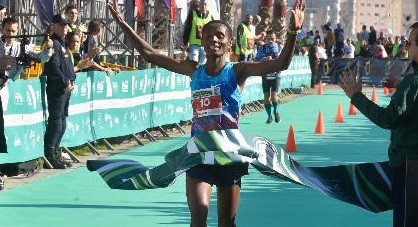
"I hope to run a fast race and boost my personal best time. But the important thing is to win against a strong challenge from Ethiopian and Turk runners. However, my training has gone on well and will be looking forward to a good performance," Yegon said in Nairobi on Friday.
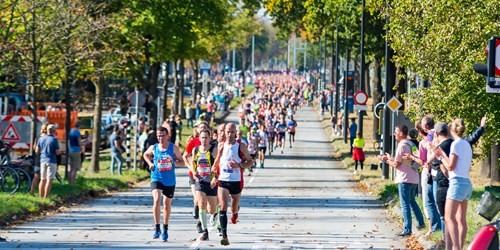
Leading the women's charge will be Chepleting, who hopes to bounce back from a poor showing in China's Dongfeng Wuhan marathon, where she was seventh in two hours, 34 minutes and 26 seconds.
"This will be my third race in 2019. I was seventh in Wuhan and failed to finish in Nagoya. I also won in Tunis in 2018 and hopefully, I will be able to overcome my challenges and fears to stage a good show in Eindhoven and win," said Chepleting.
Race Director Marc Corstjens believes they have top elite runners who can break the two hours and six minutes mark.
"Since 2014, winners of the Eindhoven marathon managed to complete the course within an average time of 2:06:26. But only if all conditions like the weather, are excellent. However, their finishing times ensure Eindhoven's marathon is among the ten fastest marathons in the world," Corstjens said.
On paper, the four Kenyans have the fastest time. Yegon has a fast time of 2:06:18 with Laban Mutai (2:07:38) and Reuben Keiro (2:08:12) in the men's race and Chepleting (2:31:18) in the women's race.
Login to leave a comment
Marathon Eindhoven
The Eindhoven Marathon is an annual marathon held in the city of Eindhoven every second Sunday of October. It has been an annual race since 1990. There is also a half marathon, 10K and 5k. The 2018 race was the 35th annual event. Dickson Kiptolo Chumba and Georgina Rono are the men's and women's course record holders with times of...
more...Just how tough is the Boston Marathon? from Marathon Man Gary Allen File 6
Just how tough is the Boston Marathon and how many times are runners told to resist the urge to start too fast....a very common mistake at the Boston Marathon.
OK don’t take my word for it, statistics don’t lie, Dave McGillivray the race director shared the following, “Of the 26,658 finishers, onl 705 ran the 2nd half faster than the first half for a measly 2.64%.”
This of course means 97.36% of the entire field were slowed by the tough terrain of the second 13.1 miles. I personally believe it was less about the Newton hills and more about imprudent pacing.
You see, Boston’s early downhills are almost impossible to resist. Speaking from experience, I have run the Boston Marathon 24 times and I think I might have run negative splits just twice. Yes, I started too fast.
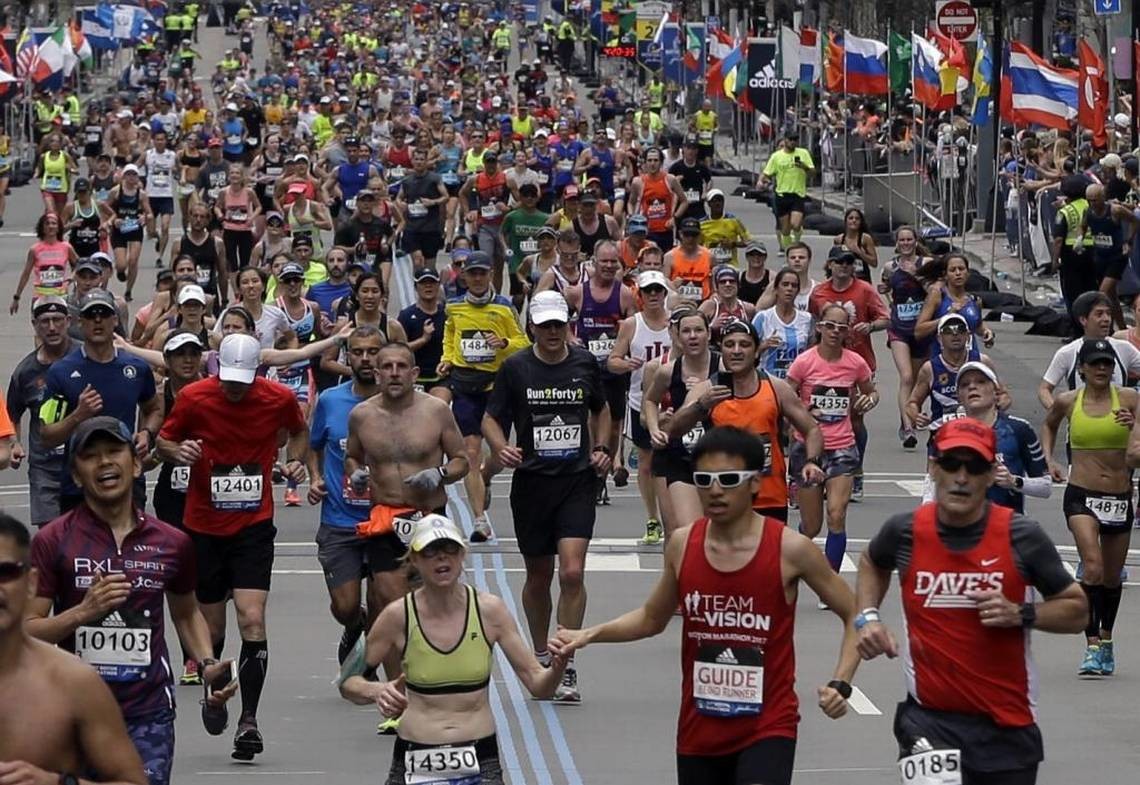
Is this a common phenomenon at the Boston Marathon? Check out these statistics from an experienced marathoner and a good friend Stephen Peckiconis, “it doesn't vary much.” His split stats show just 749 / 2.81% ran negative splits in 2016 and only 812 / 3.07% in 2017.
So if you want to have success at Boston, run conservatively early or you’ll join the vast majority who slow or struggle in the second half every single year.
Marathon Man Gary Allen is a regular writer for My Best Runs
by Gary Allen
Login to leave a comment
Boston Marathon
Among the nation’s oldest athletic clubs, the B.A.A. was established in 1887, and, in 1896, more than half of the U.S. Olympic Team at the first modern games was composed of B.A.A. club members. The Olympic Games provided the inspiration for the first Boston Marathon, which culminated the B.A.A. Games on April 19, 1897. John J. McDermott emerged from a...
more...Don't spend any energy worrying about the weather for this year's Boston Marathon says Marathon Man Gary Allen File 5
You can’t control the weather. Don’t spend any energy worrying about it. Instead prepare for anything and everything for this year's Boston Marathon.
1. Wear lots of throw away clothes to the start. Layers rule. Make sure your outer layer is a green trash bag to keep you dry. Hours of waiting to start being cold and miserable is not good.
2. Carry your race shoes and wear some old beaters to tromp around in the mud at athletes village. Change into your dry kicks in the corrals and toss your old shoes.

3. Bring some Mylar blankets to wrap up in and sit on in the corrals.
4. Don’t over dress for the actual race. If it’s raining you will be weighted down by sopping wet not needed gear. Remember the faster you run the more heat you generate and you can’t run fast if you have 15 lbs of soaked gear on.
5. Hat and gloves are key. Race singlet will work just fine, maybe arm sleeves. If below 40 I sometimes would wear two singlets.
6. If windy use the people around you to draft. In the infamous nor’easter in 2007 we had gusts of 30 mph right in our faces all damn day. I tucked in whenever I could conserving energy and would pop out when the gusts subsided. I ran 2:55:17 good for 9th OA AG.
7. Start with a 12 oz Poland spring water bottle in your hand and skip the congested mile 2 and 4 water stops. I found in big urban marathons I’d drink 6oz at mile 2 and then finish it at mile 4 but most importantly I skipped the crowded chaos of those first 2 stops.
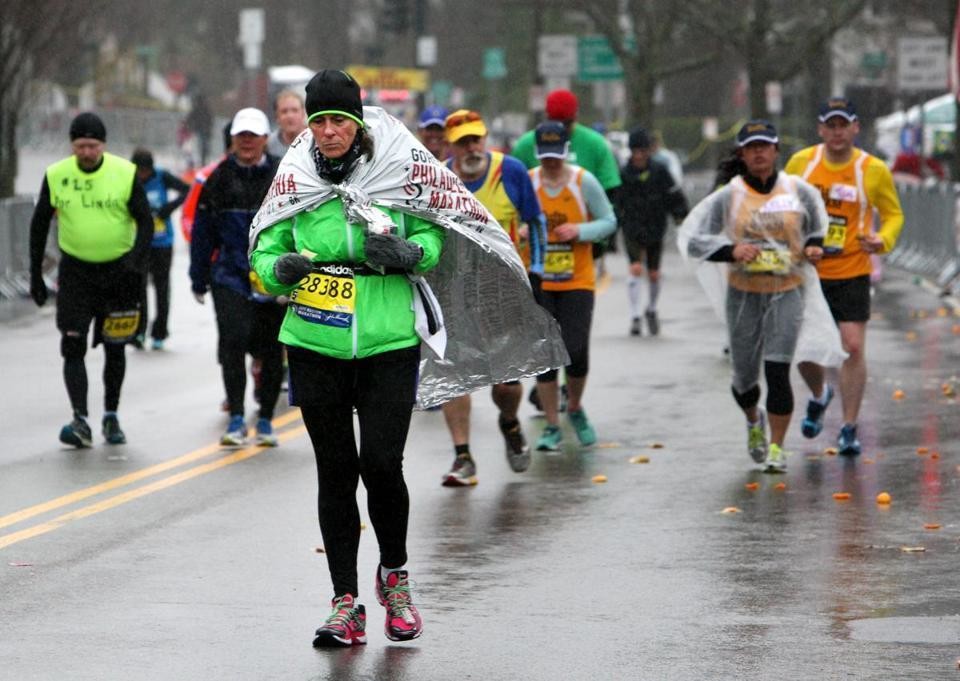
8. Don’t follow the crowds. If village is insane you don’t need to go there. The hopkinton green right at the start is a fantastic place to wait. Plenty of Porto’s and you can head straight to your corrals when called. Lots of big trees to help shield you from weather.
9. Have fun and even if Mother Nature kicks you in the face Smile and yell, “yo bitch, BRING IT....IS THAT ALL YOU GOT!”
From Marathon Man Gary Allen who has run many Boston Marathons over many years.
by Gary Allen
Login to leave a comment
Geoffrey Kamworor says he isn't quitting track anytime soon despite his success on the road
Two-time world cross country champion Geoffrey Kamworor has revealed he is not going to quit track anytime soon despite his success on the roads.
Speaking at the Kigari Teachers Training College, where Team Kenya to the World Cross Country Championships in Aarhus, Denmark is in residential training, Kamworor said he is still keen to be part of Team Kenya to August’s World Championships in Doha, Qatar.

However, the three-time World Half Marathon Champion could not reveal his distance of choice, between 5,000m and 10,000m, ahead of the global championships.
“I have not decided which race to run, but yes, it’s a priority once we are done with the World Cross Country,” said the 2:06 marathon man.
He remains determined to score a hat-trick of titles in Aarhus with his fifth-place finish at the national trials not a concern for him. He won the World Cross title in Guiyang, China in 2015, defended it in Kampala two years ago and he still keeps his push of emulating cross greats like Paul Tergat and John Ngugi, who won it five times each.
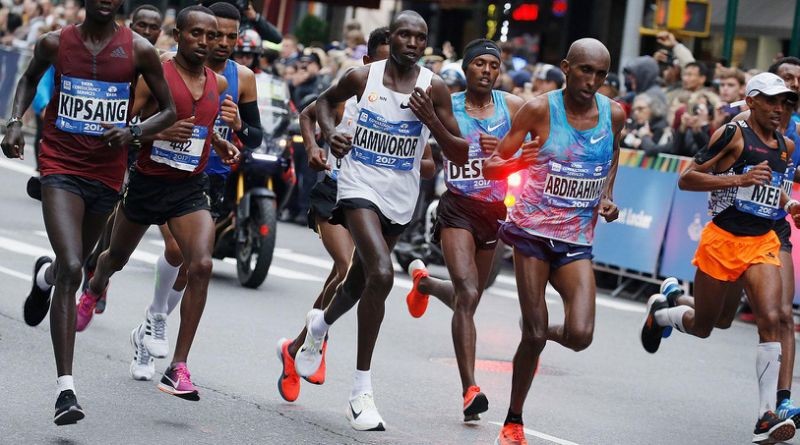
“I’m not worried about what happened at the national trials. Of importance is that I was selected in the team and I am confident I will retain my title,” he added.
Kamworor, who is captaining the side, expressed optimism that the team selected was the best he has been part of. “This is my fourth time at the world cross and if you look around, we have a good team, the best we have had so far. Remember, I have been with the team since my junior days,” he said. Kamworor said he is relishing the challenge of facing perennial rivals Ethiopia, Uganda and US runners at the event.
“This year will be tough. We have competition from our Kenyan brothers competing for America while Ethiopia and Uganda have come up very well lately,” he remarked.
He thanked Athletics Kenya for continued support in the availing kit and training allowances on time, saying: “We don’t have any complaints. We have been taken care of and we are grateful.”
Login to leave a comment
Maine Woman with MS is running the grand slam of Ultra Running - Marathon Man Gary Allen File 4
Melissa Ossanna, of Bar Harbor, Maine, has big plans for 2019. Not only will she be turning 50, she has registered for the “Grand Slam of Ultrarunning” (fondly called ‘The Slam’ by those who participate). This involves running four of the fiveoldest 100-mile footraces in the US, scheduled from June through September.
This is a laudable and often daunting goal for every runner who attempts it, but Ossanna has another challenge, she has Multiple Sclerosis. She was diagnosed with the condition in her mid-20’s and struggled quite a bit with temporary blindness, weakness and numbness in her limbs, and severe fatigue, among other issues.

In 2009, she was unable to stay awake all day at work and was forced to go on intermittent disability. She thought this might be the beginning of the end of her ability to earn a living, and most importantly, to be able to stay active with her husband and young son.
Ultimately, she learned that the fatigue was a result of MS-related sleep apnea, which is treatable. As she started to sleep better, she got some energy back, and was able to return to work full time. She also decided to take the advice of her neurologist and use this bit of extra vigor to start exercising. For years, she had been too tired to even consider adding an exercise program to her schedule.
Where many people would start with a couch to 5K program, an introduction to fitness at the YMCA or something else reasonable, Ossanna happened into town the day before the Mount Desert Island marathon in 2011, had a moment of regret that she wasn’t a marathon runner, and then decided she would become one. She registered for the MDI marathon 2012 before she even owned running shoes.
The year of training was a long one, starting with not even beingable to run 0.8 miles (the length of the road she lived on). However, once marathon day arrived in October 2012, Ossanna was ready and had learned to love running.
That one marathon led to another, which then led to a 50K, then a trail 50K, then a 50-mile trail race, and then a 100-mile race. Ever since she started running, Ossanna has not had any notable MS exacerbations. She attributes her continued health to her running habit, and she never plans to slow down if she can help it.
With her decision to run the Grand Slam this year, Ossanna decided she wanted to raise money for a charity that meant something to her. She had raised money for the National MS Society in the past, and had considered doing that again, until she ran the Vermont 100 in 2018 and became familiar with Vermont Adaptive. Vermont Adaptive helps people with disabilities get outside and do active things.
Becoming active in the outdoors gave Ossanna her life back, and has prevented any permanent disability for her, and she wants to help others to “get outside and play”, regardless of any challenges they face.
If you want to support Melissa and Vermont Adaptive click on the link.
Top photo: Melissa at the Javelina Jundred 100 miler in AZ
(Marathon Man Gary Allen is an exclusive My Best Runs column. Gary is one of only a few who have run a sub three hour marathon over five decades and hopes to make it six soon.)
by Gary Allen
Login to leave a comment
What should I eat or drink during a marathon, pacing and what to do if you just are not into it early - Marathon Man Gary Allen File 3
Here are my thoughts on these three new questions. Send your questions to bob@mybestruns.com Subject line Question for Marathon Man.
1. What should you drink or eat during a marathon?
Nutrition during a marathon is critical to your success. Back in the 1970s when I started running marathons sports nutrition companies didn't exist. Besides water on the course we experimented with little things to help keep our energy going. My favorite was butterscotch hard candy. I pinned a few of these, still in their crinkled yellow wrappers, to the the waist band of my shorts, and would simply pop one in my cheek during the race. As it slowly dissolved, it would help give me steady energy.
Coke was also a go to product if we could get it on the course. Few races offered it officially but knowledgeable fans at old school events like Boston or Yonkers would sometimes hand out little mouth wash cups of Coca Cola, and it was pure gold.
I still think Coke works better than sports drinks. It offers caffeine, liquid and sugar and it helps keep your stomach happily settled. Today there are of course dozens of products and drinks and my best advice is to try a few in training and use the ones that work for you.
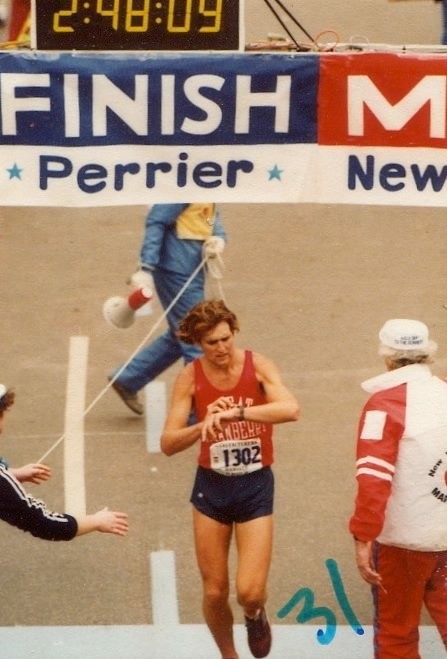
2. How should you pace a marathon?
The most common mistake is starting too fast. Men especially are far more impatient than women in the critical first 10k of marathons. If you are pacing well, the last 10k should be equal or faster than the first 10k. This means NOT starting like you were shot out of a cannon.
If your goal and training suggests a sub 3 hour marathon, you will need to average 6:52 pace but it would be a mistake to run that pace from the start. Instead you should run 7:00 to 7:05 pace and the 6:40s you will be running in the late miles because you were conservative early will feel great!
3. If you just aren't into the marathon during the first three miles, what should you do?
Breathe and move. Often a byproduct of the taper period is feeing lethargic in the early miles as you body remembers what to do. Many times tough early miles are an indicator that you'll have a great day.
How many times have we all heard the winners say, "I felt terrible early" and then they go on to win! Remember you are only human and it doesn't matter that you followed a perfect training plan down to the letter.
The marathon is still more like the common persons Mt. Everest versus something as predictable as telemarketers calling at dinner time. Remember marathon running is more like an expedition than a drive thru and not everyone summits.
(Marathon Man Gary Allen is a regular My Best Runs column. Gary Allen is one of a few runners who have run a sub three hour marathon for each of the last five decades. He is also a race Director and coach.)
by Gary Allen
Login to leave a comment
Millinocket Marathon
The Millinocket Marathon & Half has again joined forces with the Mount Desert Island Marathon, Half & Relay to create the Sea to Summit Maine Race Series, featuring two amazing events and a very special finishers medallion! This FREE event was started in 2015 to help a struggling Maine mill town that has been devastated by the closing of their...
more...Merry Christmas to all our My Best Runs followers from Bob Anderson and staff
We have been up here in Bend Oregon visiting my son and his family since Friday. My son Michael Anderson is our MBR results editor and post results as soon as they become available. Sometimes it is as soon as the first runners are crossing the finish line.
Michael (top photo) have carved out many running courses around his house. We have already run 22.2 miles since Friday and will at least get in six miles today.
Last Christmas Michael lived in Eugene and we ran the Pre Trail Christmas morning.
We have been running on Christmas Day forever. When Michael lived in the Bay Area I would run with my daughter Lisa and her family and then run with Michael in the afternoon.
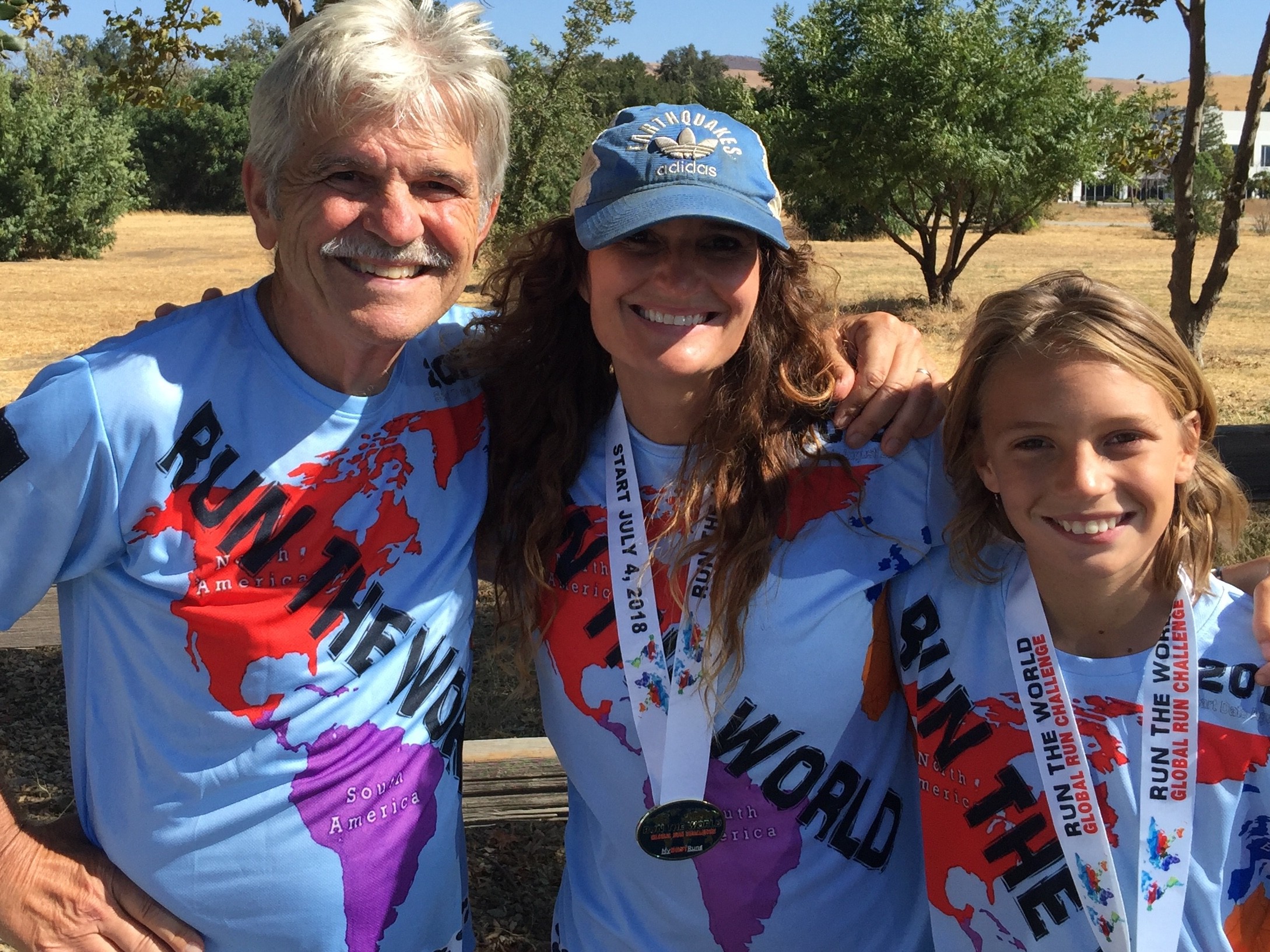
Lisa (second photo) and family lives in San Jose, California. She is our social media and newsletter editor. We celebrated Xmas with them before heading up to Oregon.
Both of my kids have run marathons, my wife has run a half marathon and many other races but after operations on both feet can’t run now (Catherine works out at the gym these days) and all my four grandkids run even including my two year old, Bear. Owen age 12 have already run a 5:52 mile. My son-in-law Justin has run a 1:27 half marathon.
We are a running family and have been forever. There is no better day than Christmas Day to get outside and get in a few miles. (Updated: Mike and I got in 7.1 miles through two inches of snow today.)
Two other members of our full time crew are Jaime and Manuel. They work at our La Piedad office.
Our webmaster Waitman Gobble keeps us all working and always is coming up with new features.
Gary Allen (Marathon Man Gary Allen) and Larry Allen (Larry Allen on Running) have signed on to do regular writing for us sharing their many years of running wisdom and knowledge with us. I am sure they will be getting out and getting in a few miles today.
Willie Korir is located in Nairobi, Kenya and has been sharing insights into what makes many runners in Kenya superstars. He has also run and logged 2851 miles for our three Run The World Challenges since July 4.
Our third Run The World team is not too far off of running and logging enough miles to circle the planet for the third time. I am so proud of our team.
Merry Christmas and Happy New Years to everyone. Be sure to get out today and let’s all make 2019 a super year. I know this is our plan here at My Best Runs.
by Bob Anderson
Login to leave a comment
Hitting the wall, what to eat and your longest training run were the first three questions for Marathon Man Gary Allen File 2
I am going to cover a lot of ground in my column here. Here are my thoughts on three questions I have been asked many times.
1. What is the best thing to do if you hit the wall at 20-miles in a marathon?
Firstly, you shouldn’t hit the wall in a marathon, if you do you are probably undertrained or you likely ran far beyond your abilities, especially in the early miles.
Rather than tell people what to do when they hit the wall I’d like to share how not to. In most cases you need to train for years to harden you mind and body to the rigors of what you are undertaking. There are no short cuts to avoid hitting the wall besides training hard and racing smart.
2. What should you really eat and drink during the two days before running a marathon?
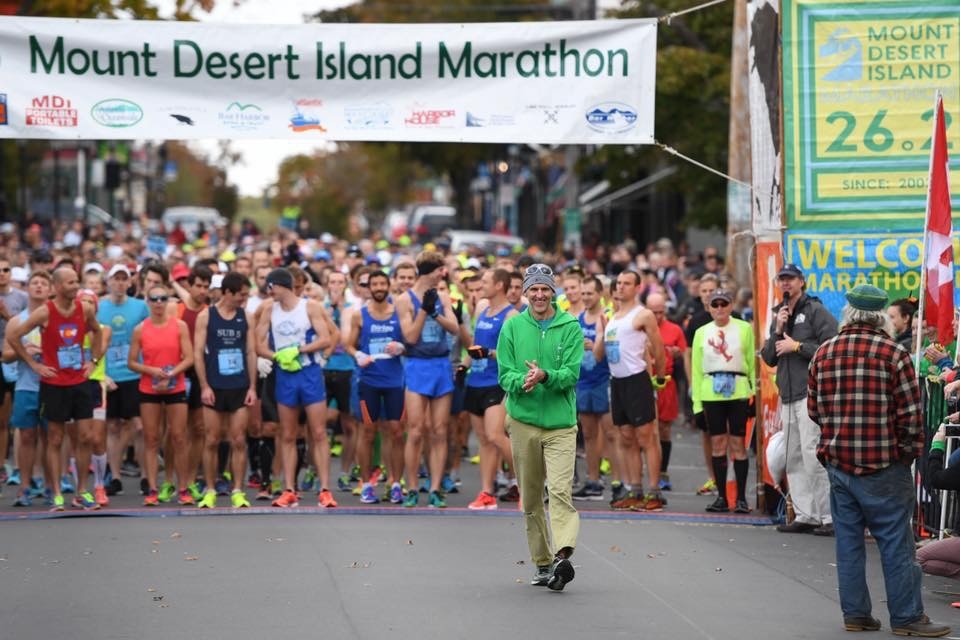
Eat and drink whatever you typically eat or drink . Sadly in this internet age there is so much information flying around it actually turns marathon running into the proverbial alligator under your bed it’s not.
Remember a marathon is a man made distance and if you turn it into something more than the long road race it is, you unintentionally give the race mental power you’ll need to run. The moment you start feeling bad, because of all this information that is pinging off your brain about what you should have eaten or drank, it is like being handed an anchor.
3. How long should you longest run be training for a marathon, when should it be done and at what speed?
You should be able to cover 28 -30 miles fairly comfortably. These long runs shouldn’t be timed but run at a very comfortable pace whatever that is. Long runs (aka time on your feet) are to help you build endurance and efficiency and not speed.
As far as frequency, I particularly hate weekly training schedules. Your body doesn’t know Sunday from Wednesday, instead I tell people I have coached to break down running into basic ingredients such as long runs, hills, speed etc and make sure you add all of these basic ingredients about every 10-12 days.
Running is not rocket science no matter how many people try to convince you otherwise. My advice is to go have fun and because you are having so much fun you’ll get much better at playing!
(Marathon Man Gary Allen is a regular My Best Runs column. Gary Allen is one of a few runners who have run a sub three hour marathon for each of the last five decades. He is also a race Director and coach.)
by Gary Allen
Login to leave a comment
Don’t use winter as an excuse instead make it a reason to go outside and run says Marathon Man Gary Allen File 1
I get lots of questions about winter running. Many wonder about traction on ice and snow or even how to dress in cold temperatures. At our just run Millinocket Marathon & Half held in Northern Maine the air temperature was between 4F and 6F at the start depending if you were standing in the sun or not.
It was pretty icy on the Golden Road as runners headed north towards Mt Katahdin. (pic).
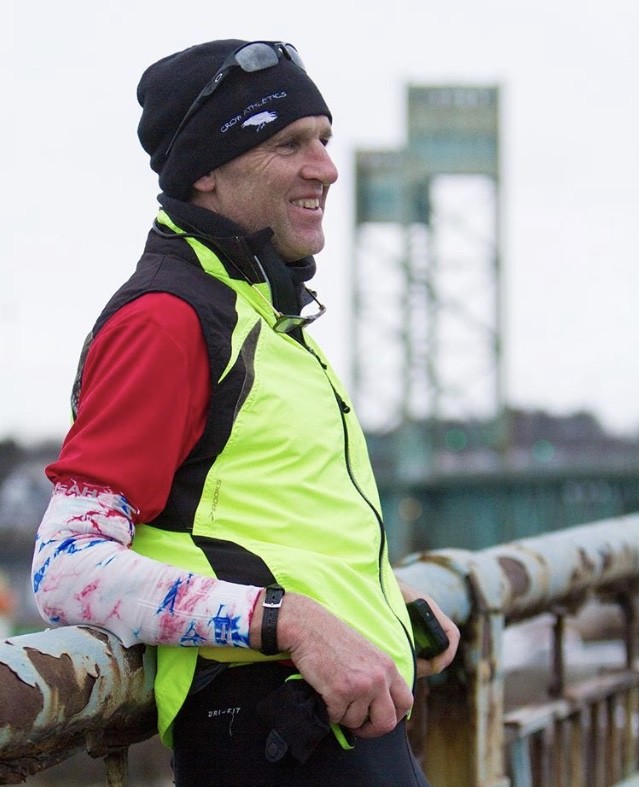
The fact is that running on ice is not that difficult in standard running shoes. When we run, vs when walking, our individual foot strikes are in contact with the ground for much less time, meaning we are almost already falling forward, coupled with the fact that when running we exert about 1.5 times of our body weight in down force per stride, which makes us into traction machines. The tricky part of running on ice and snow is turning or stopping. This is when we fall.
As far as what to wear? In temps below 10F it’s always about layers. For example a tech tank top, a tech short sleeve, a tech long sleeve, plus a wind jacket on top. Tights plus wind pants on the legs, two hats and face protection, if windy, and gloves with mittens over and you’re good to go!
As I like to tell runners, don’t use winter as an excuse instead make it a reason to go outside and run!
(Marathon Man Gary Allen - Read more from Gary here at My Best Runs. Gary is one of only a few marathoners in the world who has run a sub three hour marathon in each of the last five decades. In 2020 he wants to make it six. No one in the world has done that.)
by Gary Allen
Login to leave a comment
He hopes to be the only man on earth to run a sub three hour marathon in six consecutive decades - Marathon Man Gary Allen introduction
Gary Allen is going to sharing his thoughts and knowledge here in MBR’s Running News Daily under the banner “Marathon Man Gary Allen.”
In his first column I sent him some questions so we all could get a flavor of what makes this incredibly creative and talented man tick. I know I am looking forward to his writings here and I hope you are too!
So Gary, how did you discover running?
”I wanted to be a hockey player,” wrote Gary “but there weren’t enough kids on the small Maine Island I am from for a team. Then in 1972 I saw a skinny guy named Frank Shorter run into a stadium in Munich and I was like cool, you can win a gold medal just for running.”
How important is running to you?
“I have been involved with running for my entire life so assigning importance to who and what I am is like trying to describe how big the universe is to an ant. It is impossible for me to adequately portray how all encompassing running is to me as a part of my life,” says Gary.
Does being an accomplished runner help you put on first class events?
“Absolutely! The races I direct are direct reflections of what and how I expect races to be run. I would never ask anyone to do something I haven’t done so I merely apply my expectations and my creativity to every race I help to organize.”
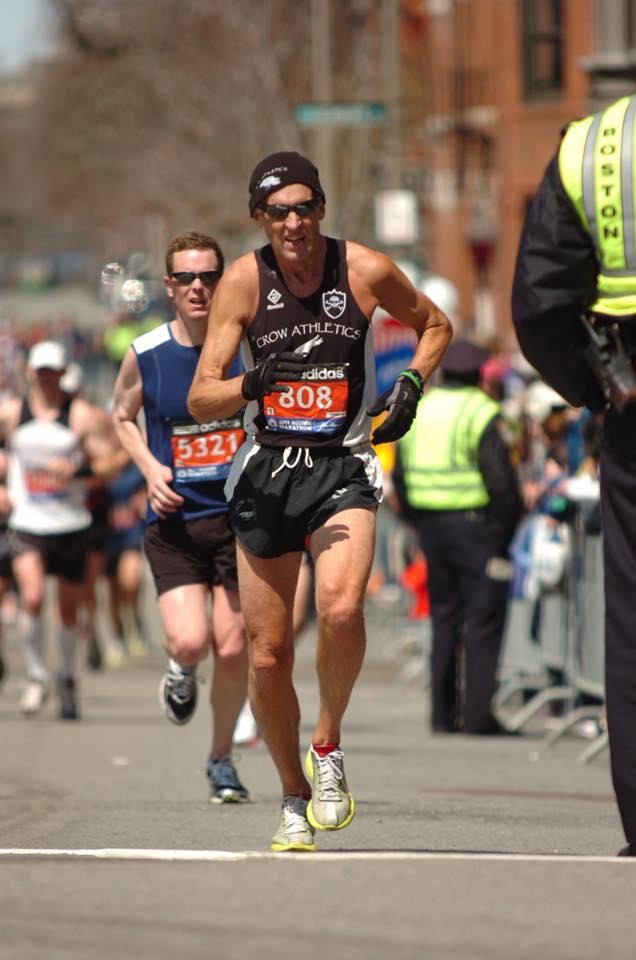
What one race you have run stands out as number one?
“Ahhhhh I can’t narrow it down to one race. However, Boston is always high on every list. I have one more to run to make a quarter century of unicorn chasing. The Burning Man ultra (photo) is a race I love beyond words. It helped change my thinking about how races run.
“A combination of an other worldly environment and no entry fee helped to expand my thinking. NYC (19 finishes) is where I was inspired to become a race director after watching Fred Lebow in action in 1980. It is reality true, if you can make it there you can make it anywhere!
Tell us about your coaching?
“I have coached at the HS level and coached many individuals over the years but my current team is at Mount Desert Elementary School where I have been the XC coach for the past 12 years.
“My philosophy is pretty simple, make running fun and kids will want to run more and the more they run the better they get at running which is of course even more fun for them!
“One of of our key workouts is called, zombie tag. We run in the surrounding Maine woods and trails and I assign a few zombies and the rest of the team tries to run away and not get caught.
“I also love to hide pizzas in the woods and have the kids run around and find them! Apparently my methods work cause in the past decade plus we have won almost every meet we’ve run!”
What are your personal goals as a runner?
“As a race director: I want to leave our sport better than I found it.
”As a coach: I want to inspire the next generations of runners to think about running for their entire lives. Rather they run or not matters little, but I want them to always remember and to love running knowing some will go on and be involved in our sport as competitors, coaches or even as race directors.
”As a competitor: I have accomplished pretty much every goal I’ve set for myself. Of late I struggle some with the naturally selfish nature of being a long distance runner.
“The single dimensional, ‘I’m training for,’ ‘Look at me’ has become less and less appealing to me over the years.
“As you know one of my proudest achievements is joining the five decades Sub 3 hour marathon club. At this point nobody on earth has run a sub 3 hr marathon in six consecutive decades so maybe it’ll give it a shot in 2020!
“Incidentally Joan Benoit Samuelson is the only other Mainer on the list and the only woman who has done this and I wouldn’t count out Joanie to run a sub 3 for her 6th decade.
Can you give us some background info?
“For Work: Lobsterman, Boat Builder, Carpenter, Yacht captain, Farmer, Auctioneer, Coach, Inspirational speaker.”
”Some Personal Records: Marathon 2:39:10, Half Marathon 1:13:20, 50 miles 6:21.
”My family settled on Great Cranberry Island in the 1670s. I am 12th generation. It’s a small offshore Island off the coast of Maine. It’s probably the most unlikely place to become a runner as the main road is only two miles long. I built my own house by hand from trees growing on my land. I dug my well with a shovel figuring they used to do it that way so why couldn’t I?”
by Bob Anderson
Login to leave a comment
Gary Allen, founder of the Mount Desert Island Marathon and the Millinocket Marathon named race director of the year
Login to leave a comment
It took Christopher Regan just a little less than six years to run 50 marathons in 50 states
Login to leave a comment
Shaun Bacon, 54, training for fifth Marathon des Sable in Sahara Desert
Login to leave a comment
Ultra-marathon man ready to run the Toughest Foot Race On Earth
Epic Adventures
Login to leave a comment
Ottawa Marathon Man Has Run Them All
Login to leave a comment


